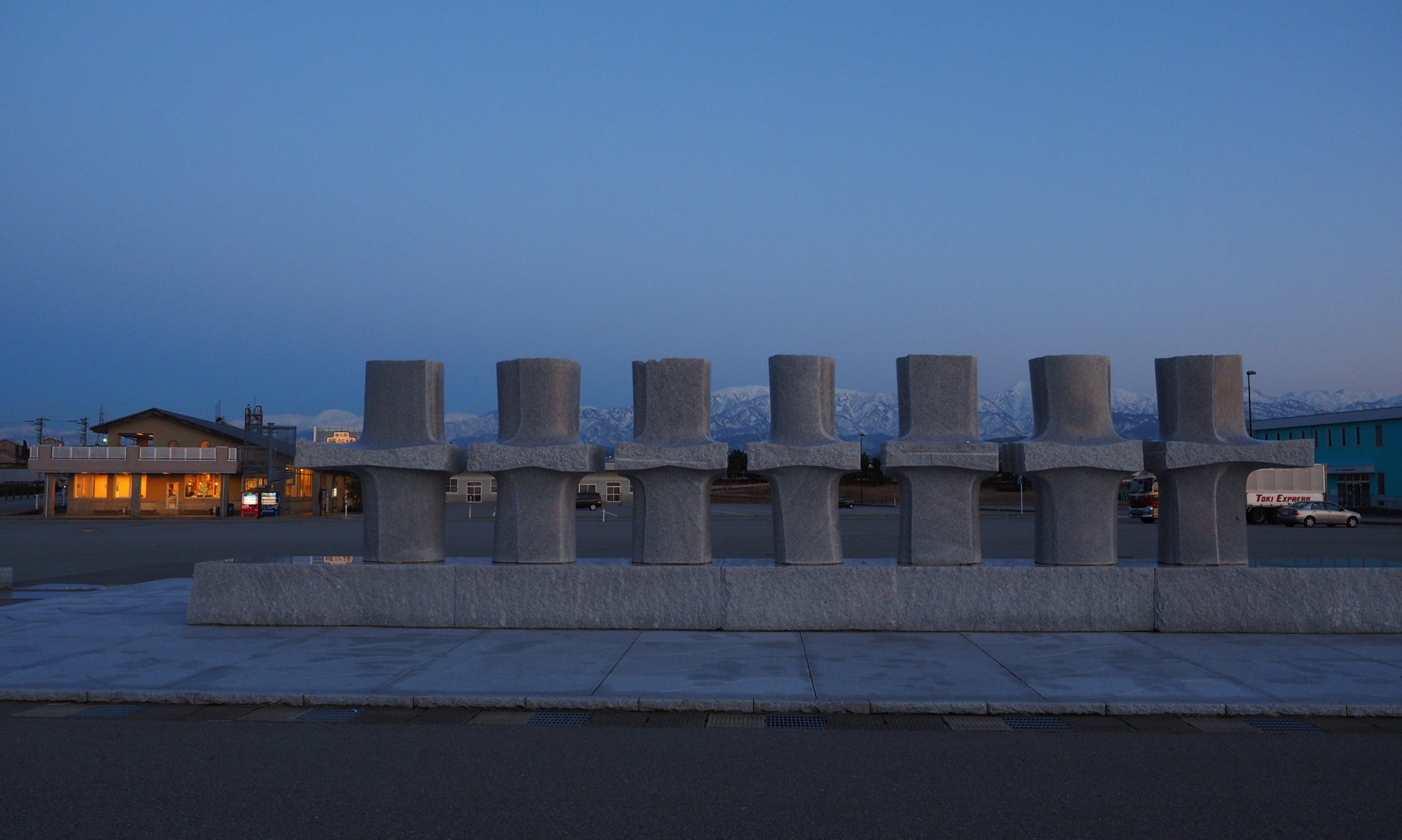✴ーIn English ー
ーーーーーーーーーーーーーーーーーーーーー
✴ー◆ーThere are some customs that are in Uozu City as same as in Kyoto CityーMany customs in Kyoto are the same as in the rest of Japan too. so it is easy to undestand many customs and many things in Uozu City .
ーーーーーーーーーーーーーーーーーーーーーーーーーーーーーー
✴ー◆京都と同様な文化と習慣が魚津市にも同じくありますから、京都の文化習慣は魚津市文化へも普及し当てはまります。さらに全国各地に普及し同じく当てはまる文化習慣があります。それで外国人へ京都について文化習慣の説明が、各地域の地元の文化と習慣説明にたいへん参考になるでしょう!!ー◆
✴ー◆ー魚津市の「たてもん祭り行事」も、「高岡御車山祭の御車山行事」や、京都市の「京都祇園祭の山鉾行事」岐阜県高山市の「高山祭の屋台行事」などと同じように、国の重要有形民俗文化財・無形民俗文化財の両方に指定されております。
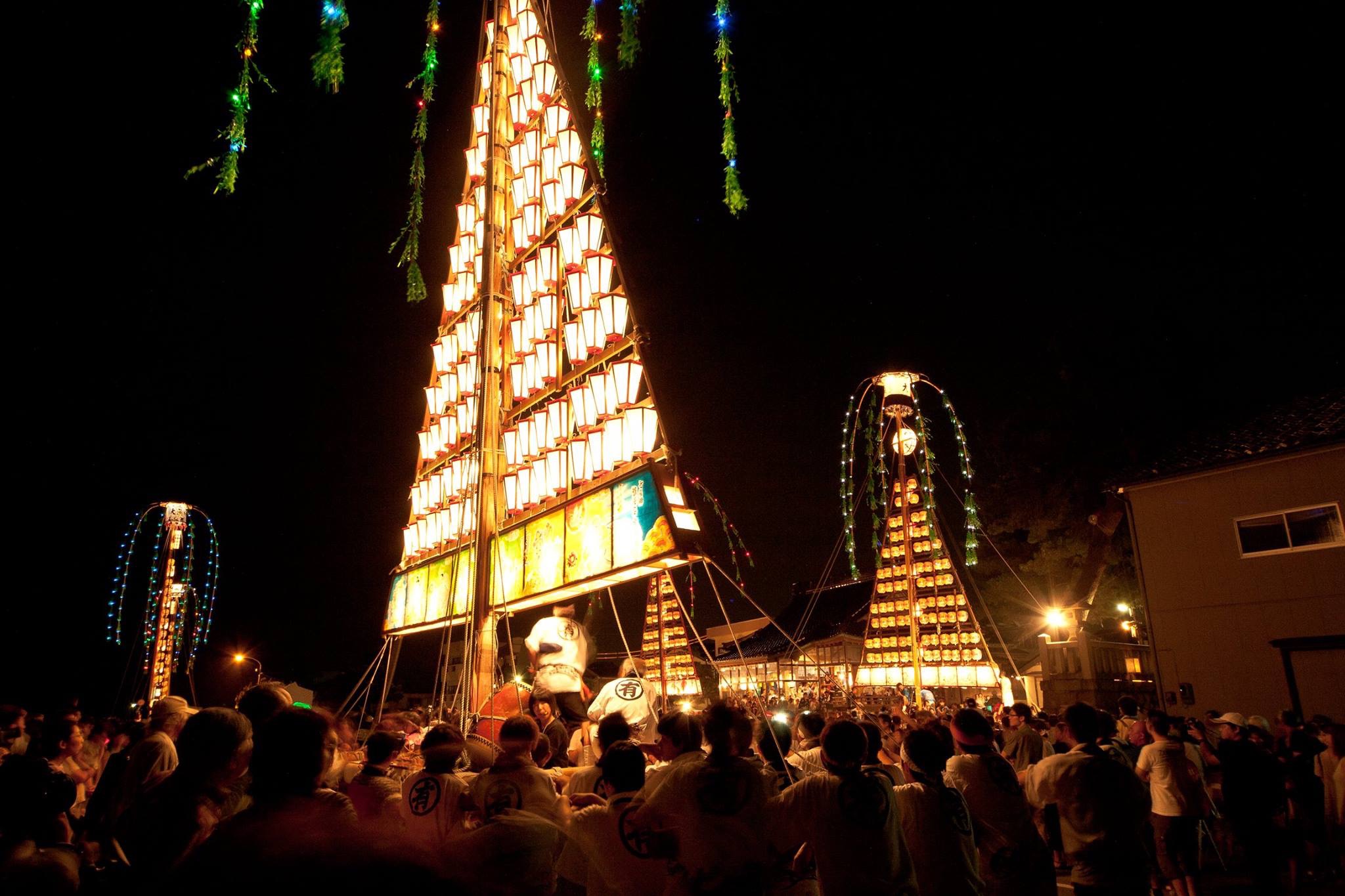
ーーーーーーーーーーーーーーーーーーーーーーーーーーーー
ー◆ Japaness culture 80 ◆ ーKyoto Cityu and Uozu City ー
◆ーユネスコ世界遺産登録の京都と日本文化の原点からの説明と紹介ー
◆1→京都(魚津)の基本
◆2→京都人(魚津人)の厳選ルート
◆3→京都(魚津)のイベント
◆4→京都(魚津)を体験
◆5→京都(魚津)の味
◆6→京都(魚津)のおみやげ
以上
ーーーーーーーーーーーーーーーーーーーーーーーーーーーーーーー
✴1→◆侍体験 / playing Samuraiー
ーLet’s pretend to be a samuraiu-ー ー侍を気取ってみましょうー
●What’s a samurai ? Samurai is Japanese knights
●You can also watch shows being made and take pictures with actors dress ed up in sumurai and ninja costumes. They have services to let you dress up too and mimic samurai sword fighting with the actors .
●
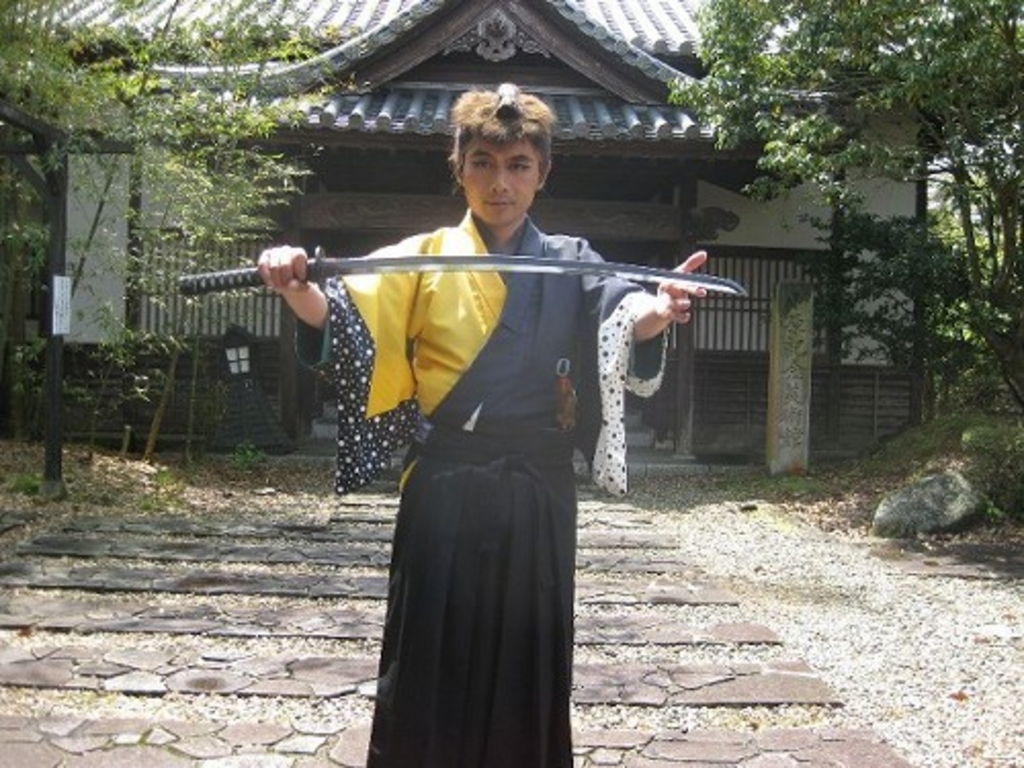
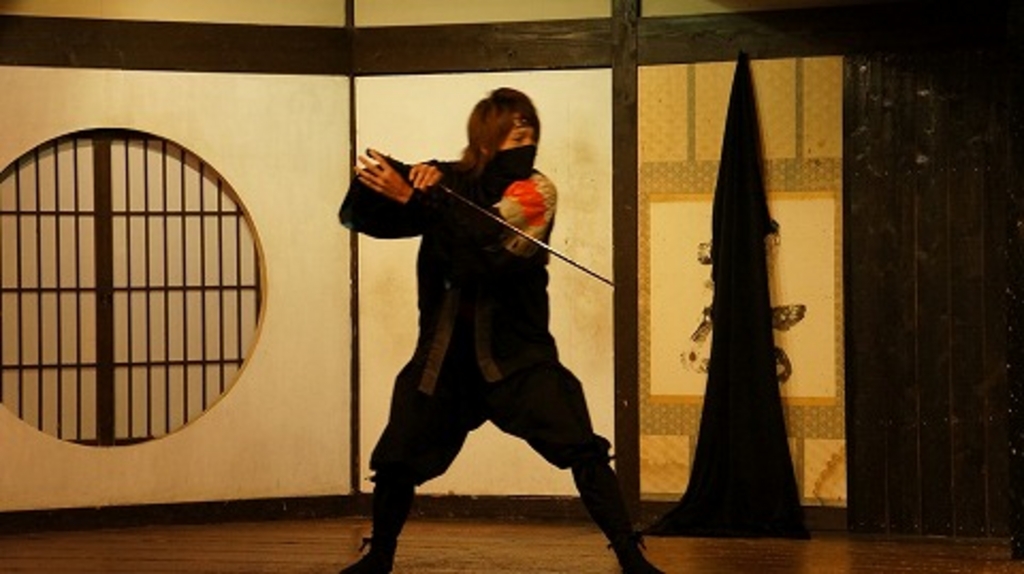
✴2→◆友禅染 / Yuzen Dyeingー
ーLet’s create our own Yuzen cloth .ー自分だけの友禅を作りましょうー
●Yuzen is one of the finest kimono dyeing techniques in the world . Its colourful and detailed patterns are achieved by numerous steps.
●A famous characteristic of Uzen is the use of starch .
●Many shops and galleries open their studios for visitors to watch and to experience Yuzen dyeing .
●ー~手描き友禅とは~
●友禅(ゆうぜん)とは、布に模様を染める技法のひとつ。日本の最も代表的な染色法である。 本来は、でんぷん質(米製)の防染剤を用いる手書きの染色を友禅と呼ぶ。
●日本の代表的な染め工芸のひとつを「友禅染め」といいます。一説には、江戸時代に法師友禅が扇に描いた染めが広まったのがはじまりだとか。糊を使うことが特徴で、染料のにじみを防いで動植物や風景を華やかに描くことができます。
●「手描き友禅」とは、生地を塗料に浸さず、一枚一枚職人の手によって模様を描き出した染めのことです。大きく分けると種類は2つ。直接描いてゆく「本友禅」と、模様の掘られた型を使って染めてゆく「型染め」です。
●最近では、インクジェットによって友禅の柄をプリントしたものも「友禅」と呼ばれることがあります。この場合、一枚ずつ手作業で仕上げる物とは違い、大量生産が可能です。
●また、地域によってこんな特徴があります。
・京友禅(京都):華麗な図案風模様で豪華な金銀箔や刺繍。公家の姫や大名の奥方好み。
・加賀友禅(石川):落ち着きのある写実的な草花模様を中心とした絵画調の柄。武家好み。
・東京手描友禅(東京):渋い色合いだが、都会のセンスと洒落感の漂う作風。町民好み。
ー●友禅の名は、江戸時代の京の扇絵師・宮崎友禅斎に由来する[1]。元禄の頃、友禅の描く扇絵は人気があり、その扇絵の画風を小袖の文様に応用して染色したのが友禅染である[2]。多彩な色彩と、「友禅模様」と呼ばれる曲線的で簡略化された動植物、器物、風景などの文様が特徴である。考案者が絵師であったこともあって、当時は日本画の顔料として使われる青黛や艶紅などが彩色に使用された。
その後、絵画的な文様を染めるために文様の輪郭線に細く糊を置き、隣り合う色同士がにじまないように工夫する技法が開発された。やがて、この技法が友禅染めと呼ばれることが多くなる[2]。従来は、この技法も友禅斎の考案とされていたが、現存する資料からは、宮崎友禅斎が友禅染の技法の創作、大成、改良のいずれにも関与したとは認められないとする説もある[3]。
京で生まれた京友禅の技法が、後年、友禅斎本人により加賀藩(現在の石川県)の城下町・金沢に持ち込まれ、独自の発展を遂げたものが加賀友禅である。
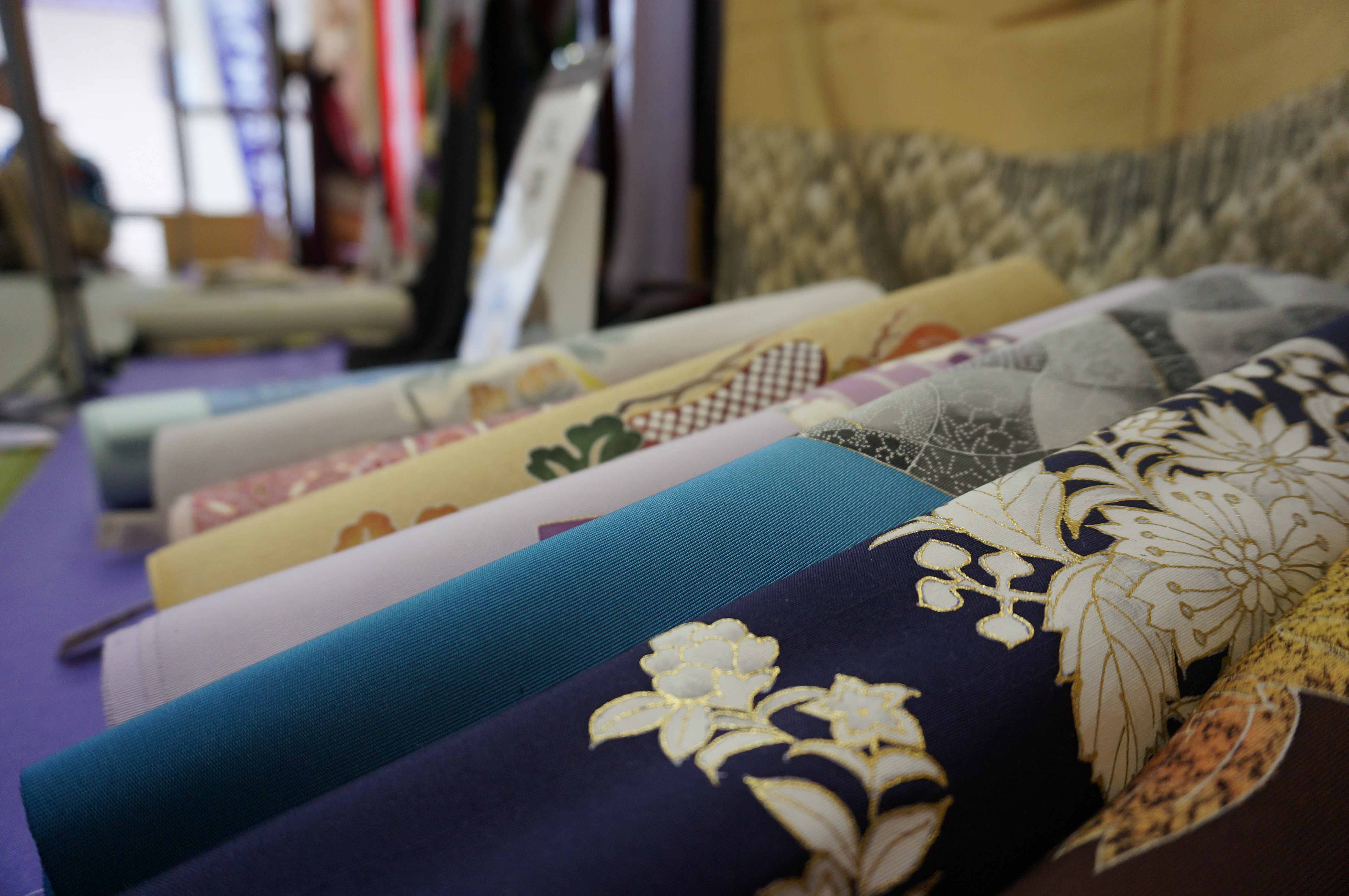
ー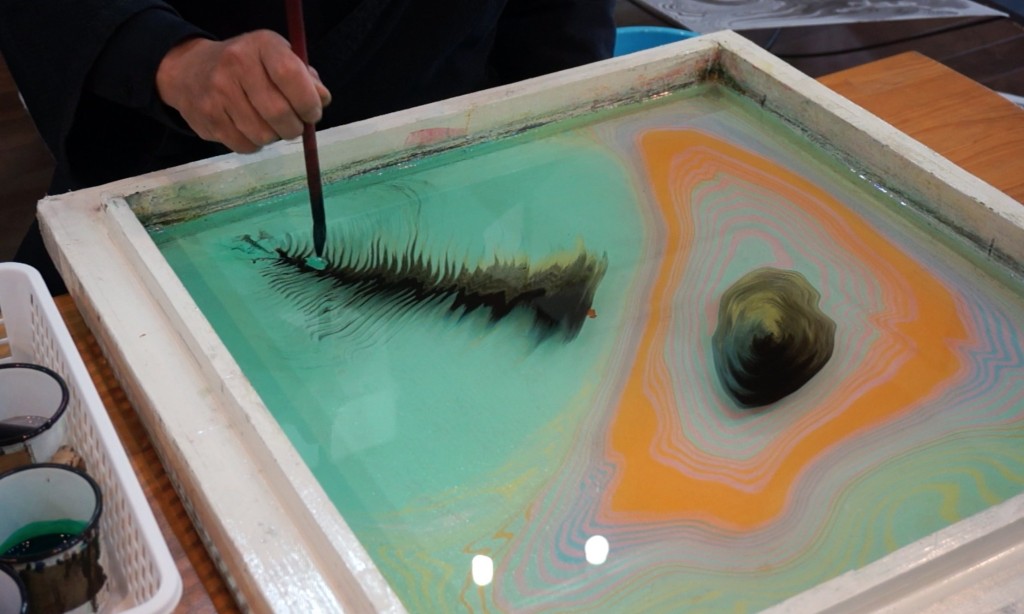
ー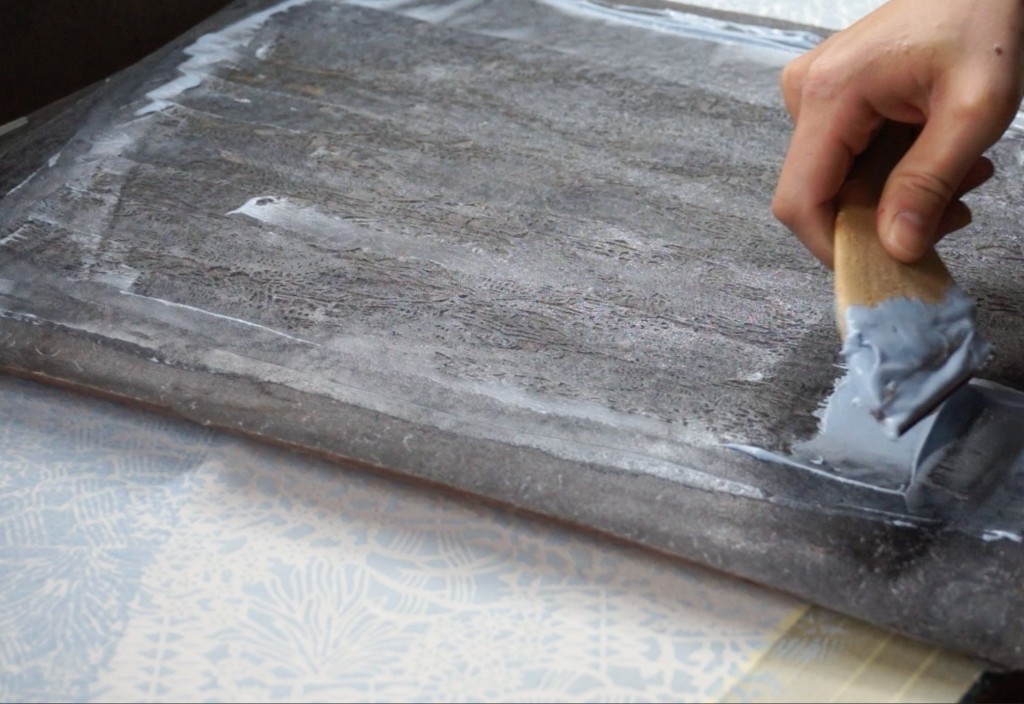
ー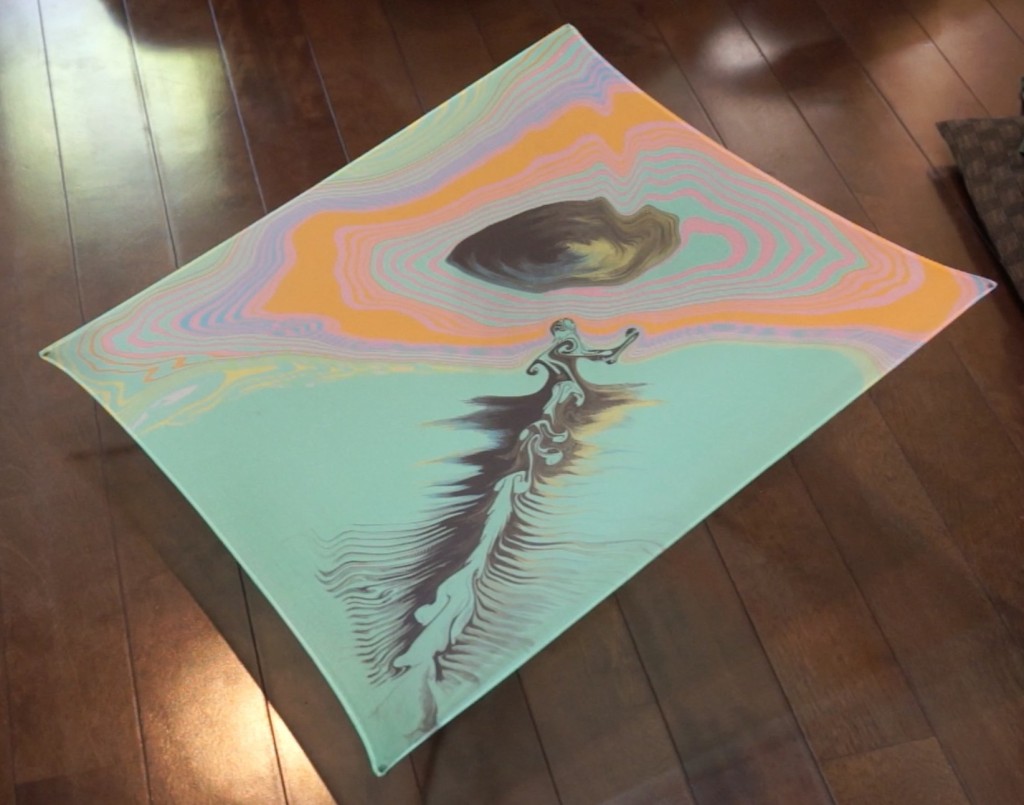
ー
ー
✴3→◆西陣織 / Nishijin Textilesー
ーLet’s hand-weave Kyoto textilesー手織りに挑戦しませんかー
●The Nishijin area is famous for its unique method of weaving silk fabtics.
●
●Vistors to Kyoto can participate in workshops in some galleries and centers for Nishijin textile .
●ー西陣織(にしじんおり)とは、京都の先染め織物をまとめた呼び名である。西陣とは、応仁の乱時に西軍(山名宗全側)が本陣を置いたことにちなむ京都の地名。 行政区域は特別にはないが、この織物に携る業者がいる地区は、京都市街の北西部、おおよそ、上京区、北区の、南は今出川通、北は北大路通、東は堀川通、西は千本通に囲まれたあたりに多い。応仁の乱を期に大きく発展したが、応仁の乱より昔の、5世紀末からこの伝統が伝えられている。 また、「西陣」と「西陣織」は「西陣織工業組合」の登録商標。
●ー歴史は応仁の乱の戦火を逃れて避難していた職人たちは、乱が終わると両軍の本陣の跡地である東陣・西陣に帰還し諸国で習い覚えた明などの新技術も加えて京織物を再興した。
●西陣で織物生産を営んでいた秦氏ゆかりの綾織物職人集団を「大舎人座」といい東陣の「白雲村」の練貫職人集団と京都での営業権を争ったが、1513年(永正10年)の下知によって京都での絹織物の生産を独占、1548年(天文17年)に「大舎人座」の職人のうち31人が足利家の官となり「西陣」ブランドが確立された。「西陣」の織物は富裕町人の圧倒的な支持を受け、18世紀初頭の元禄~享保年間に最盛期を迎える。
●1872年(明治5年)にはフランスのリヨンに職人の井上伊兵衛と佐倉常七と吉田忠七を派遣してジャカード織機を導入、3年後には荒木小平が国産のジャカードを誕生させた。その結果、空引機(高機)では出来なかった幾多の織物を産み出し量産を可能にした。現在も西陣は日本の織物の最高峰を占めている。

ー
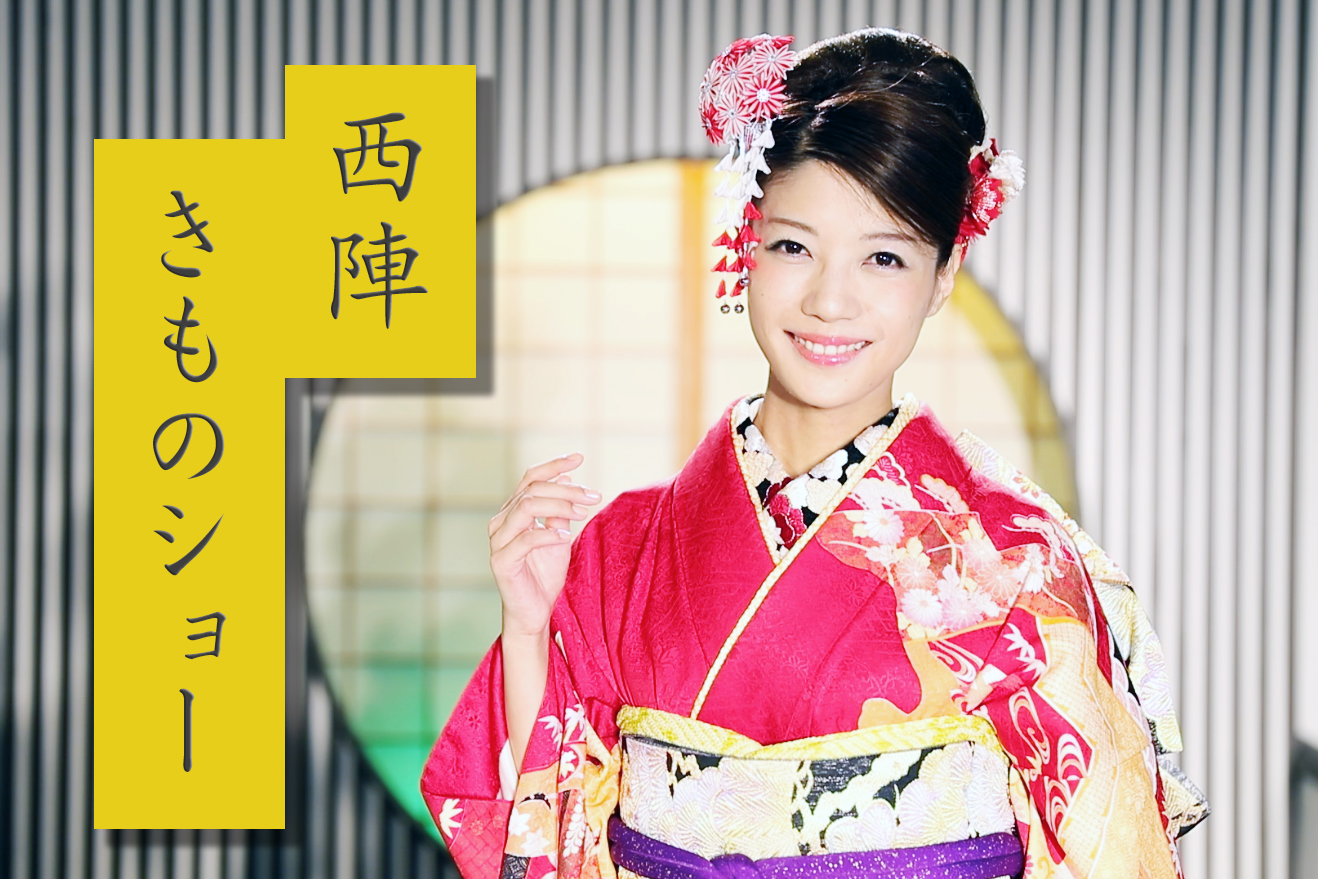
ー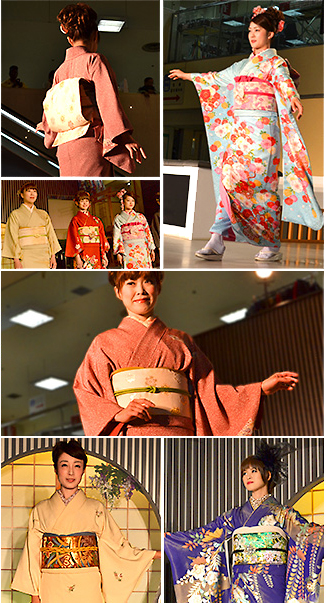
ー
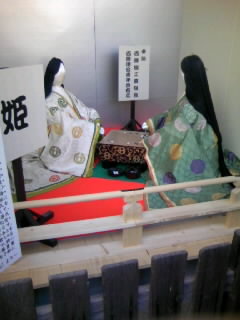
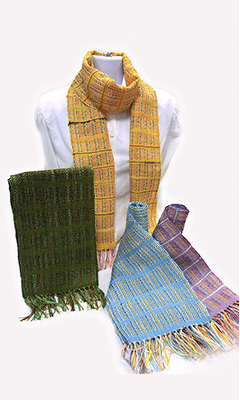 ー
ー
ー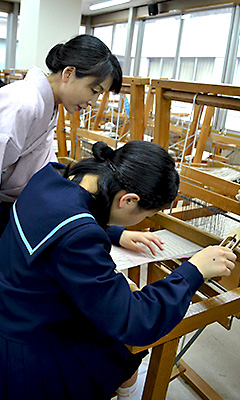
ー
✴4→◆町家 / The Machiya Housesー
ーA renaissance of the ”beds for eels.”ーうなぎの寝床が生まれ変わっているんですー
●Machiya is a traditional wooden architectural style that can be seen in central Kyoto . The machiya layout allows people to lives their daily lives and operate their businesses in the same building .
●Because of their long and narrow shapes, the machiya houses are nicknamed ”beds for eels ” Typically, the front windows are covered by wooden lattices and there are Japanese courtyards in the middle and sometimes another one in the back of the house .
●Some machiya have been renovated and converted into restaurants,or cafes,or bed and breakfasts for visitors to enjoy .
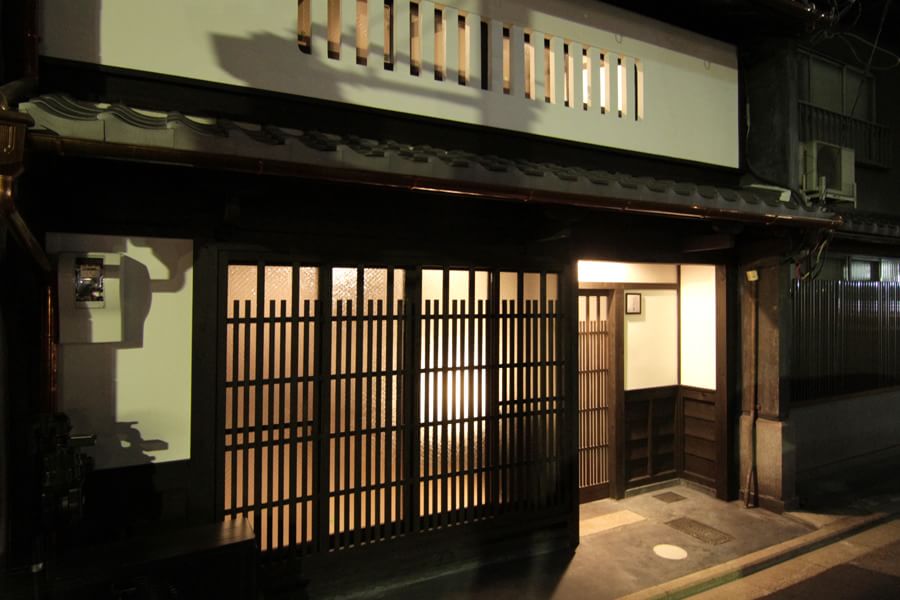
ー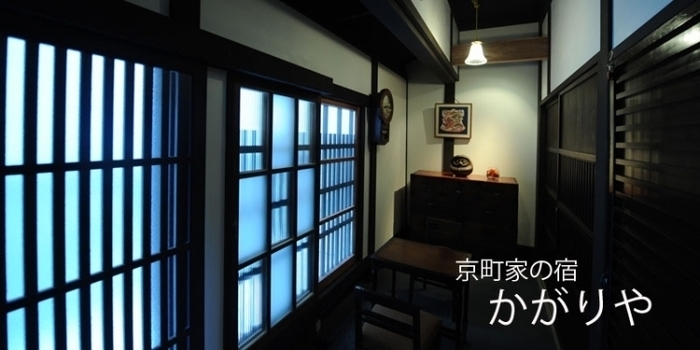
ー 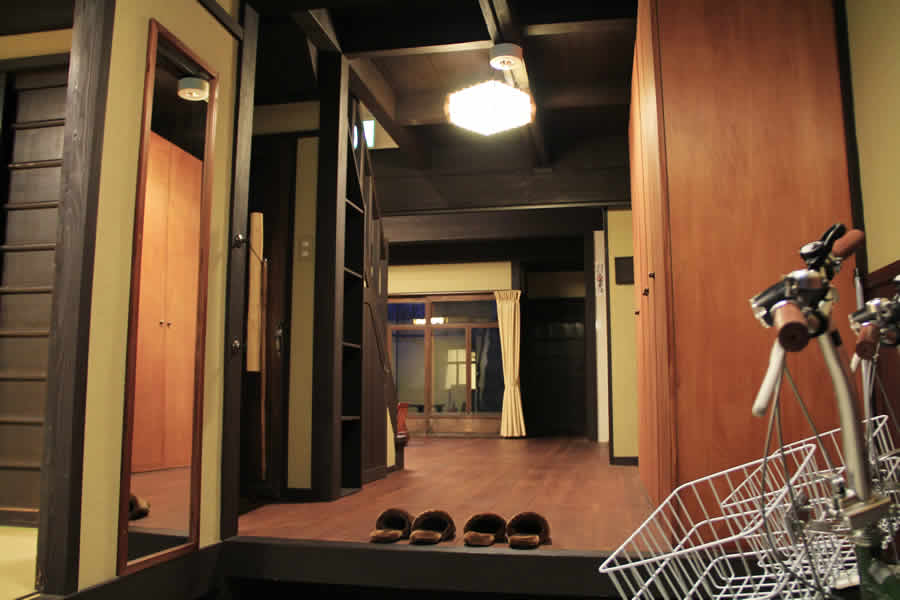
ー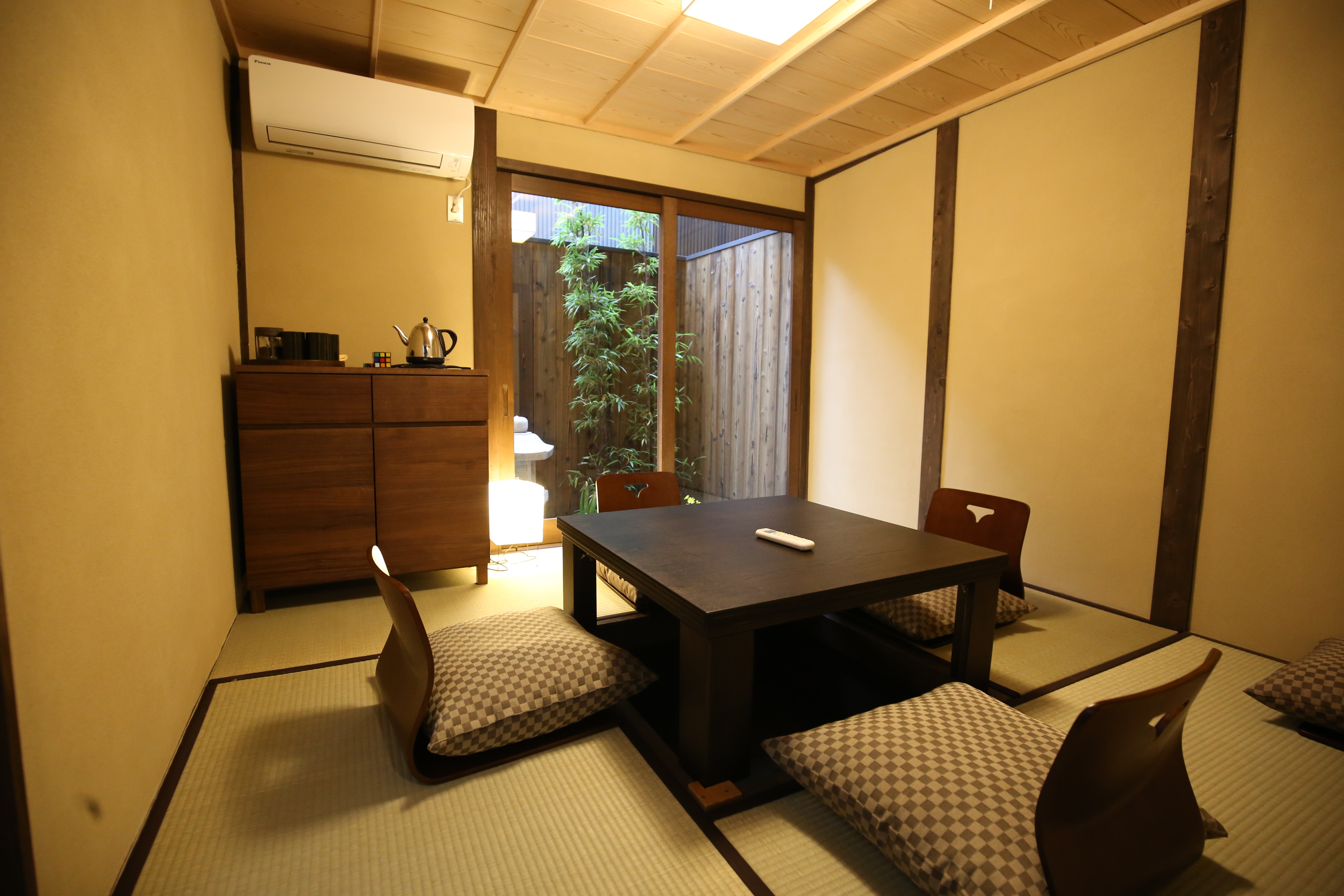
ー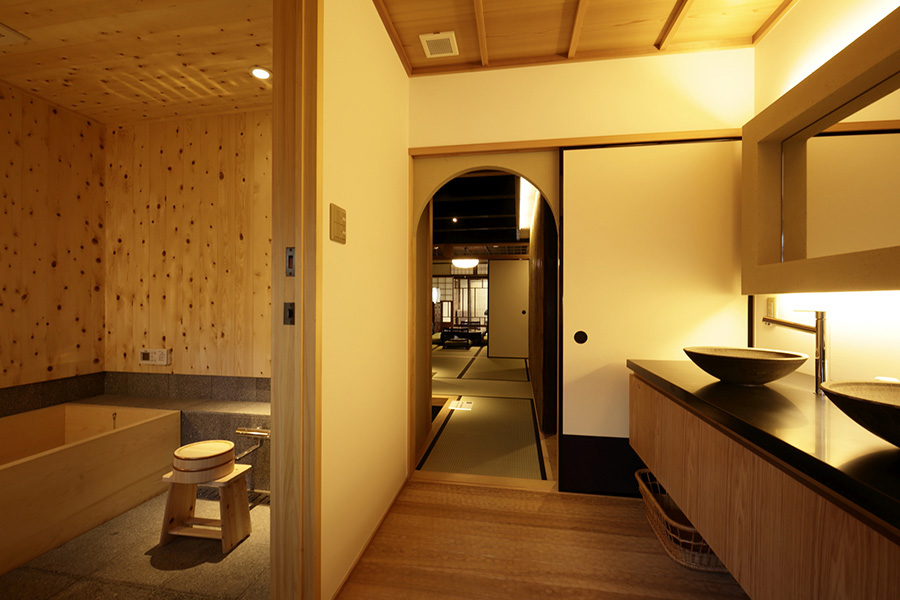
ー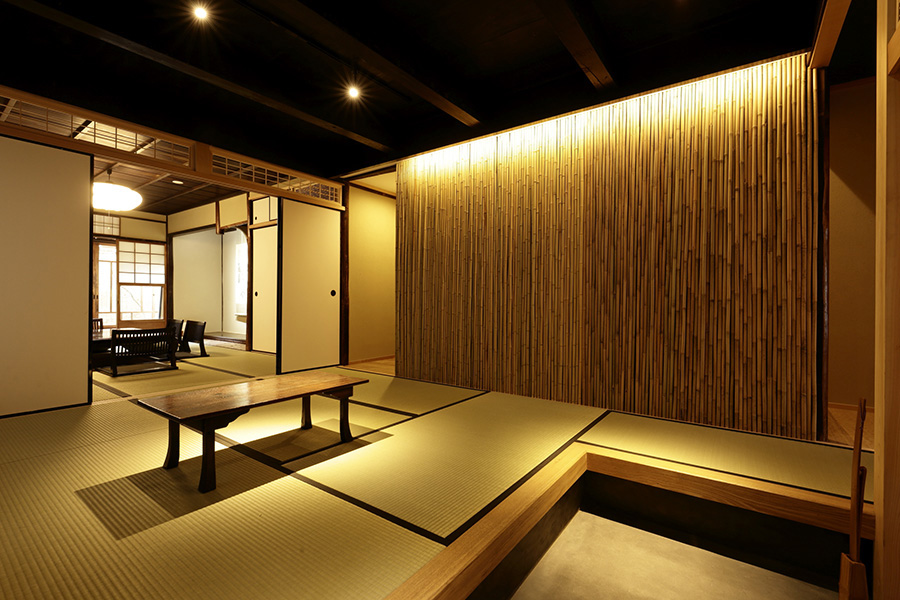
ー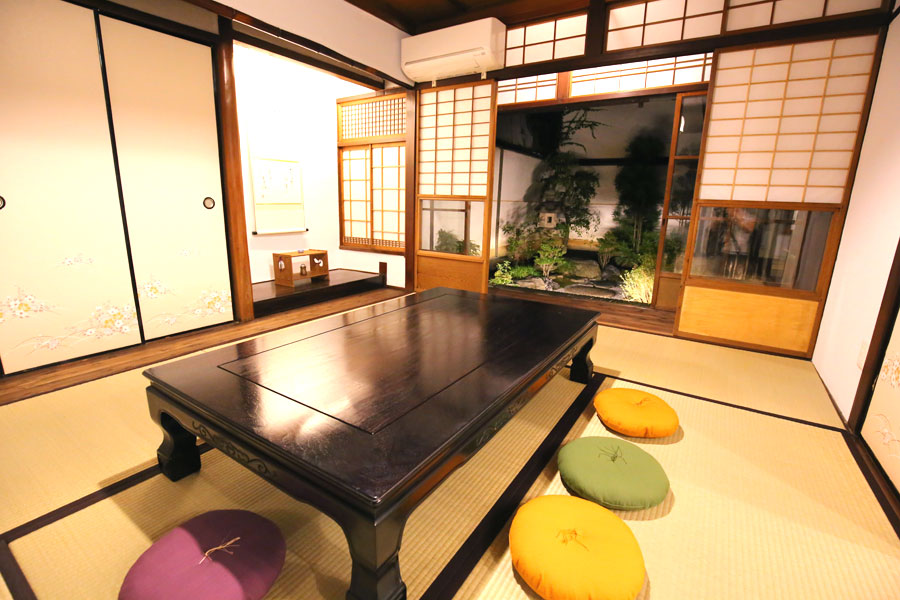
✴5→◆博物館とギャラリー / Museum and Galleriesー
ーYou will see much more than Buddhist statuesuー ー仏像だけではありませんー
●In Kyoto , in Uozu City,there are many museums and art galleries . The Kyoto National Museums and the Museum of Kyoto have exhibits related to kyoto’s traditional culture.
●The Kyoto National Museum has an amazing collection of traditional art. The Museum of Kyoto features Kyoto’s history .
●Besides the large museums,there are many smaller private gallaries . In these galleries , you can see beautiful crafts, such as fabrics and ceramics, and paintings.
●For people who are interested in Japanese manga,there is the Kyoto International Manga Museum . it has 300,000 manga !!
ー
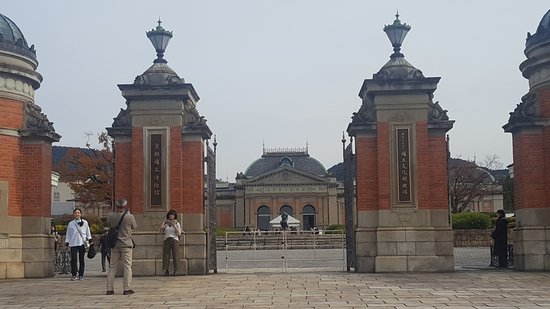
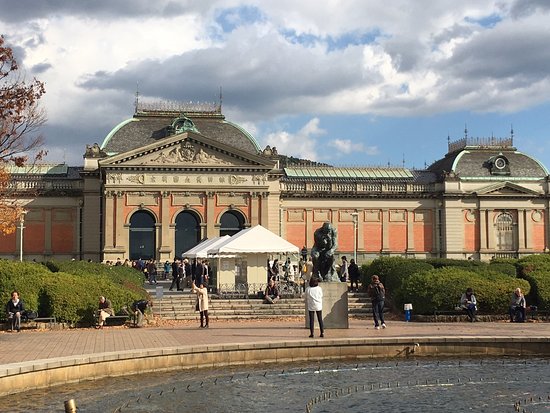
✴6→◆宿泊 / Accommodationー
ーyou can have a variety of the traditional accommodation style .ー
●In Kyoto , you have a wide selection for accommodation style :from a Holiday Inn to a machiya bed and breakfast. In a machiya bed and breakfast, you will enjoy the atomosphere of an old downtown house .
●The ryokan is also a popular choice . Many Japanese and foreigners dream of staying at Kyoto’s classy ryokan . The old wooden buildings have beautiful tatami rooms and Japanese gardens .
●You will enjoy kaiseki course meals served in the famous Kiyomizu ceramics .
●You also have the choice of staying at a temple lodge. The package often includes a shojin meal and a Zazen session .
ーmachiya houseー

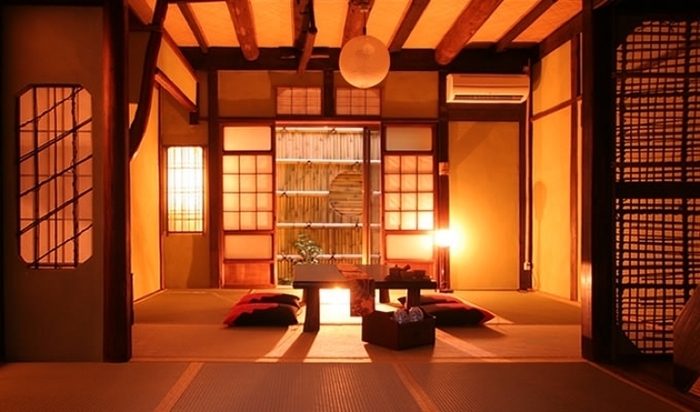

✴7→◆京都のならわし、全国へ普及/ The Customs of Kyote ctiyー
ーThere are some customs that are typical of Kyoto .ー
●Many customs in Kyoto are the same as in the rest of Japan . But there are some customs , the religious ones in particular , that are more typical in Kyoto than in other areas .
●For example , there is a Buddhist event called jizo-bon , or the Summer Buddhist Festival for Children . Children get together to pray and play in front of their local jizo statue . Jizo is a type of Bosatsu and it is said to protect children .
●Another example is Okera Mairi ,or visiting Yasaka-jinja on NewYear’s eve through New Year’s day .
●ー大福茶(おおふくちゃ)とは梅干や結び昆布の入ったお茶のことで、お正月に頂いて、無病息災を祈願する風習があります。
「大福茶」の起源は平安時代、都に疫病がはやった時に、空也上人がお茶を人々に施したところ、多くの病人が平癒し疫病がおさまったとか。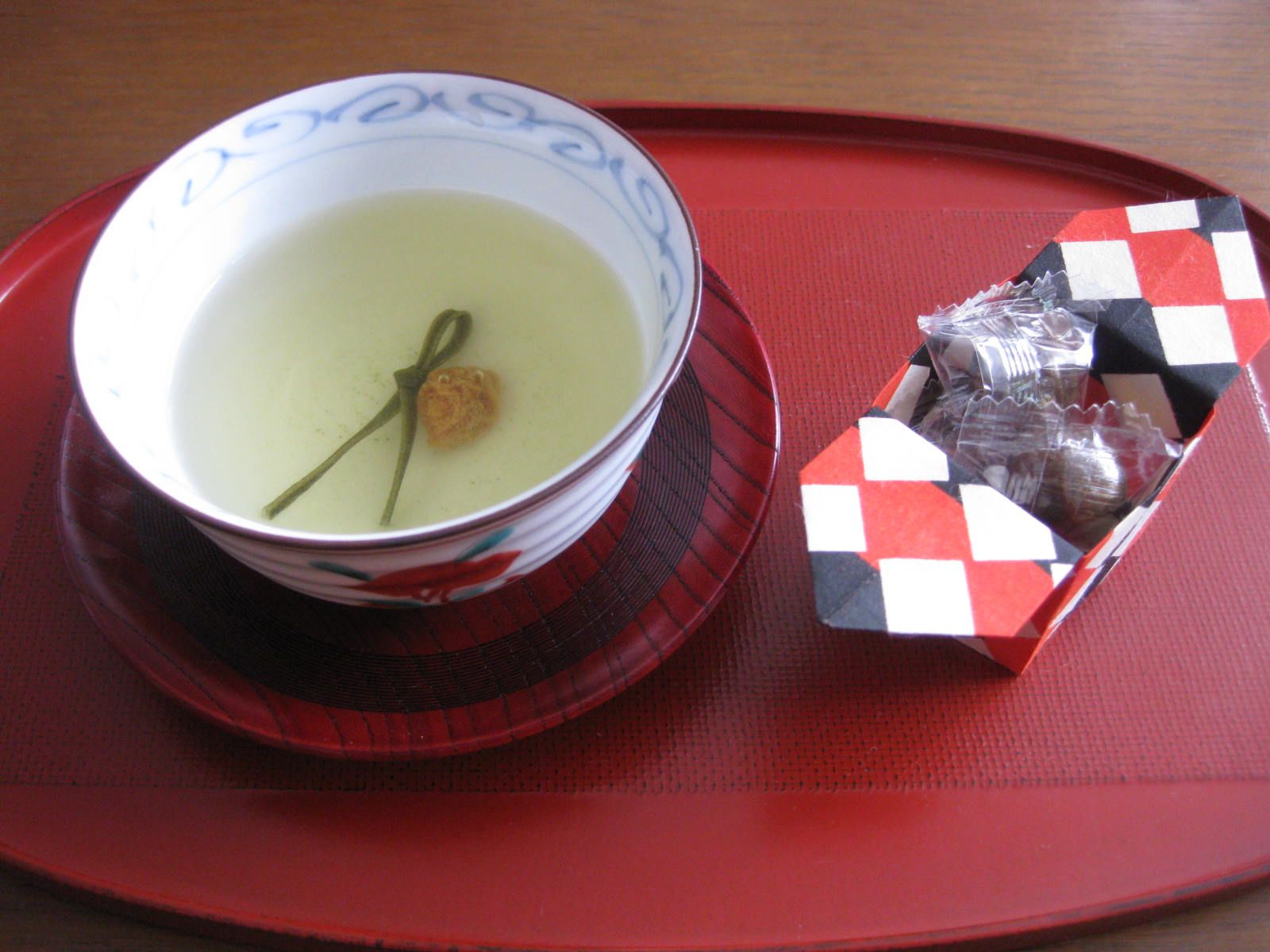
✴8→◆京都人と同じ気質 / Kyotoitesー
ーpeople say it’s hard to understand their true feelings .ー
●It is said that Kyotoites are friendly , but they are also indirect and seem to hide their true feelings . many Japanese not born in kyoto say it’s hard to know what people from Kyoto are really thinking .
●If this is true, it may be because Kyoto was the home of aristocrats for centures . they had to be sensitive about what they say among the different aristocratic groups.
●Some people in Kyoto say that ” true Kyotoites ” are those whose families have lived in Kyoto for at least three generations .
●Others say the family tree must go back to the 16th century !!
ー
ー
✴9→◆漆器 / Lacquerwareー
ーElegant , but strong .
●Kyoto’s lacpuerware is considered artwark more than tableware. People in Kyoto use lacquerware on special occasion like celebration of the New Year holidays .
●Because of the many steps performed by skilled artisans, Kyoto lacqureware is very durable .
●Even though it looks delicate , it can last for generations.
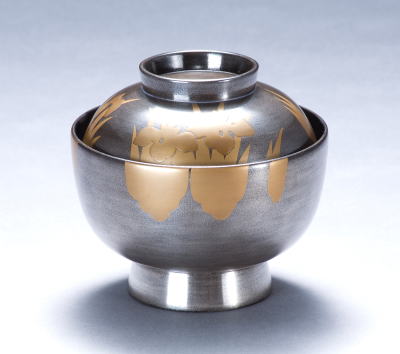
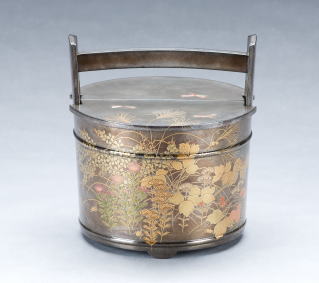
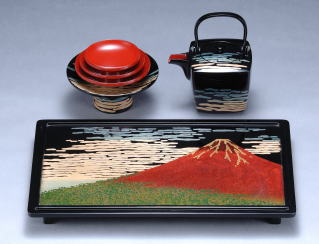
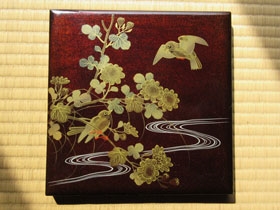
✴10→◆ お香 / Incense ー
ーHow about taking home a fragrance of Kyotoー ー京都の香りをもって帰りませんか? ー
●More than1,000 years ago in Kyoto, the noble people of the imperial court play a game called ko-awase. In this game, they would pass around incense sticks and identify them just from their fragrance .
●お香のたき方
お香の楽しみ方には、お部屋に香りを漂わせる「空薫」と
掌中の香りを静かに鑑賞する「聞香」があります。
「空薫」にはお線香や香木、練香などいろいろなお香を用い、
「聞香」には小さく割った香木を用意します。
空薫(そらだき)
お線香ではなく、時には香木や練香で「空薫」を楽しみませんか。おこした炭をうずめた香炉で一手間掛けてお香をたいてみる…… ゆったりとした時間の流れの中に溶け込んでゆくようです。このたき方で練香・香木・印香が楽しめます。
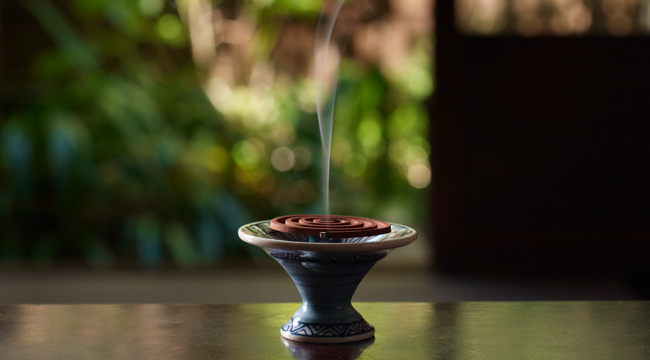
ー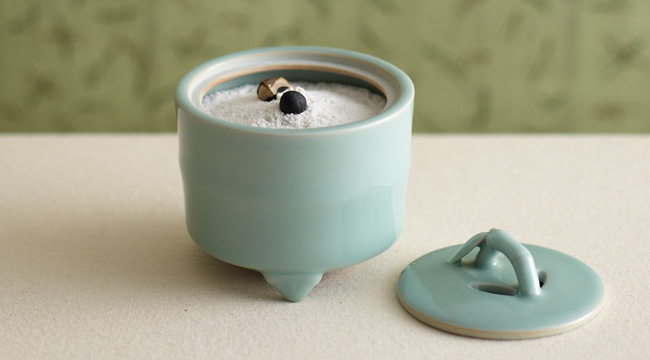
✴11→◆ 扇子 / Folding Fansー
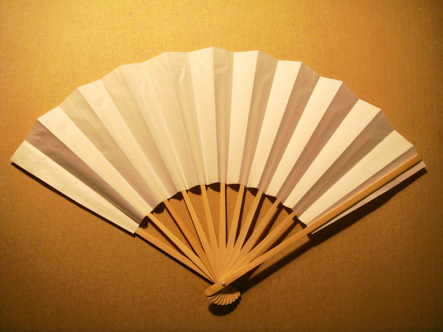
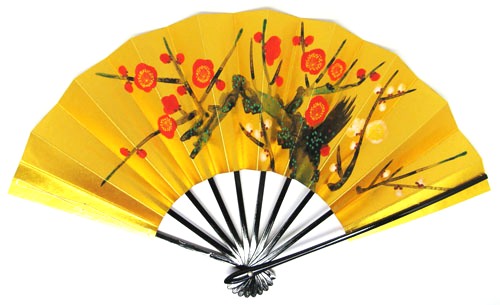
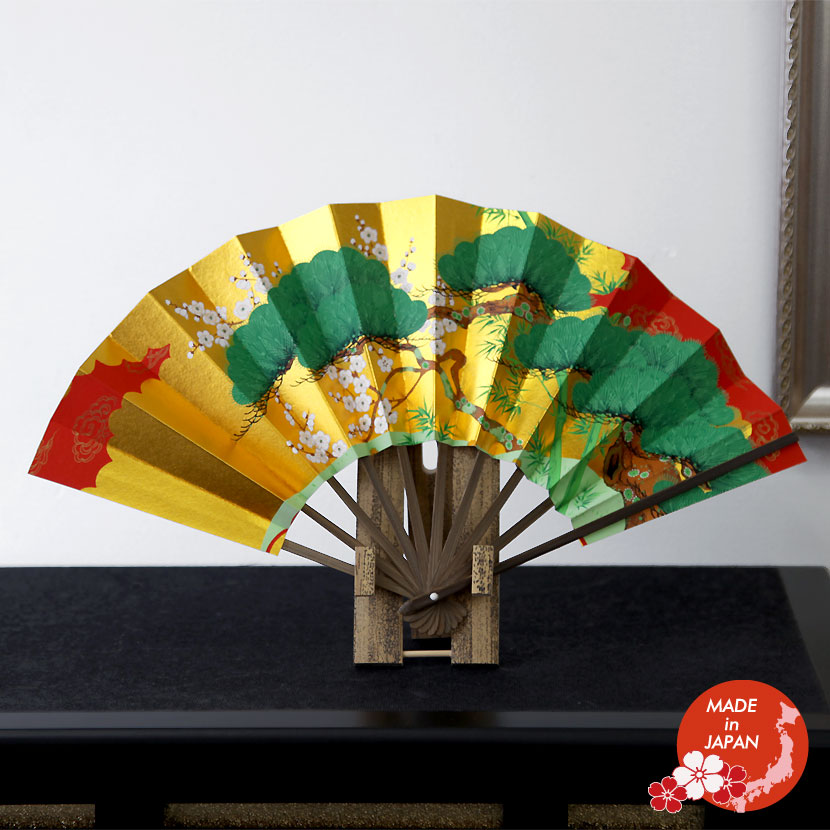
✴12→◆西陣織着物と洋服 /
●
✴13→◆骨董品 / Antiques
ーMaybe, you’ll find a hidden treasure.ー ー貴重な掘り出し物が見つかるかも。ー
●If you have good eyes, you might find treasures that are worth entering in a museum collection !!
●On Shinmonzen street in the Gion area and on Teramachi Street south of the Old Imperial Palace, you will find many shops that sell antiques .
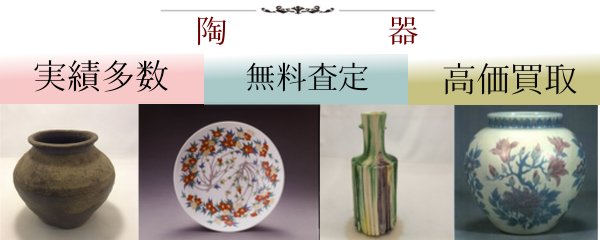
✴14→◆ 風呂敷 / Furoshiki,the Japanese Carrying Cloth ー
ーA versatile carrying bag ー ー多目的用途のバッグになります。ー
●Furoshiki is a cloth of about one square meter that is used for wrapping things to carry .
●It is usually made of cotton or silk and comes in traditional Japanese patterns .
●In Japan, people often use furoshiki to carry formal gifts .
●The furoshiki is not part of the gift, though,so after the gift is given, it is folded up and taken back home .
●You can even make furoshiki a stylish handbag. There are different ways to wrap things depending on size and shape .
ー
✴15→◆作務衣 / Samue, the Japan ese Casual Wearー
ーIt’s the perfect house clothes ー ー部屋着に最適です。ー
●It’s okay to wear this outside as casual wear too, samue colored with the traditional indigo dyeing technique makes an especially fashionable outfit .
●you can enjoy the beautiful indigo blue after washing your samue many times . If it’s real indigo dye, even the”wash-out”blue is very nice .
●Originally , samue were work clothes for apprentices of Buddhist monks. Unlike traditional kimono , they’re practical and easy to put on .
●They are very light so you can move easily . It is ideal for wearing in the house .
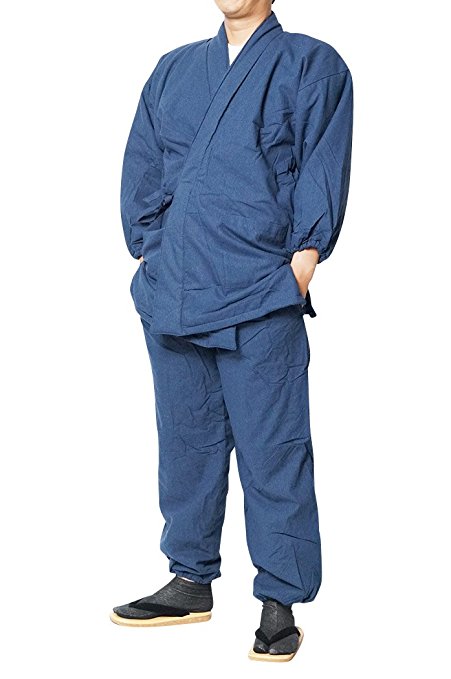
ー
✴16→◆ 和紙 / Japanese Paperー
ーIt uses less chemicals than Western paper ー洋紙ほど化学薬品を使いませんー
●The Japanese have been using washi to make lantern, fans, and interior door as well . The Japanese have been using paper since 7th century : 5 centuries before the West . Since then , washi making has developed together with calligraphy and art .
●In the West , pulp is the main material used to make paper . Washi , which is Japanese paper uses other kinds of fibers from plants such as hemp and bamboo .
●Although it’s sometimes called ”rice paper” in English, Rice is used only sometimes . Generally , washi requires less chemicals than Western paper and undergoes more manual processing .
ー和紙(わし/わがみ)は、日本古来の紙。欧米から伝わった洋紙(西洋紙)に対して日本製の紙のことをさす。日本紙と同義。
ー「和紙」は世界中の文化財の修復にも使われる一方、「1000年以上」とも言われる優れた保存性と、強靱で柔らかな特性を期待して、日本画用紙、木版画用紙等々、独特の用途を確立しつつある。また、日本の紙幣の素材として用いられる。一部工芸品の材料・家具の部材・紙塩など一部の用途にも使用され、「和紙」と呼ばれる以前の江戸時代には日本中で大量に生産され、建具の他に着物や寝具にも使用されていた。近年では、天然自然の素材として、インテリア向けの需要が高まったり、卒業証書をはじめ、様々な習い事のお免状用紙などにも試用されることもある。「和紙」の産地は全国に点在しているが、近年では日本古来の伝統的な製法による紙は、原料生産を含め生産者の減少(小規模な家内工業的施設が殆どのため)による供給の減少が危惧されている。
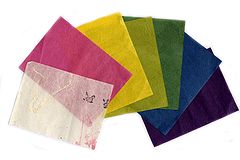
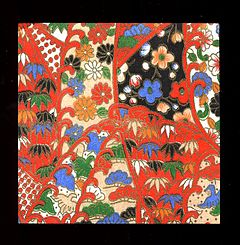
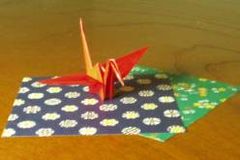
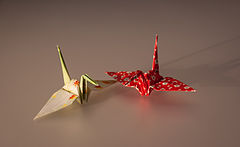
ー
✴17→◆お守り / Good Luck Charmsー
ーThere are many kinds to bring you good luck.ー
●Temples and shrines in Japan sell omamori,or good luck charms . The charm is usually made into a small piece of paper or wood and sold in an embroidered cloth bag . Sometimes , You will find a key-chain type .
●There are many kinds of omamori . For example,you can buy an omamori for your oriental zodiac sign for general good luck .
●Other kinds include ones for traffic safety are popular among car erivers .
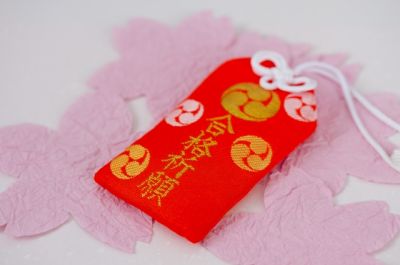
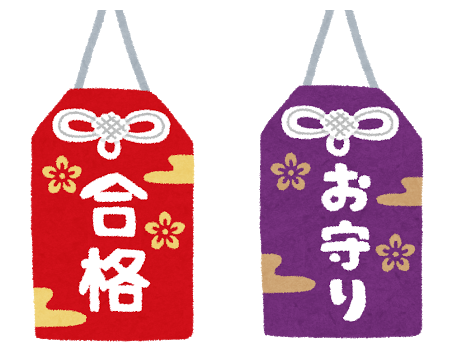
ー
✴18→◆竹細工 / Bamboo Craftsー
ーHow about Add a touch of Japan to your homeー家に和風の飾りはいかがですか。ー
●Have you seen the bamboo forests in the Arashiyama area ? The western part of Kyoto is famous for its bamboo forests . Supported by materials from this area . the bamboo craft develope in Kyoto .
●You will find beautiful works of bamboo craft used in kaiseki course meals, tea ceremonies ,and flower arrangement . Some traditional house use bamboo shades as exterior window coverings .
●In the past , bamboo was used wherever people use plastic today. In Kyoto, craftsmen have been making various item including baskets bags and vases, making use of the bamboo’s flexibility .
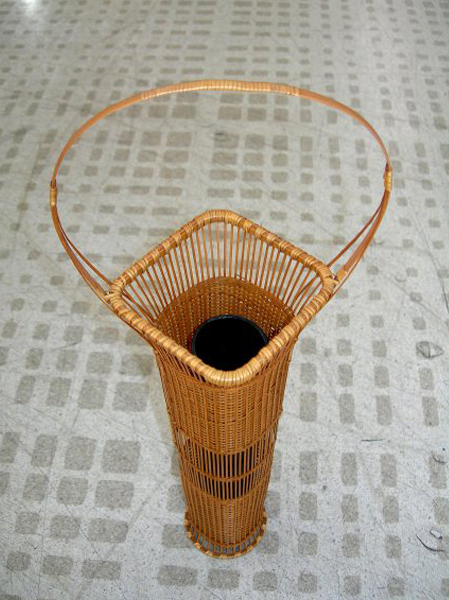
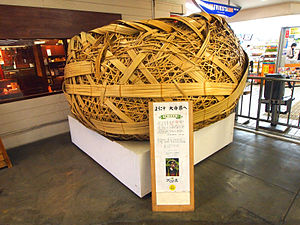
ー
ー
✴19→◆座禅 / Zazenー
ーLet’s practice Zen meditationー ー坐禅を組みましょうー
●Zazen is a practice of Zen meditation perforned in a seated position.it is one of the basic training methods of Zen Buddhism .
●Basically ,you sit down with your back straight and focus on your breathing
●One of the goals is to achieve peace of mind and to see your true self .
●If
●This is done to help you regain your focus .
●Zazen session are held at many of the Zen temples in Kyoto throughout the year. Some of them wellcome visitors .
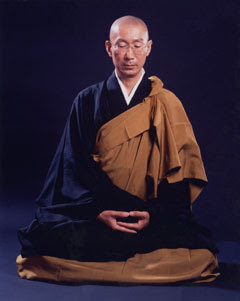
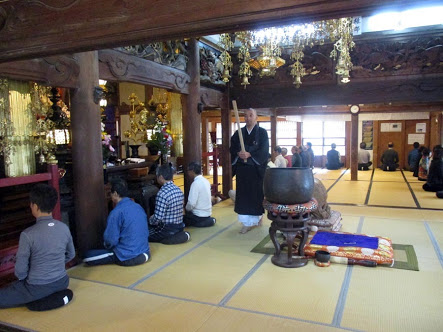
✴20→(1)ー◆お茶屋と料亭 / Ochaya and Traditional Fine Restaurantsー
ーMany do not accept first-time customers.ー ー一見さんをお断りのお店も多いですー
●ーお茶屋さんは、芸妓さんと舞妓さんを置屋さんから呼んで、お座敷でお客様が遊ぶ場所です。お料理屋さんから仕出しを取ったり、芸舞妓さんとお座敷遊びをしたりおしゃべりをしたり、色々な楽しみ方があります。
●
●
●
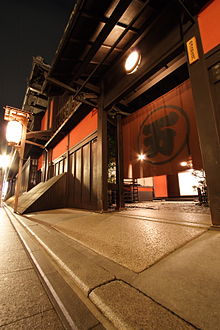
ー
✴20→(2)ー◆芸妓体験 / Dressing up as a Geishaー
ーLet’s become a geisha.ー ー舞妓さんになりましょうー
●ー舞妓さんとは、京都の花街で、唄や踊り、三味線などによって、宴席を楽しくさせるための仕事をする女性のことで、芸妓の見習い修行の段階です。
●ーお茶屋さんは、芸妓さんと舞妓さんを置屋さんから呼んで、お座敷でお客様が遊ぶ場所です。お料理屋さんから仕出しを取ったり、芸舞妓さんとお座敷遊びをしたりおしゃべりをしたり、色々な楽しみ方があります。
●ー置屋さんとは、舞妓さんや芸妓さんが所属している「家」のことです。仕込さんの頃から住み込みで修行をし、舞妓さんになってからも置屋さんが衣食住の世話をします。
ー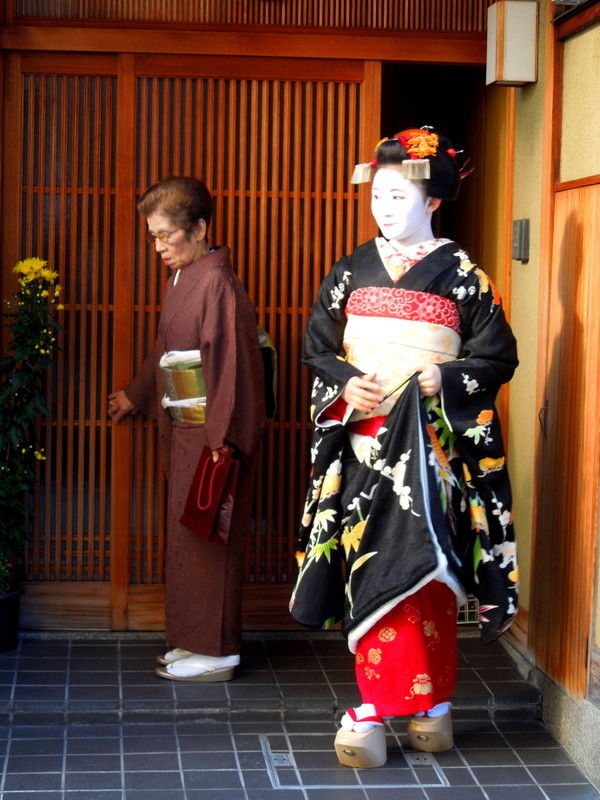
ー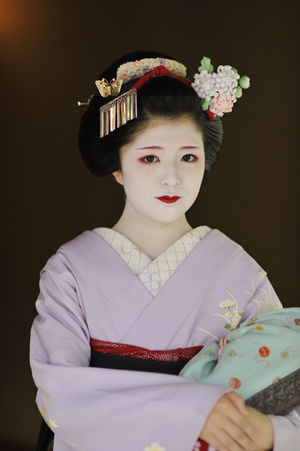
ー
●ー京都の花街。
京都には現在、上七軒、祇園、祇園東、先斗町と宮川町の五つの花街があります。それぞれに歌舞練場というお稽古場があり、芸妓さんと舞妓さんが所属しています。お茶屋さんと置屋さんが軒を連ねた風情ある町並みと、行き交う芸舞妓さんの姿はとても京都らしい風景です。
✴20→(3)ー◆祇園界隈ー
ーYou can see some geisha !!ー ー芸者さんに出会えます。ー
●
●
●
●
●
ー祇園界隈ー
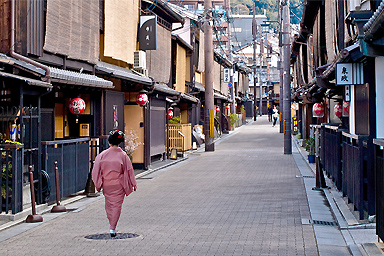
ー八坂神社ー
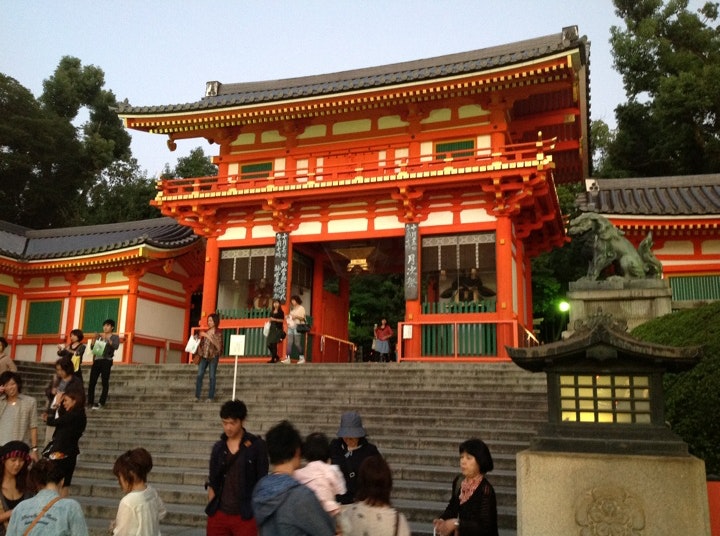
ー
✴21→◆五山の送り火ー
ーIt’s letters of flame float in the sky.ー ー文字が炎になって空に浮かびます。ー
●This is a Buddhist event held on the last day of the Ancestor Remembrance Festival . Large bonfires are lit on five mountains that surround the city of Kyoto . The bonfires are in the shape of characters. Some of the strokes in these characters are more than 100 meters long .
●The burning letters appear to float in the sky . It is said that the souls of the ancestor return to this world during this period . The bonfires are lit to help the souls return to the afterworld .
●The Bonfires likely started in the 15th or 16th century .
●ー京の夏の夜空を焦がす京都の名物行事・伝統行事。葵祭・祇園祭・時代祭とともに京都四大行事の一つとされる。―般的に、送り火そのものは盆の翌日に行なわれる仏教的行事であり(「報恩経」)ふたたび冥府にかえる精霊を送るという意昧をもつものであるがこれも、仏教が庶民の間に深く浸透した中世、それも室町以後のことであろう。通説によれば、この夜、松明の火を空に投げ上げて虚空を行く霊を見送るという風習があり、京都五山の送り火は、これが山に点火されてそこに留ったものであるといわれる。
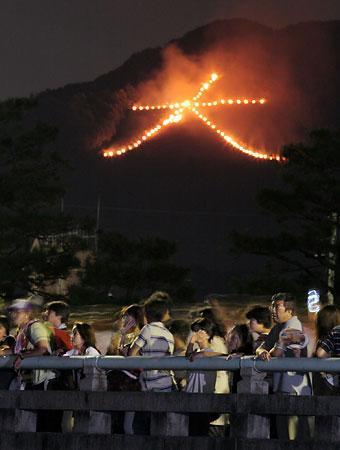
✴22→◆薪能 / Noh by Torchlightー
ーNoh is Japan’s oldest theatrical art .ー
●Noh is designated as an Intangible World Heritage . it is a poetic theater dating back to the 14th century , which makes it Japan’s oldest theatrical art. it has drama , dance , and music .
●Noh is performed based on classical scripts .
●Noh is home to several noh schools . In June you can enjoy a noh performance by torchlight at the Heian Shrine .
●
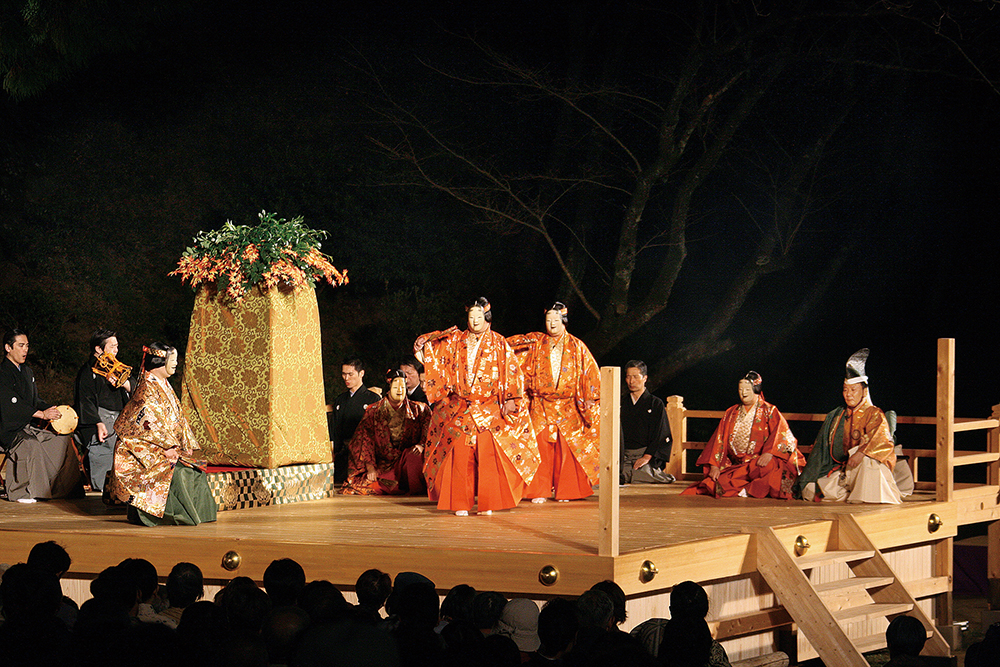
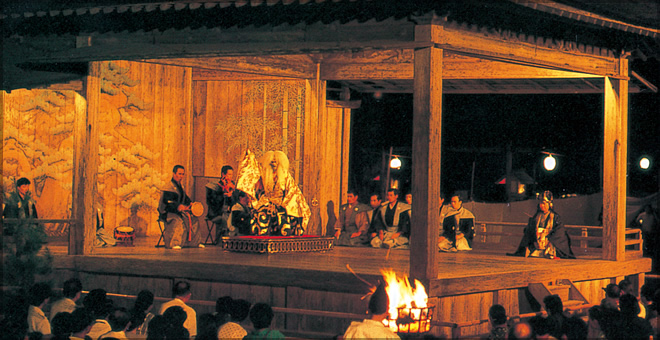
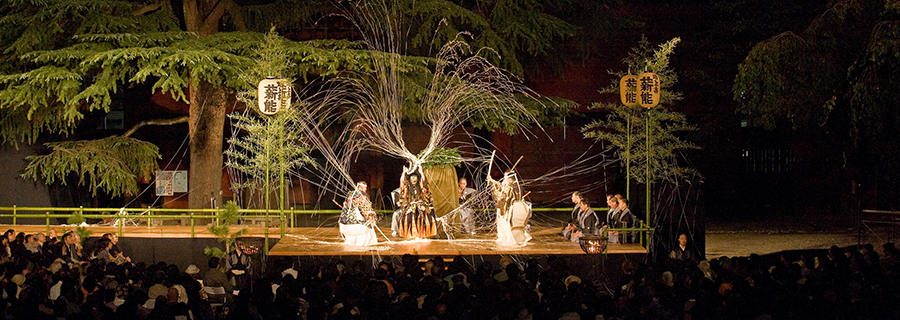
✴23→◆ 葵祭りー
ーYou can see the people of the court from 1,000 years ago ー
●The Aoi Festival ,held on May 15th every year, is one of Kyoto’s three major festivals . It is a parade of hundreds of people dressed in clothes worn in the court around 1,000 years ago .
●This old festival was originally ordered by an emperor in the 6th century in hopes of a good harvest . The festival even appears in The Tale of Genji, the famous classical novel written 1,000 years ago .
●The one-kilometer parade starts from the Old Imperial Palace Gardens , goes through Shimogamo-jinja , and ends at Kamigamo-jinja .
●ー葵祭(あおいまつり、正式には賀茂祭)は、京都市の賀茂御祖神社(下鴨神社)と賀茂別雷神社(上賀茂神社)で、5月15日(陰暦四月の中の酉の日)に行なわれる例祭[1]。石清水八幡宮の南祭に対し北祭ともいう。平安時代、「祭」といえば賀茂祭のことをさした。
●ー石清水祭、春日祭と共に三勅祭の一つであり、庶民の祭りである祇園祭に対して、賀茂氏と朝廷の行事として行っていたのを貴族たちが見物に訪れる、貴族の祭となった。京都市の観光資源としては、京都三大祭りの一つ。
平安時代以来、国家的な行事として行われてきた歴史があり、日本の祭のなかでも、数少ない王朝風俗の伝統が残されている。
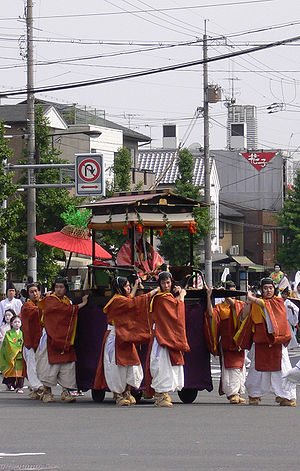
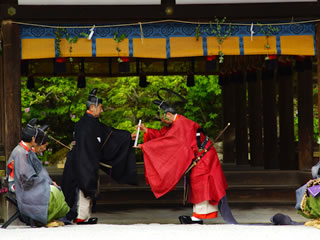
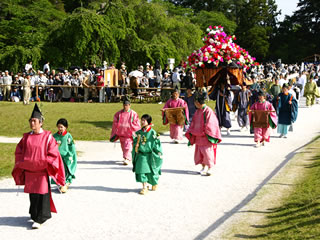
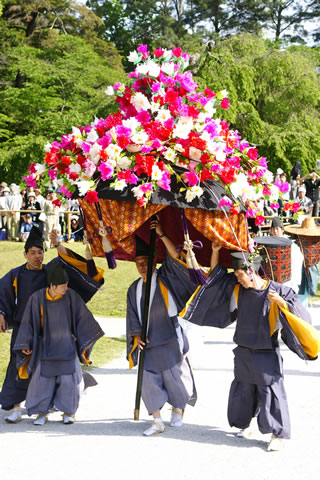
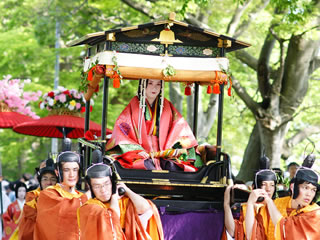
ー
ー
✴24→◆ 祇園祭ー /Gion Festival
ーit’s one of the three major festivals of Japanー
●The Gion Festival held in July . The highlight of the festival is a parade of about 30 beautifuuly decorated floats on July 17th . in this parade, performers sing , dance , and play traditional instruments .
●There are various events before and after the big parade .
●It started in the 9 th century when the emperor ordered a religious ritual to help against some epidemics .
●ー祇園祭(ぎおんまつり)は、京都市東山区の八坂神社(祇園社)の祭礼で、明治までは祇園御霊会(ぎおんごりょうえ、御霊会)と呼ばれた。貞観年間(9世紀)より続く。京都の夏の風物詩で、7月1日から1か月間にわたって行われる長い祭である。開催時期 7月
祭行事は八坂神社が主催するものと、山鉾町が主催するものに大別される。一般的には山鉾町が主催する行事が「祇園祭」と認識されることが多く、その中の山鉾行事だけが重要無形民俗文化財に指定されている。山鉾町が主催する諸行事の中でもハイライトとなる山鉾行事は、山鉾が設置される時期により前祭(さきのまつり)と後祭(あとのまつり)[1]の2つに分けられる。山鉾行事は「宵山」(よいやま、前夜祭の意。前祭:7月14日 – 16日・後祭:7月21日 – 23日)、「山鉾巡行」(前祭:7月17日・後祭:7月24日)が著名である。八坂神社主催の神事は 「神輿渡御」(神幸:7月17日・還幸:7月24日)や「神輿洗」(7月10日・7月28日)などが著名で、「花傘連合会」が主催する花傘巡行(7月24日)も八坂神社側の行事といえる。
●ー祇園祭は数々の三大祭のひとつに挙げられる。京都三大祭(他は上賀茂神社・下鴨神社の葵祭、平安神宮の時代祭)、日本三大祭(他は大阪の天神祭、東京の山王祭、神田祭)、日本三大曳山祭(他は岐阜県高山市の高山祭、埼玉県秩父市の秩父夜祭)、日本三大美祭(他は前述の高山祭と秩父夜祭)のうちの一つであり、日本を代表する祭りである。
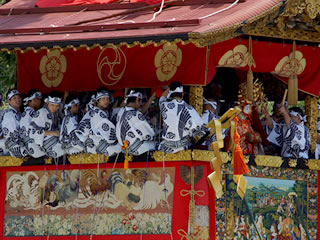
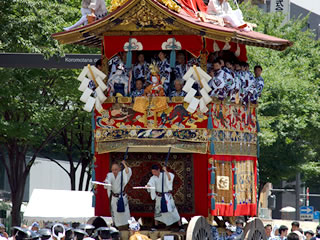
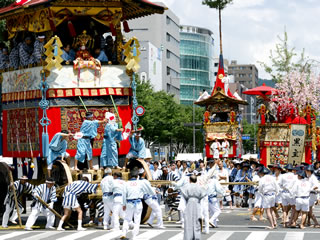
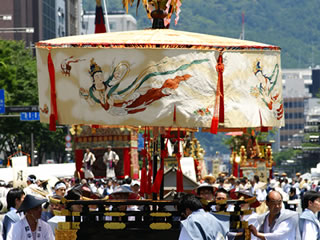 ー
ー
ー
ー
✴25→◆ 時代祭り / Festival of the Erasー
ーA parade of classical fashionuー ーそれは古代衣装の行列ですー
●The festival was originally held to celebration the constraction of the Heian Shrine in 1895,which was the year of Kyoto’s 1,100th anniversary .
●The costumes are said to be authentic replicas. Most of the dyeing and weaving of the costumes are done in the original way .
●The parade starts at the Old Imperial Palace Gardens and ends at thHeian Shrine .
●ー時代祭(じだいまつり)は、京都市の平安神宮の祭りである。神宮創建を祝って始められたものであり、京都三大祭りの一つであるものの、葵祭や祇園祭に比べると歴史は浅いが、各時代の中心であった京都市でしかできない祭であり、京都市民が主体となる市民上げての祭りである。
●ー行列は8つの時代、20の列でそれぞれに時代を再現した衣装や道具を身につけた人々で行われ、最初は明治維新、ついで江戸、安土桃山、室町、吉野、鎌倉、藤原、延暦と時代を遡って続く。参加人数は約2000人、長さは2kmに及び約3時間の行程となる。先頭の名誉奉行は京都府知事、京都市長らが務める。また時代行列の後には祭り本来の主役である神幸列などが続く。
●ー平安遷都から1,100年目を記念して明治28年に、桓武天皇を祭神として平安神宮が造営され、10月22日より10月24日にわたって紀念祭が盛大に挙行されました。そのとき、平安神宮の大祭及び建造物・神苑保存のため、広く市民によって組織された平安講社(各学区ごとに編成される「組」を単位にして構成されている)によって紀念祭の終わった翌日の10月25日に、延暦から明治に至る千余年の文物風俗を模した行列でもって時代風俗行列が行われました。そして翌29年からは、毎年遷都の日にあたる10月22日になり、今日に至っています。
●ー祭儀は10月15日の参役宜状授与祭、21日の前日祭、22日の神幸祭、行在所祭、還幸祭、23日の後日祭ですが、そのメイン・イベントはもちろん22日の時代風俗行列です。
●ーこの時代祭は葵祭、祇園祭とともに京都三大祭の一つとして知られ、国内はもとより海外からの観覧者も多く、沿道を埋めつくします。山国隊が奏する笛、太鼓の音色を先頭に約2,000名・約2キロにわたる行列は順次、平安京の造営された延暦時代にさかのぼり、私どもの心に過ぎ去った京都の歴史をしのばせます。それは日本の歴史の縮図とも言えます。
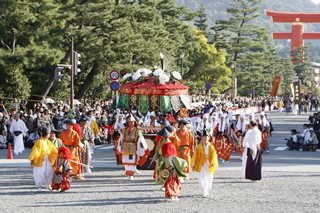
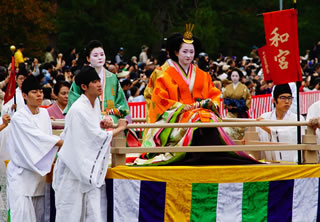
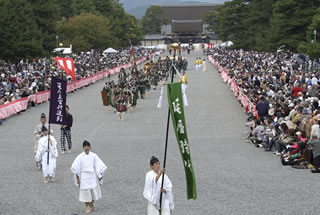
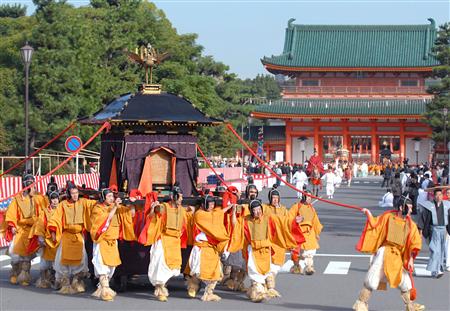
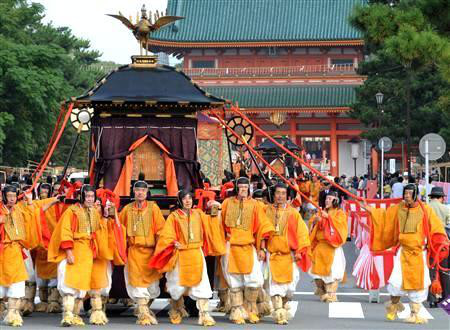
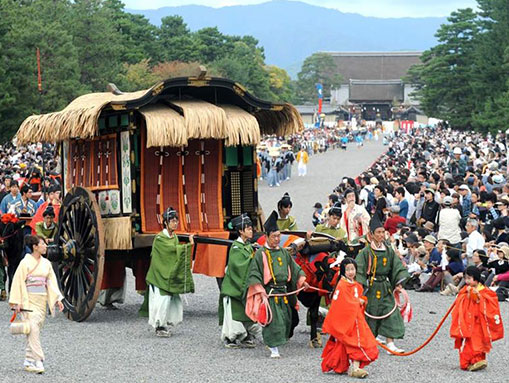
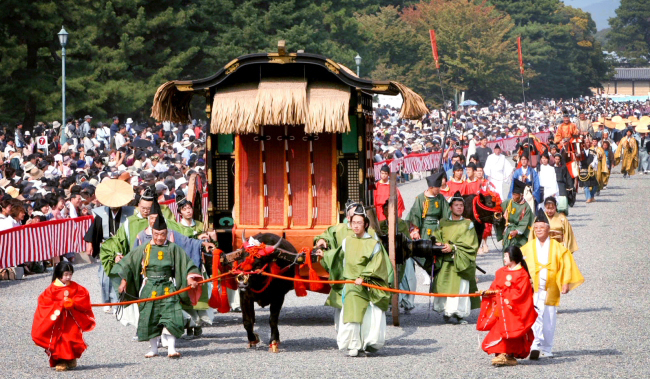
ー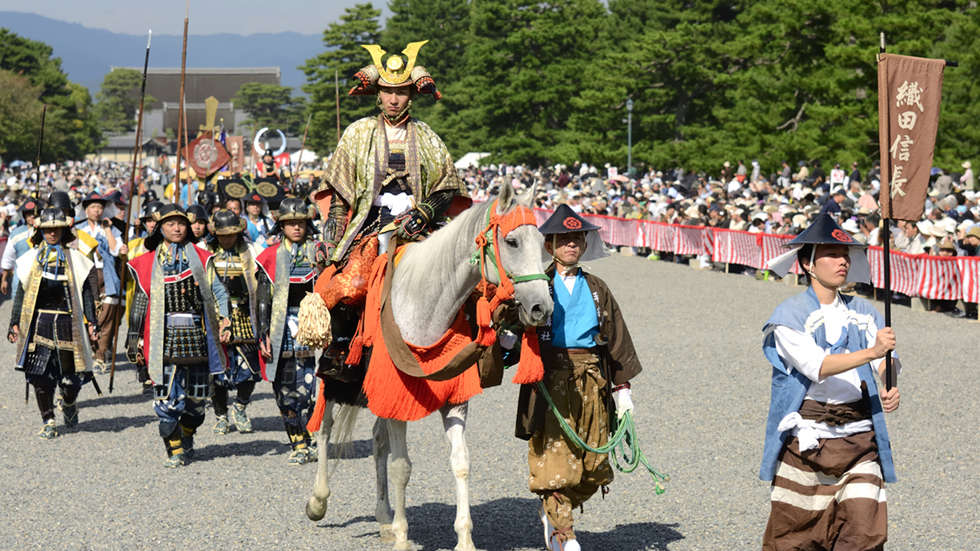
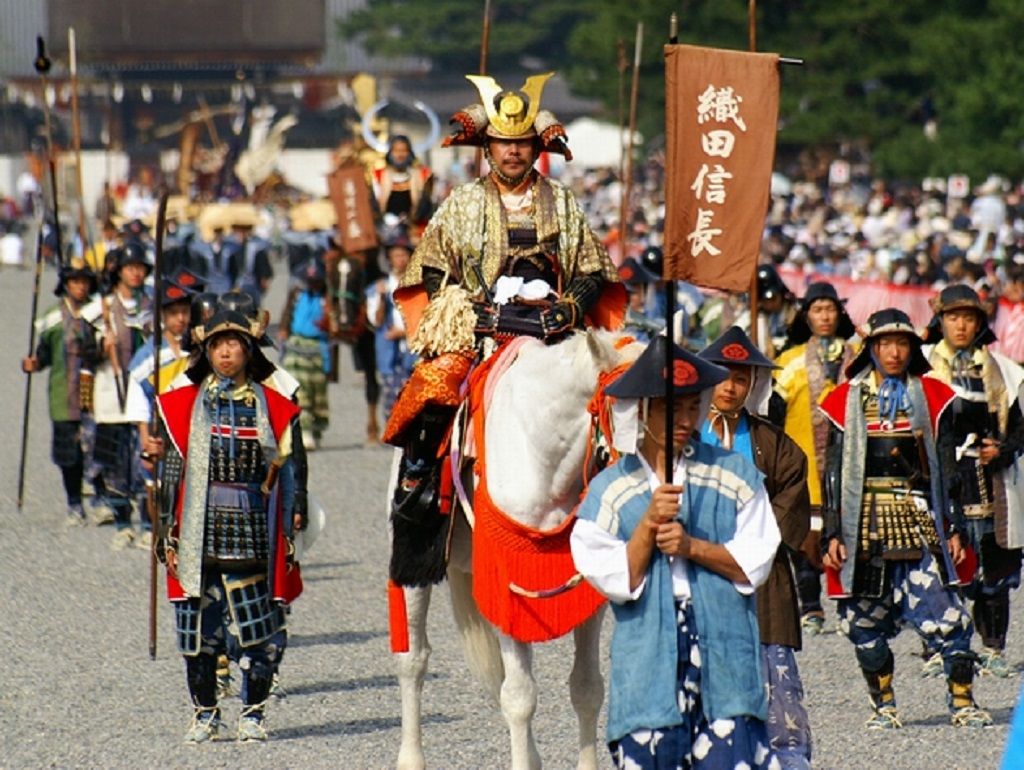
ー
✴26→◆大覚寺の観月の夕べ / An Evening of the Moon Viewing at Daikaku-ji Temple .ー
ーEnjoy the full moon from a boat !! ー 船に乗り満月を観月できますー
●Of all the full moon throughout the year , the one in September is
●you can also enjoy music played using traditional Japanese instruments.
●this full moon marks the beginning of the harvest season,some temples and shrines hold moon viewing events to pray for good harvest .
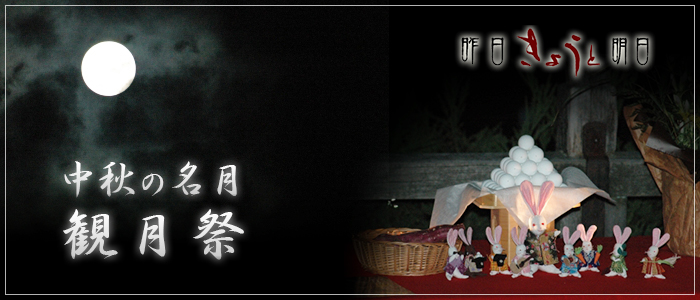
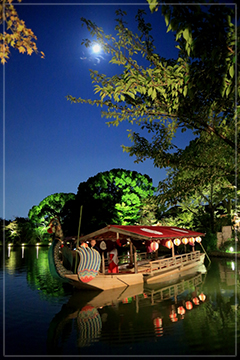
✴27→◆清水焼 / Kiyomizu Potteryー
ーLet’s make Kiyomizu Pottery .ー ー清水焼の器を作りましょうー
●Kiyomizu Pottery is especially famous .
● Some global corporations based in Kyoto used Kyoto’s traditional ceramics technology to their products . A good example of this is Kyocera .
ー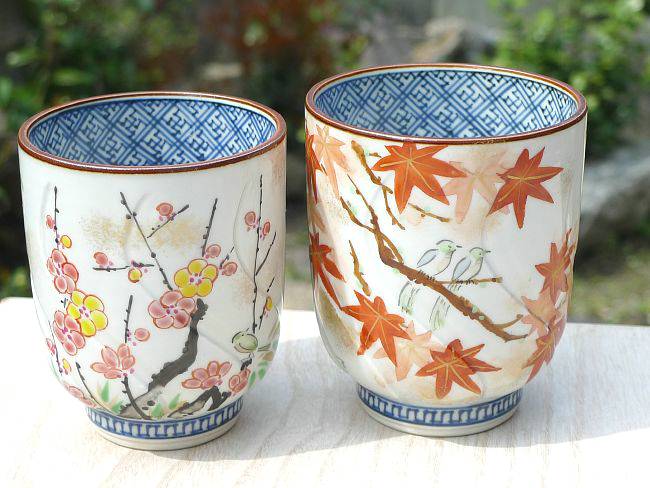
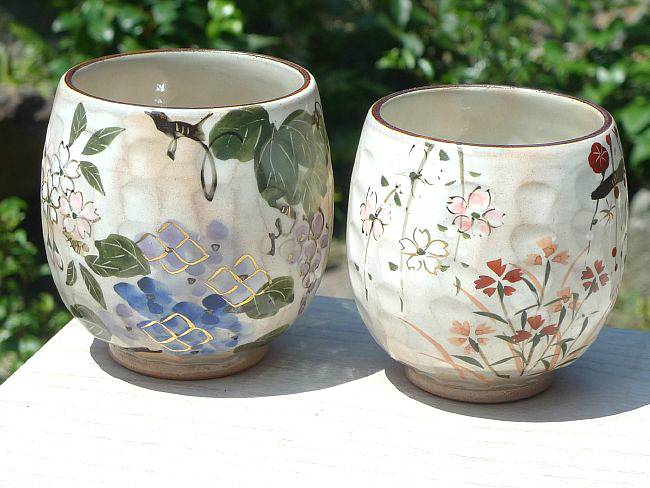
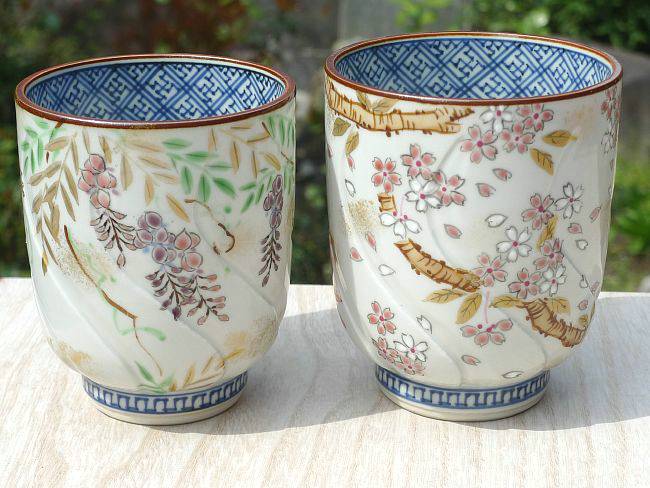
ー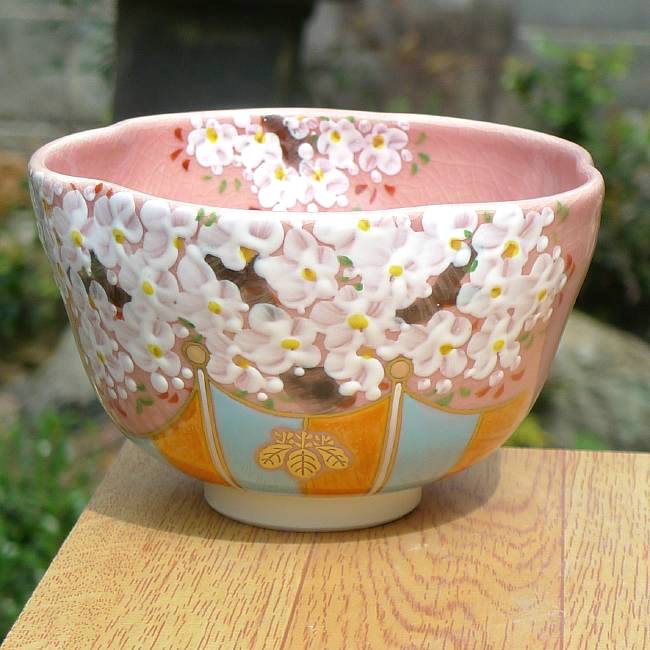
ー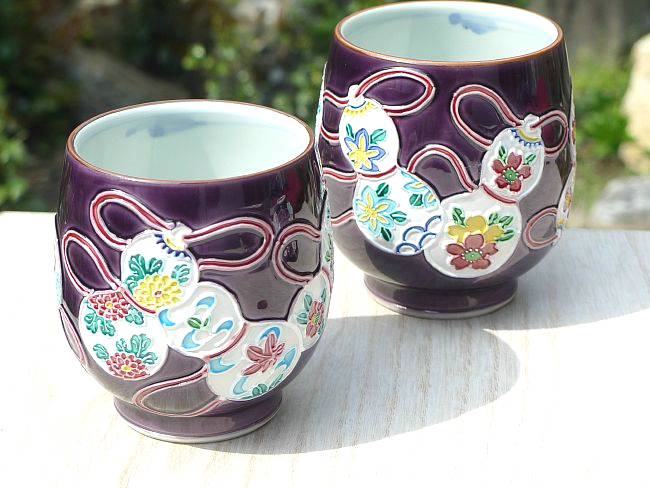
ー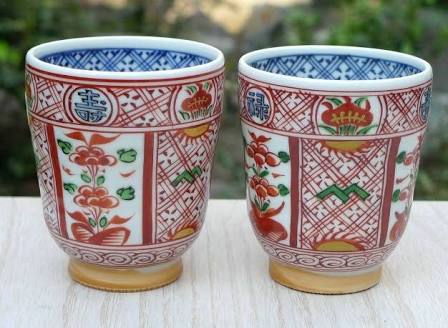
ー
✴28→◆野外のみの市 / Outdoor Flea Marketsー
ーit’s outdoor flea markets where antiques abound .ー骨董品あふれる野外のみの市です。ー
●At the shrines and temples of Kyoto, you can enjoy outdoor flea markets very much . The market that open with the monthly festival of Kitano-tenmangu and Toji- are especially famous . They usually have more than 1,000 stalls !! .
●Many of these stalls feature antiques . you can also enjoy games and street foods such as octopus balls and cotton candy .
●The markets held at shrines and temples are normally open on the day of the month commemorating an important event such as the birthday of the fouder .
ー
ー
ー
✴29→◆鞍馬の温泉 / The Hot Springs in Kuramaー
ーLet’s take a dip and enjoy the scenic beauty .ー ー一風呂浴びて美しい景色を楽しみましょうー
●You can enjoy hot springs in the scenic Kurama area,in the northern hills of Kyoto.
●Kurama Onsen, near Kurama Temple , is a wonderful place to relax after a day hiking in Kibune and Kurama .
●they have indoor and outdoor public baths . We bathe naked, and men and women bathe separately.
●When you enter the bath ,you will see a washing area with a stepstool to sit on . Please wash yourself first .
●When you are clean , you can go into the water and relax. in the outdoor bath, you can enjoy the beautiful view of the Kurama Mountains !!
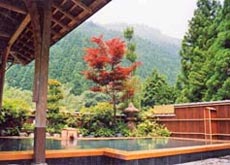
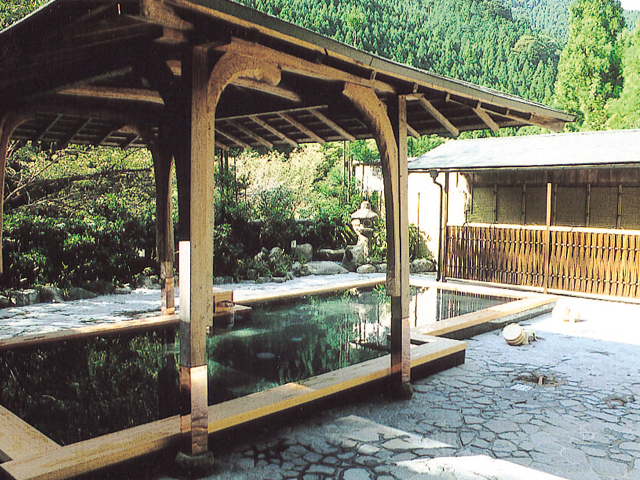
ー
✴30→◆ 三千院 / Sanzen-in Temple
ーEnjoy the atmosphere of a farming townー ー農村の雰囲気をお楽しみ下さいー
●
●
●
ー
✴31→◆寂光院 / Jakko-in Temple
ーit’s the temple of a tragic empressー ー悲劇の皇后の寺なんです。ー
●The quite temple in Ohara is well-known throughout Japan because of the story of a tragic empress : Kenreimon-in .
●
●
●
✴32→◆尼僧体験 / Buddhist Nun Experiece (Chirstian Nun)
ーLet’s experience being a Buddhist nun.ー ー仏教の尼僧になってみましょうー
●Some temple in Kyoto welcome female vistors to experience the daily routines and practices of Buddhist nuns .
●You will be dressed in a nun’s kimono and will be given a rosary to hold.
●Real nuns shave their heads . don’t worry , they won’t shave your head. There is, however,a symbolic ritual where they cut a very small portion of your hair.
●These courses often include lectures from the temple priests on topics such as prayer , Zazen , and the practice of tracing image of Buddhas.
●You can also learn about and try shojin cuisine .
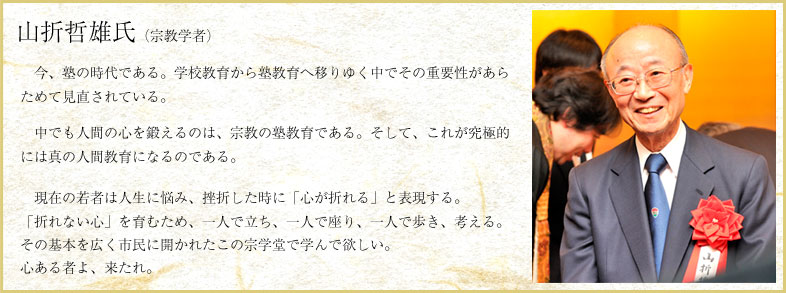
✴33→◆保津川下り / Sailing down the Hozu River .
ーLet’s have a go at whitewater rafting ー ー急流下りにトライしましょうー
●Near JR Kameoka Station,west of Kyoto, you can take a boat for a ride down the Hozu River to Arashiyama. A skilled boatman will propel the boat with a bamboo rod .
●It’s a great way to enjoy the beauty of the western mountains of Kyoto . The Cherry blossoms in spring and the red maple in fall are breathtaking.
●The tour is about two hours long and covers a distance of 16 kilometers. There are some rapid so you might get splashed !!
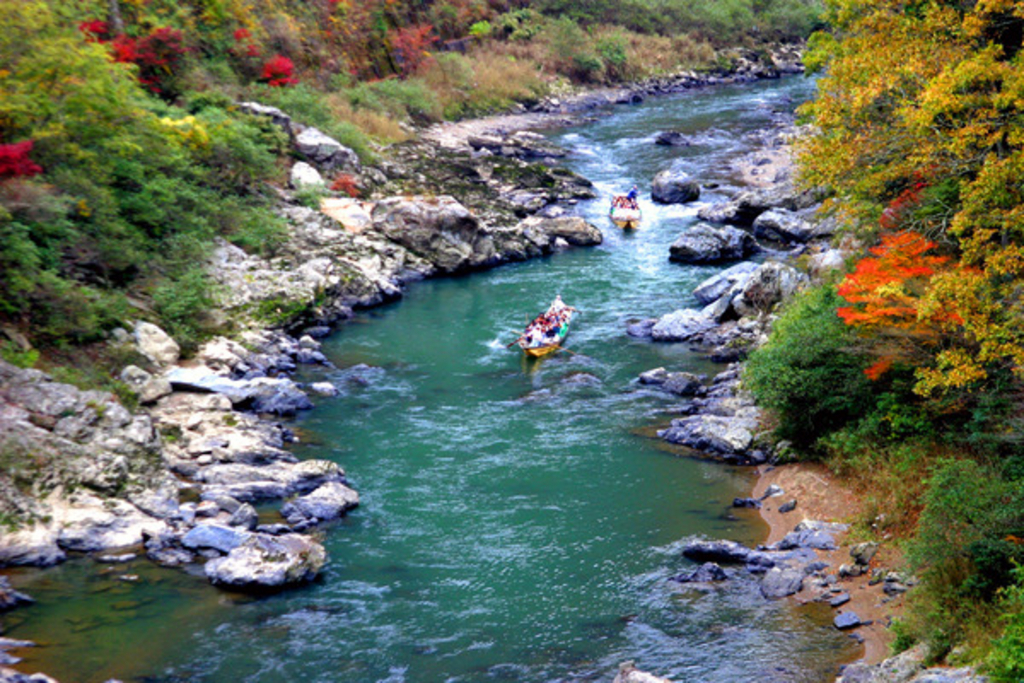
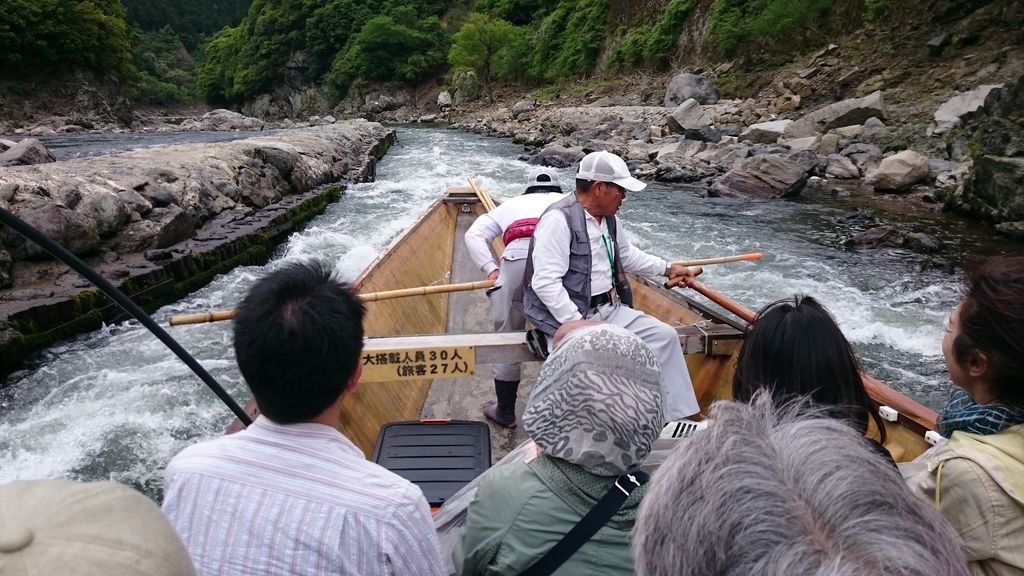
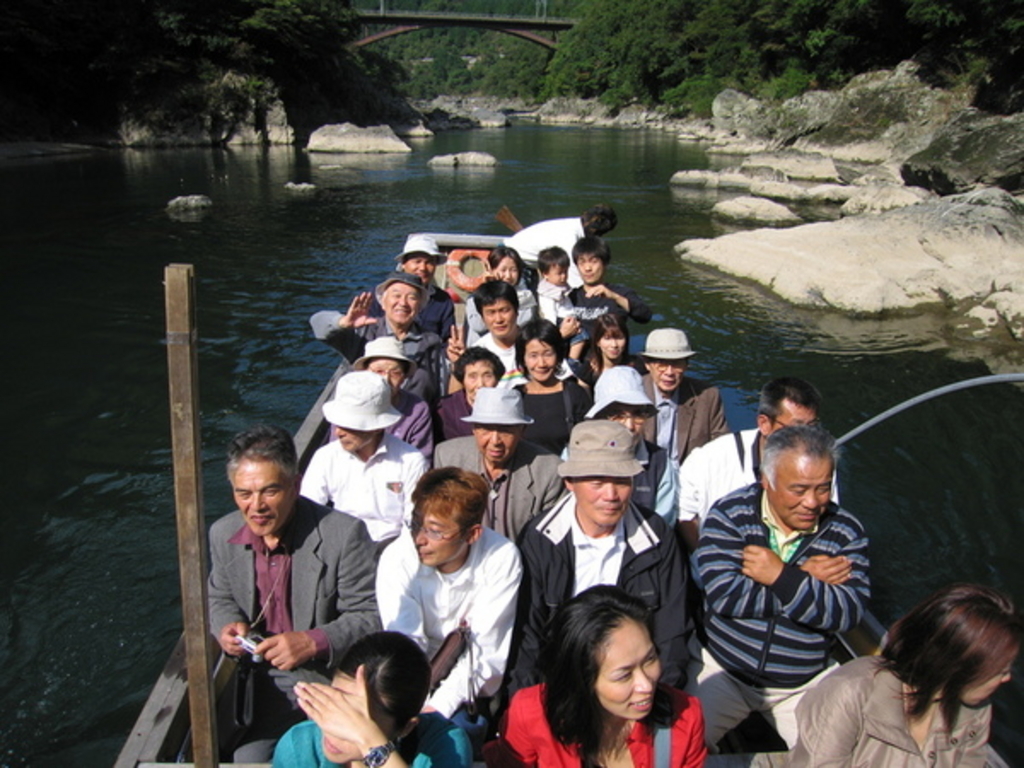
ー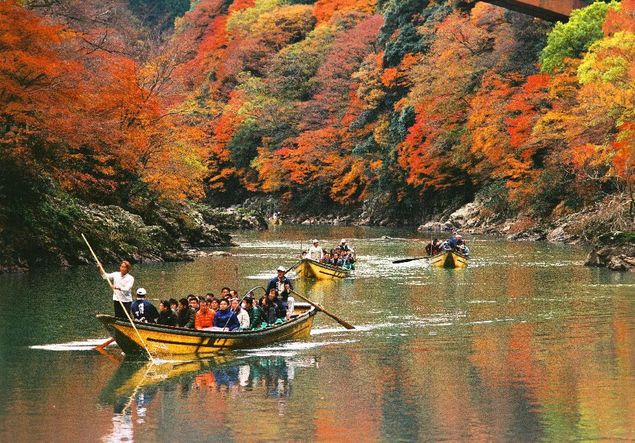
ー
✴34→◆渡月橋 / Togetsu Bridge
ーYou can enjoy a panoramic view of western Kyoto .ー洛西のパノラマ景観をお楽しめます。ー
●This old bridge is 155 meters long , and the original was probably built in the 9th centure . Western Kyoto was a peaceful cottage country for the aristocracts and priests . Even today , it has a country-like feel .
●The Togetsu Bridge is one of the main attraction . you can enjoy a panoramic view of the area,especially of Mount Arashi .
●Visit the bridge at the different times of the year and enjoy how the reflections on the river change with the season .
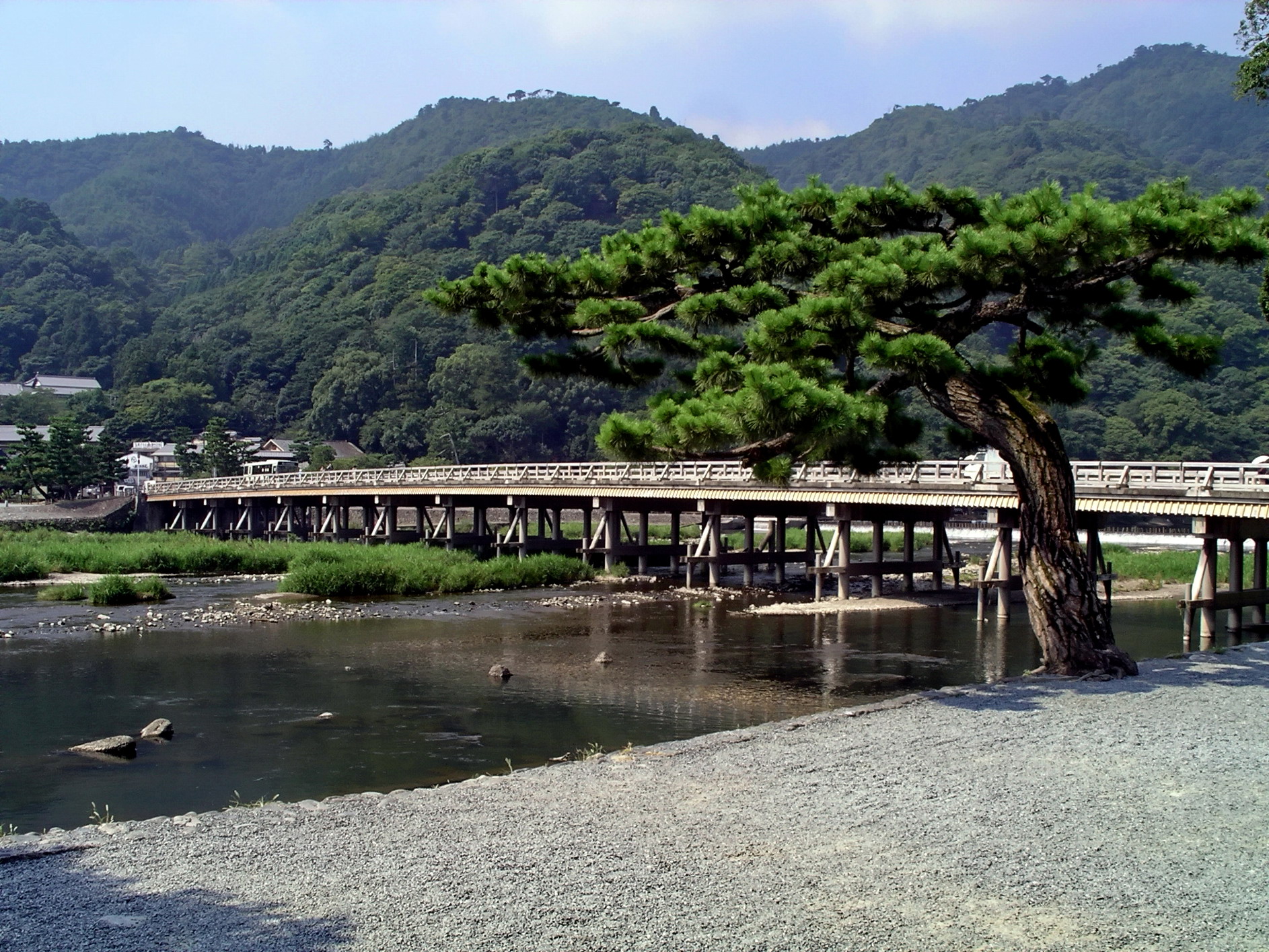
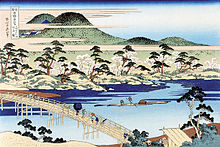
✴35→二条城 / Nijo Castle
ーEnjoy the finest architecture and artworks of Edo . ー江戸時代の建築と芸術の粋が見られます。ー
●The construction of Nijo Castle was completed in the 17th century. The Castle was a Kyoto villa for the shoguns .
●This castle has two moats for extra protection : one around the Honmaru Central Palace and another around the entire complex.
●The architecture and artworks are said to be the finest examples of the period . Artists have been working for decades to conserve the superb artworks kept in the castle .
●In the Ninomaru Palace are the famou ”nightingale floor ” These floor are designed to squeak like the singing of birds when you walk on them. It is said that this was to warm against intruders.
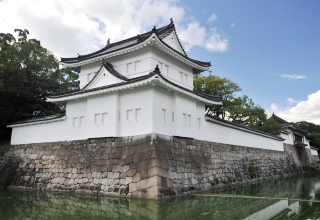
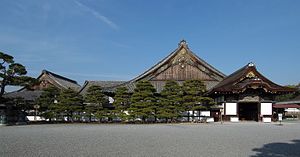
●二条城は,慶長8年(1603年),徳川将軍家康が,京都御所の守護と将軍上洛のときの宿泊所として造営し,3代将軍家光により,伏見城の遺構を移すなどして,寛永3年(1626年)に完成したものです。
家康が建てた慶長年間の建築と家光がつくらせた絵画・彫刻などが総合されて,いわゆる桃山時代様式の全貌を垣間見ることができます。
徳川家の栄枯盛衰のみならず,日本の歴史の移り変わりを見守ってきたお城です。
●二条城(にじょうじょう)は、京都市中京区二条通堀川西入二条城町にある、江戸時代に造営された日本の城である。京都市街の中にある平城で、後述する足利氏、織田氏、豊臣氏、徳川氏によるものがあるが、現在見られるものは徳川氏によるものである。また、後の近代において二条城は京都府の府庁や皇室の離宮として使用された。城内全体が国の史跡に指定されている他、二の丸御殿(6棟)が国宝に、22棟の建造物と二の丸御殿の障壁画計1016面が重要文化財に、二の丸御殿庭園が特別名勝に指定されている。さらに1994年(平成6年)にはユネスコの世界遺産(世界文化遺産)に「古都京都の文化財」として登録されている。
ー
✴36→二条陣屋 / Nijo Jinya House
ーStudy the security tricks of 300 years agoー ー300年前のセキュリティのからくりが学べます。ー
●This inn had a tight security system and used many clever tricks to protect its guests. Because of these tricks, the house is nicknamed ”Ninja House ”
●Nijo Jinya House, just south of the Nijo Castle , is a manson that was owned by a rich merchant during the 17th century. It was an in for high-ranking samurai visiting Kyoto.
●For example, there are hidden staircases and secret hallways . There are also small secret rooms where guards could hide and watch the visitors .
●代々小川家が継承する現存する屋敷は、過去の火災、改築等により、創建当時の店構えは見ることができませんが、各室の趣向を凝らした意匠と客の安全を図るための巧妙な防衛建築は、創建当時の屋敷造作を引き継ぐものと思われます。
当屋敷は個人所有の住宅です。昭和19年(1944年)国宝保存法により、現住民家では日本で2番目に国宝に指定され、昭和25年(1950年)の法改正(文化財保護法)により重要文化財となり、今日に至っています。
なお、二條陣屋の名称は一般公開にあたり、当家が命名しました。
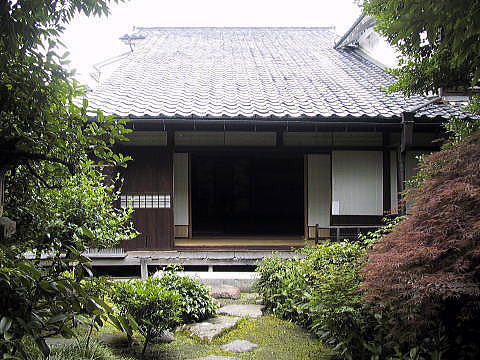
✴37→京都の都市 / Kyoto
✴38→京都の歴史 / History
ーKyoto is a capital of 1,000 years.ー千年の都です。ー
●
●
●
●
✴39→京都の地理 / Geography
ーIt’s a grid pattern surrounded by mountainsー山に囲まれた基盤の目模様があります。ー
●Kyoto is located in the west-central part of mainland Japan .
●The city is surrounded by mountains. There is an opening in the sourhern part that leads to Osaka . The law in Kyoto restricts the height of the buildings, so you can see the mountains from many parts of the city .
●when Kyoto was built as a capital in the 8th century , the streets were laid out in a grid pattern modeled after Chang’an of China .
●This is why it is easy to get around in Kyoto .
ー
ー
✴40→京都の交通 / Transportation
✴41→京都の気候 / Climate
✴42→神社仏閣 / Shrines and Temples
✴43→仏像 / Buddhist Statues
✴44→京都のことば / The kyoto Dialect
ーit’s a soft, feminine dialect .ーやわらかく、女性的なことばです。ー
●The Kyoto dialect is one of the Kansai dialects with its own unique expressions and intonation . People from Kyoto appear polite partially because of the Kyoto dailect, which is said to sound soft and feminine .
●For example ,the polite ” o and san ” are used on many everyday words. ” o ” placed before a word shows respect for the listener . ”San ” placed after a word means something like Mr. or Mrs .
●In Kyoto you will hear people call a potato ” o-imo-san” A direct translation of this could be, ”Mr. potato,with all my respect ”
ー●京都は平安京が建設された平安時代から1000年以上にわたって日本の都があった地域であり、江戸時代中期まで京言葉は日本の中央語(事実上の標準語)とされ、現代共通語の母体である東京方言を含め、日本各地の方言に強い影響を与えた。明治時代から昭和中期までの標準語普及政策の影響も少ない。
●ー京都は伝統を重んじる保守的な街とされるが、古くからの大都市で京言葉は変化し続けており、平安時代以来の古語はあまり保存されていない。明治維新前後にも大きな変動があったとされ、代表的な京言葉「どす」「やす」「はる」も幕末以降に成立・普及した言葉と考えられている[1]。現在では共通語化や関西共通語化(大阪弁化)も進み、伝統的な京言葉を用いるのは高齢層や花街の芸妓社会などに限られている。19
●ー京言葉は、大きく分けて御所で話された公家言葉(御所言葉)と、街中で話される町ことば(町方ことば)に分類される。前者の公家言葉は、宮中や宮家、公家のあいだで室町時代初期から女官によって話されたもので、明治以降も一部の門跡で継承されてきた。後者は、話者の職業や地域によって更に細かく分類することが出来る。
ー中京ことば(なかぎょうことば)
中京区を中心として、室町や新町の問屋街・商家などで話されることば。町ことばの代表とされる。
ー職人ことば
西陣の織物産業(西陣織)に従事する織屋の人々のことば。
ー花街ことば
祇園や宮川町などの花街で、舞妓や芸妓によって話されることば。簡易的な手話の様な「身振り語」や、嶋原で用いられた「廓言葉(なます言葉)」がある。
ー伝統工芸語
ー京焼、京友禅、あるいは伏見の酒屋などの現場で話される職業語。
ー農家ことば
大原や八瀬など京都周辺の農村部で話されることば。
ー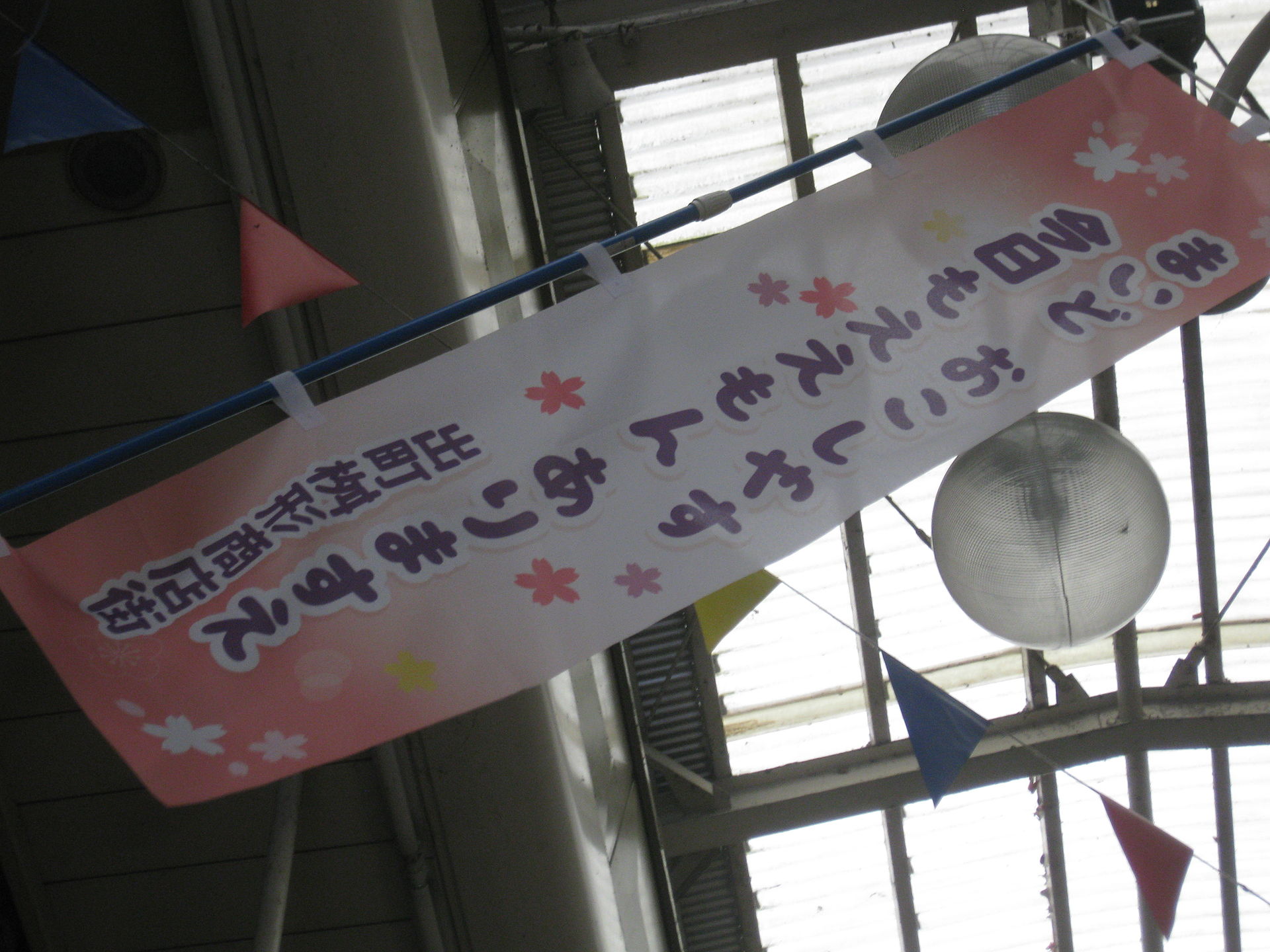
ー
✴45→京都駅 / Kyoto Station
✴46→三十三間堂 / Sanjusangen-do Temple
●It’s A temple with 1,000 Buddhist statues .ー千体の仏像のいるお寺です。ー
●” Sanjusan ” means 33 . and the name comes from the 33 bays berween the pillars of the main building .
●In the main hall, 1,000 statues of standing Bosatsu goddesses surround the statue of main Bosatsu sitting in the center .
●
●
ー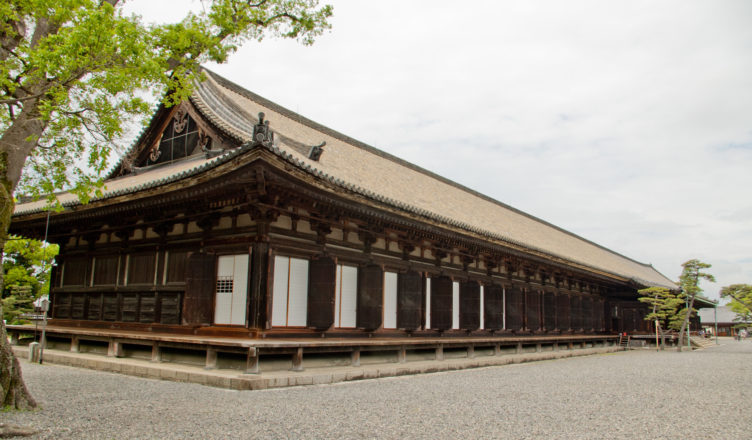
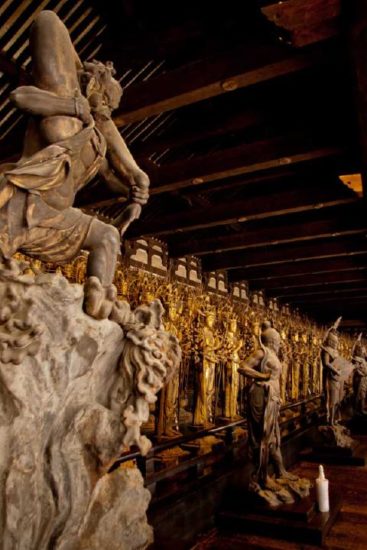
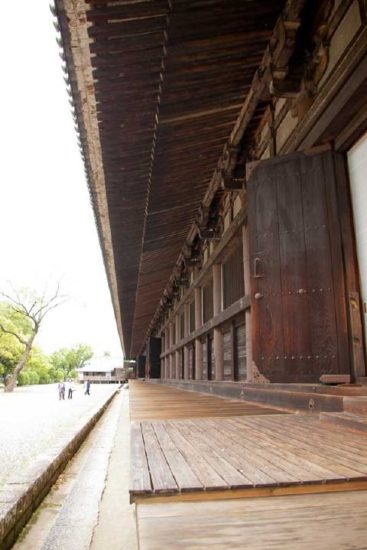
ー
✴47→錦市場 / Nishiki Market
ーIt’s called ”the Kitchen of Kyoto”. ー京の台所と呼ばれます。ー
●Located in downtown Kyoto , Nishiki Market is home to more than 100 shops that sell Kyoto’s specialties . Many are food shops . A path 400 meters long is lined with small shops on both sides.
●Pease enjoy !! There you can find fresh, high-quality fish and vegetables.There are also shops for Kyoto’s sweets,snacks, pickles, tofu ,and sake . You will likely see some very strange foods too.
●These days , there are some shops for tourists, but traditinally , Nishiki Market has catered to high-class Kyoto cuisine restaurants and gourmet Kyotoites .
ー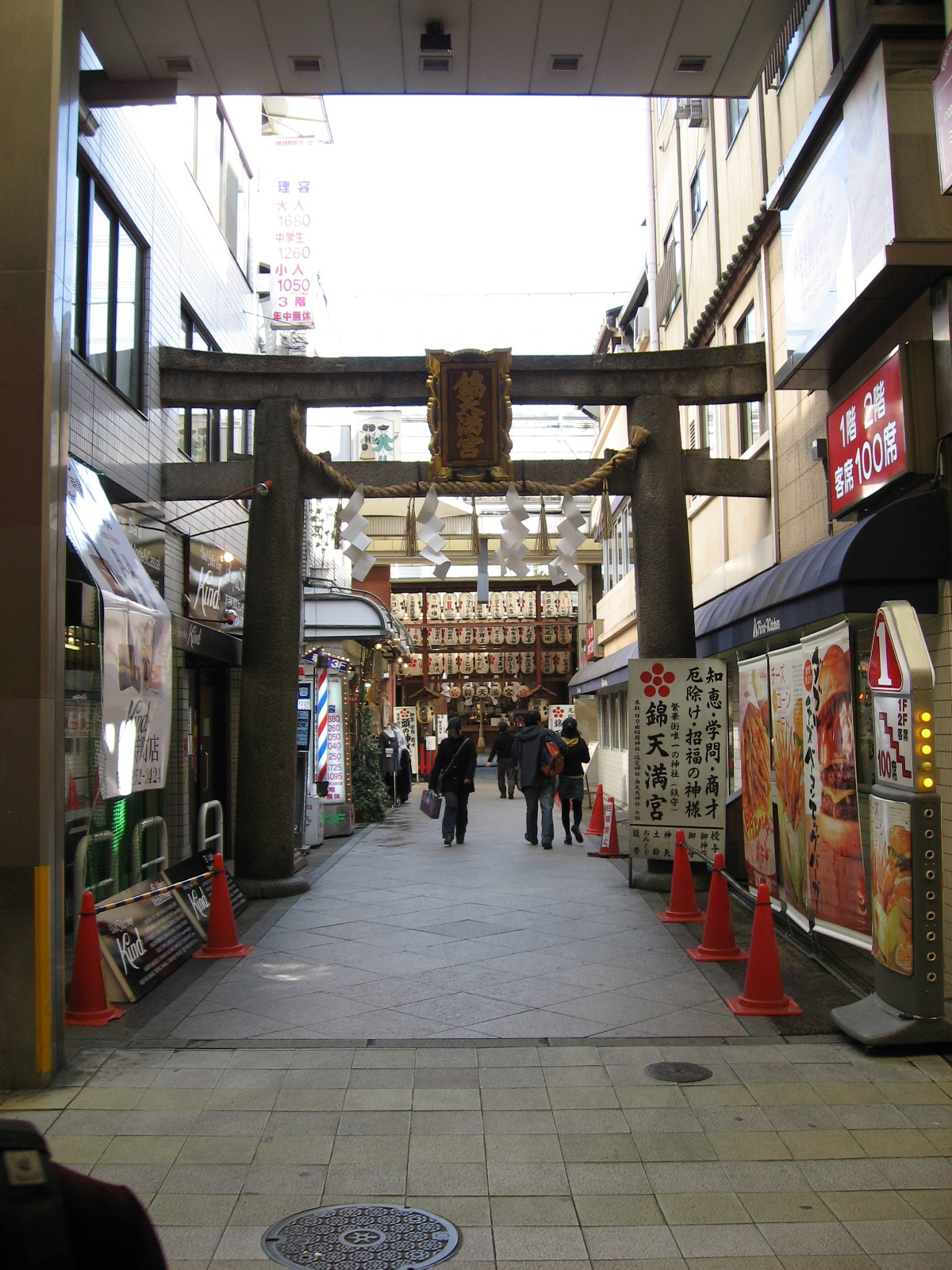
ー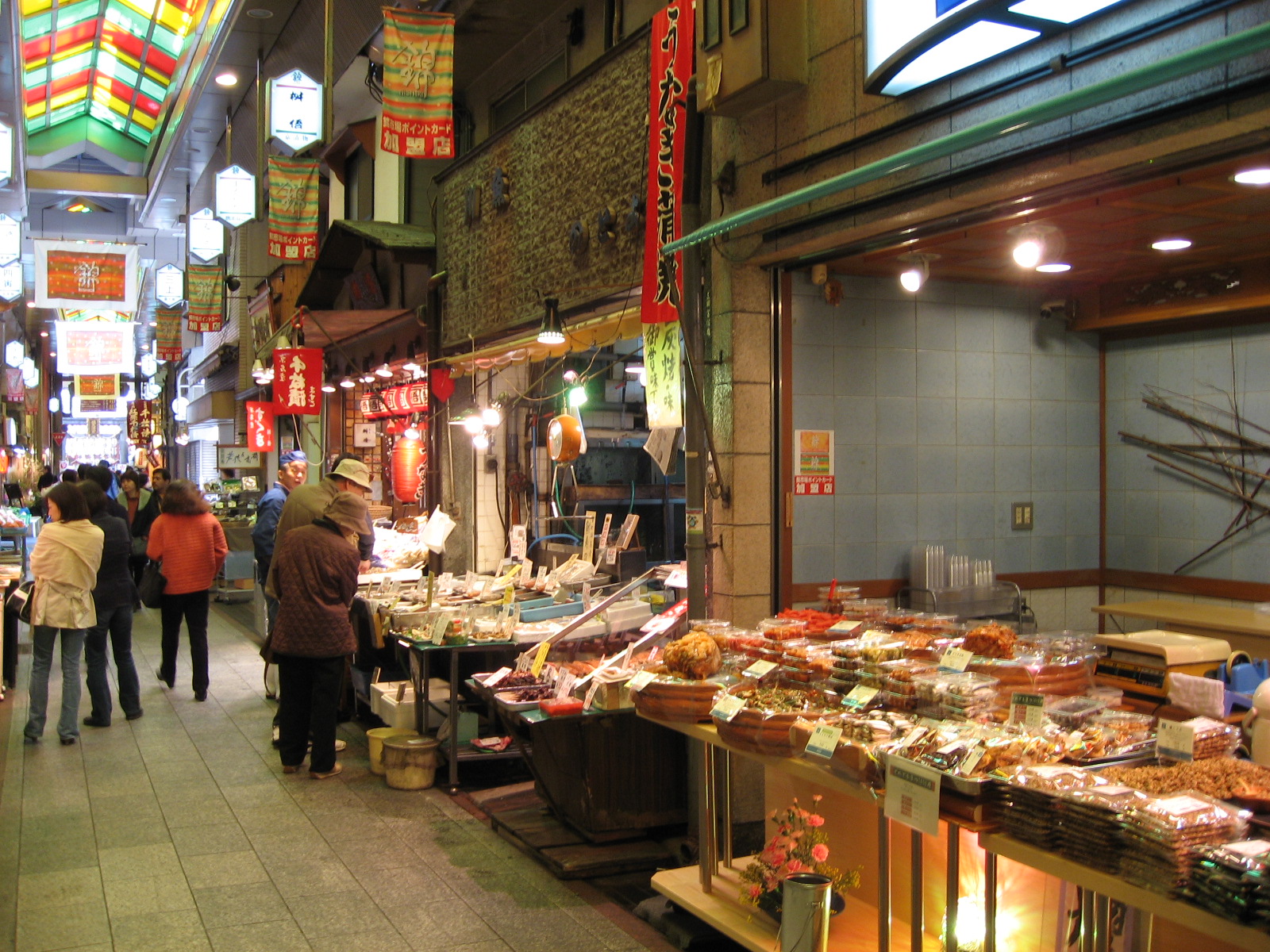
ー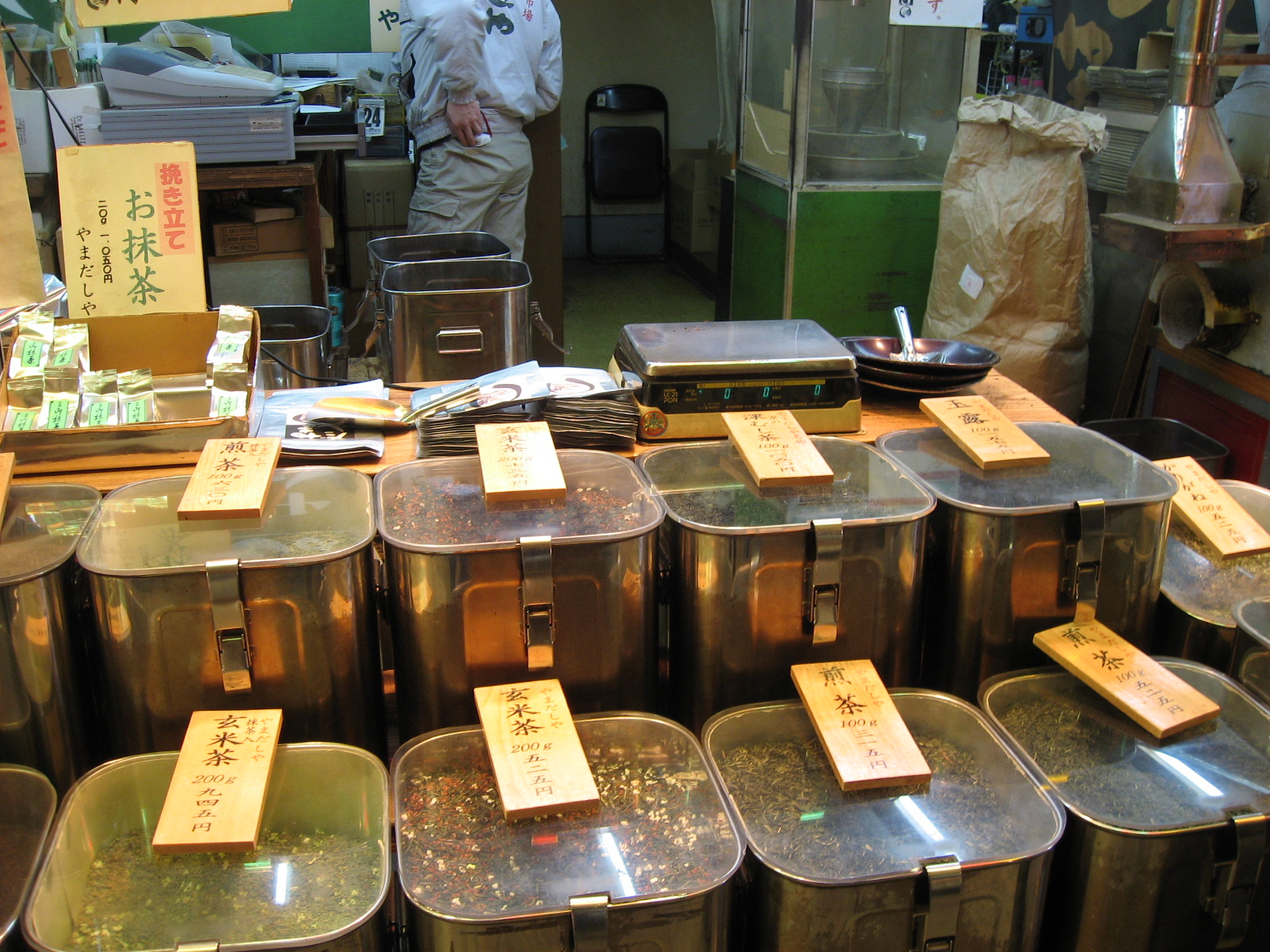
ー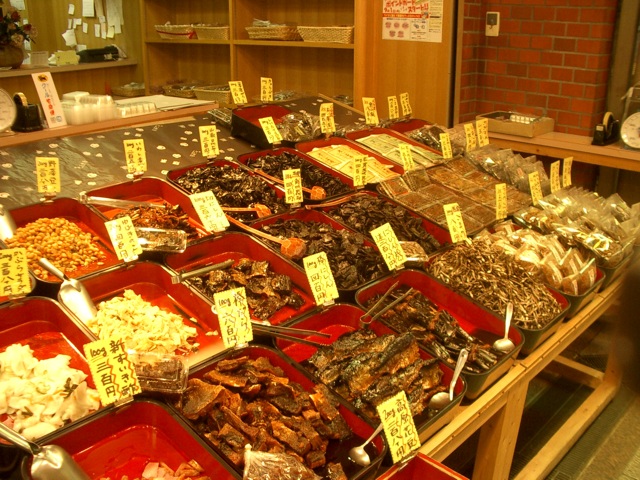
ー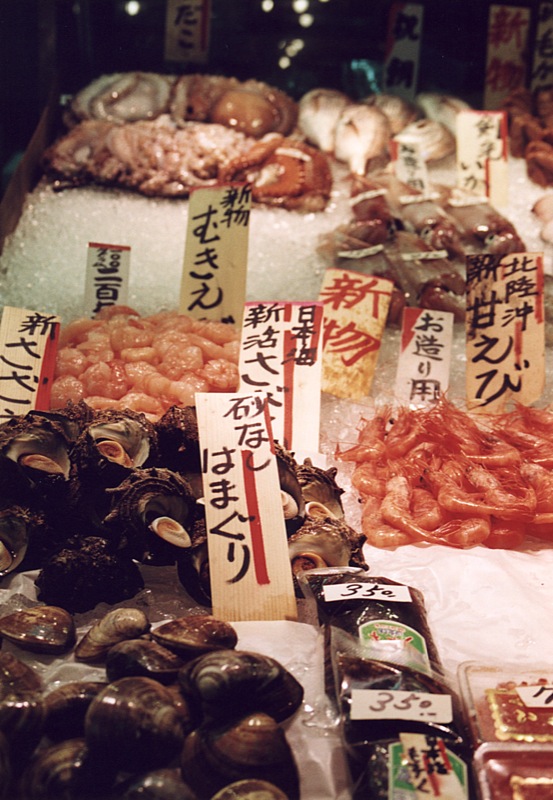
ー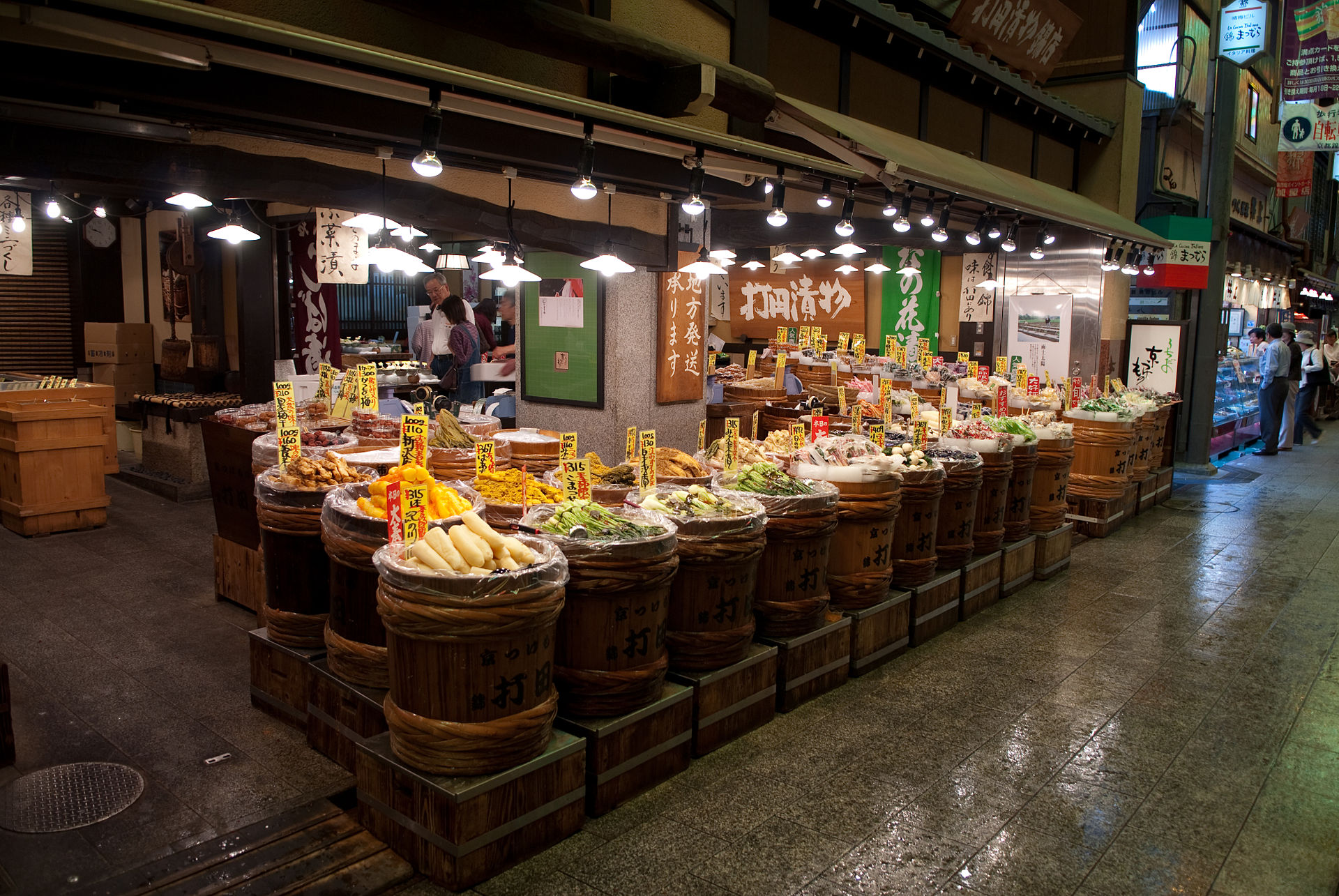
ー
✴48→平安神宮 / Heian-jingu Shrine
ーyou can see replicas of the old Imperial Palaceー ー平安京のレプリカが見られます。
●Many building in the Heian-jingu complex are replicas of Imperial Palace of 8th and 9th centuries .
●Heian-jingu complex was built in 1895 to celebrate the 1,100th anniversary of the old capital . The word ”Heian” means peace and stability . Kyoto was named Heiankyo when it was the capital from the 8th to the 19th century .
●Two emperors are enshrined here . One of the emperor who opened the capital in Kyoto . The other is the last emperor based in Kyoto .
●ー1895年(明治28年)4月1日に平安遷都1100年を記念して京都で開催された内国勧業博覧会の目玉として平安京遷都当時の大内裏の一部復元が計画された。
●博覧会に先立つ3月15日には、平安遷都を行った天皇であった第50代桓武天皇を祀る神社として創祀された[2]。皇紀2600年にあたる1940年(昭和15年)に、平安京で過ごした最後の天皇である第121代孝明天皇が祭神に加えられた。平安神宮では、京都を守る四神の御守が授与されている。
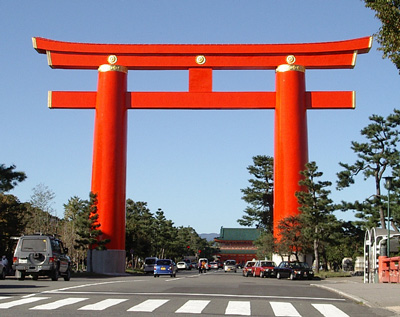
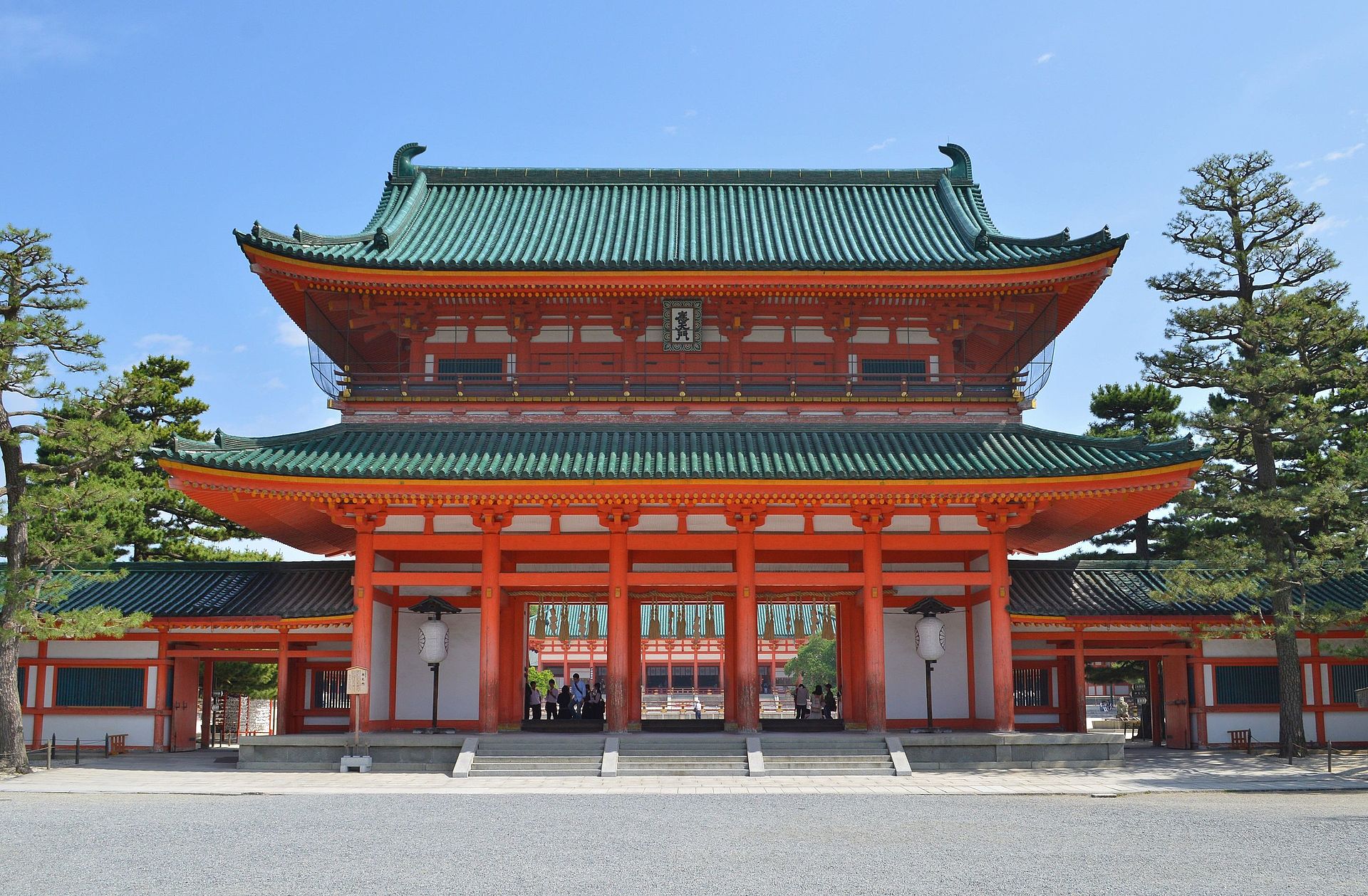
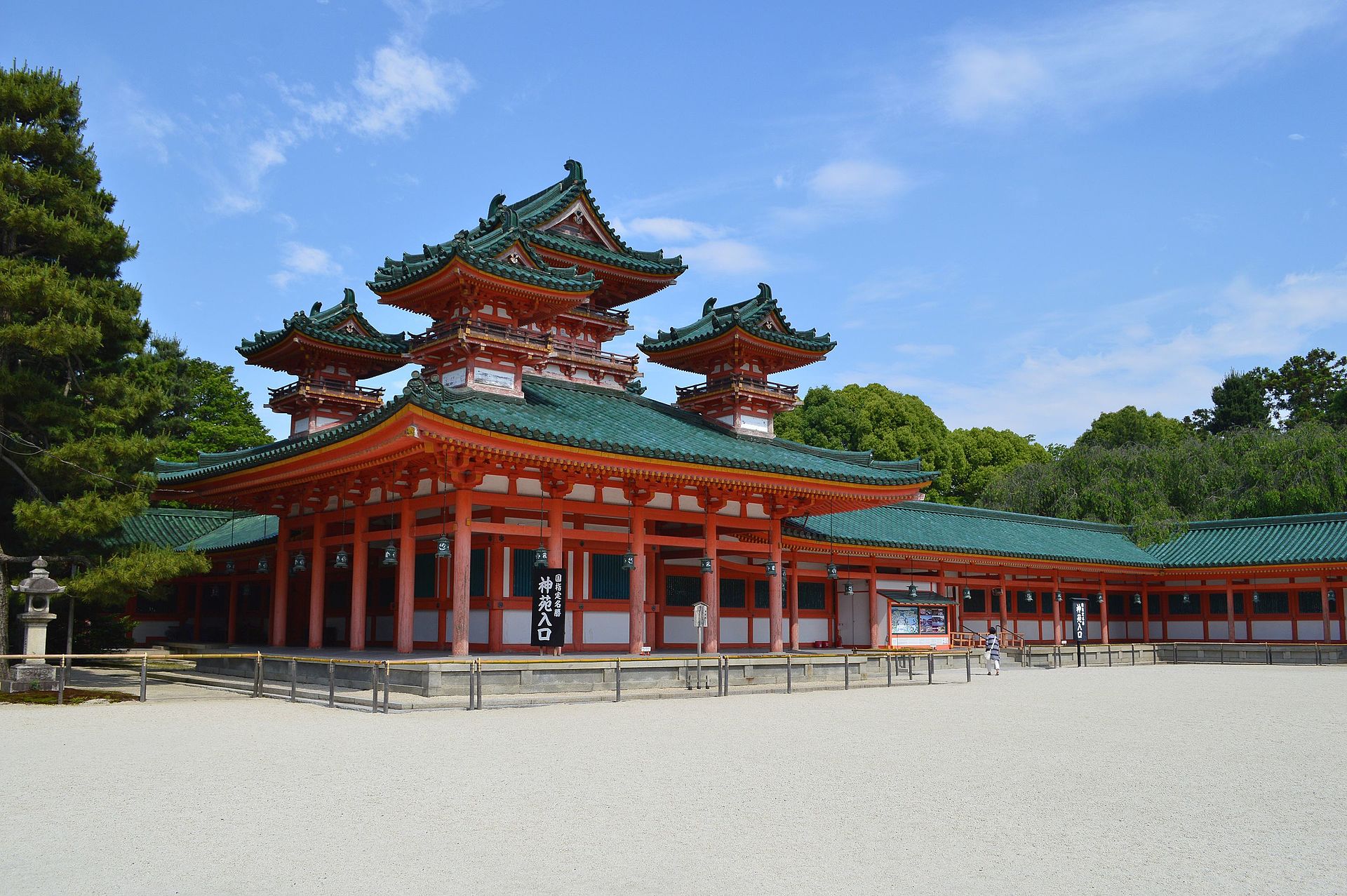
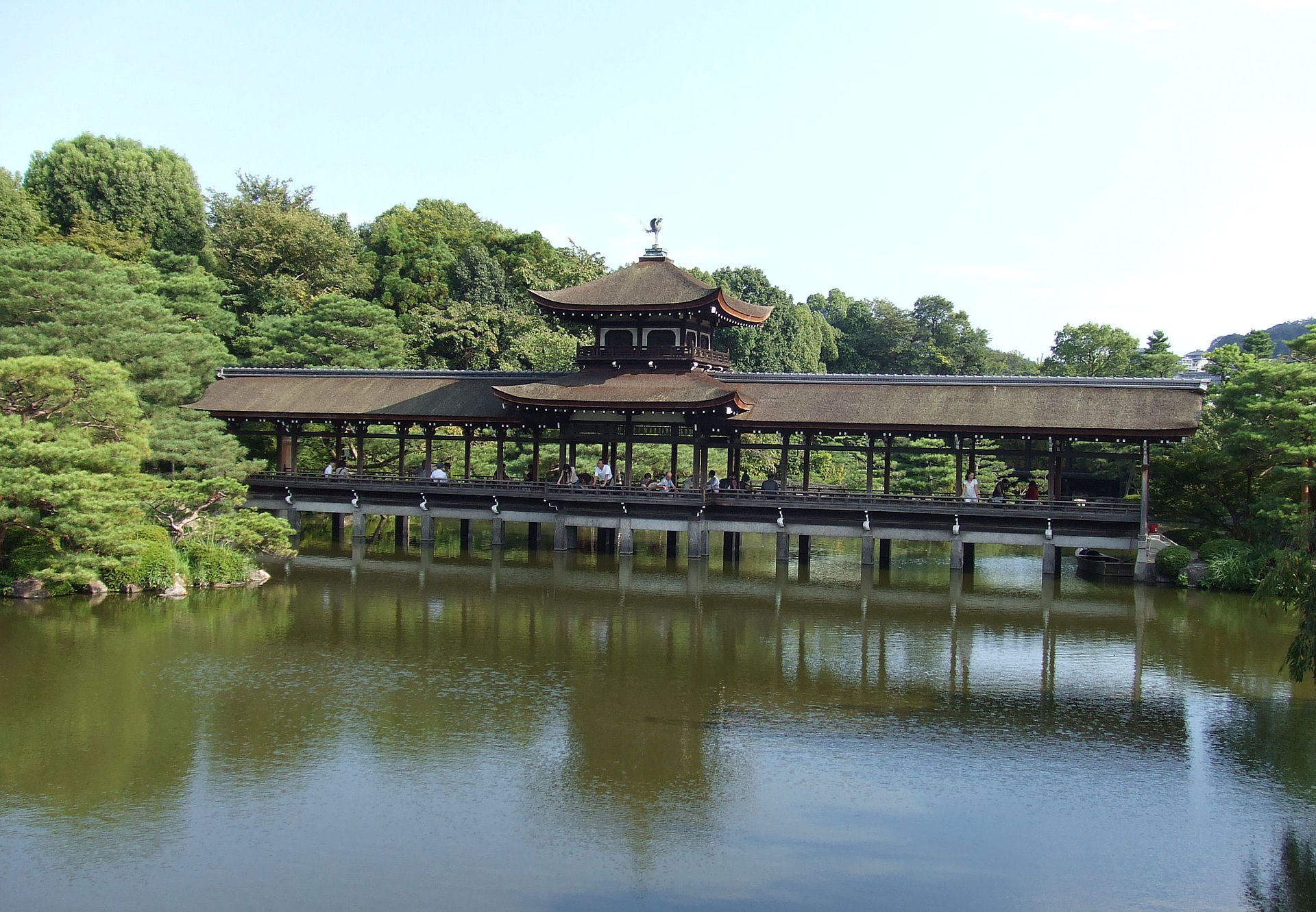
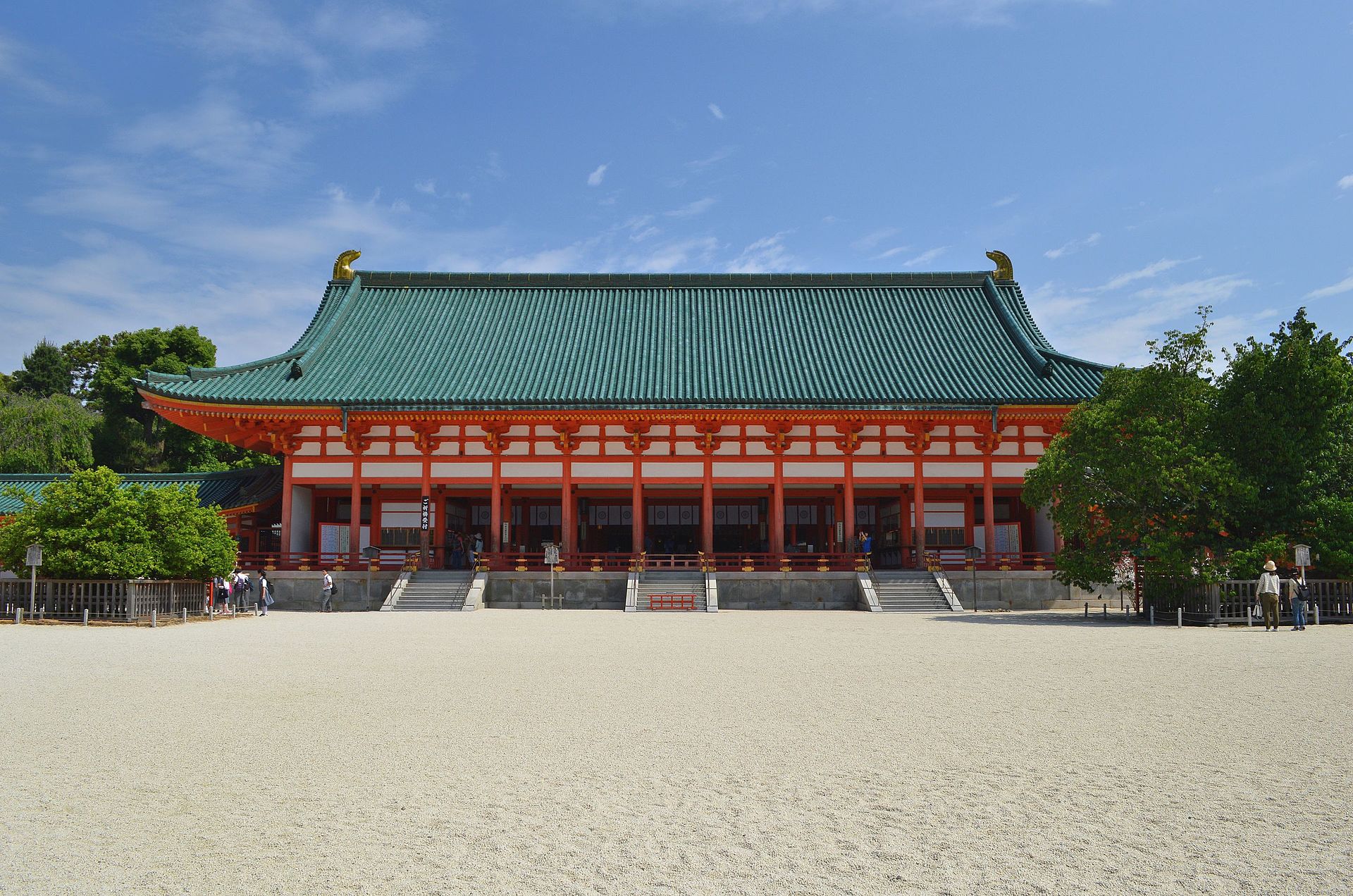
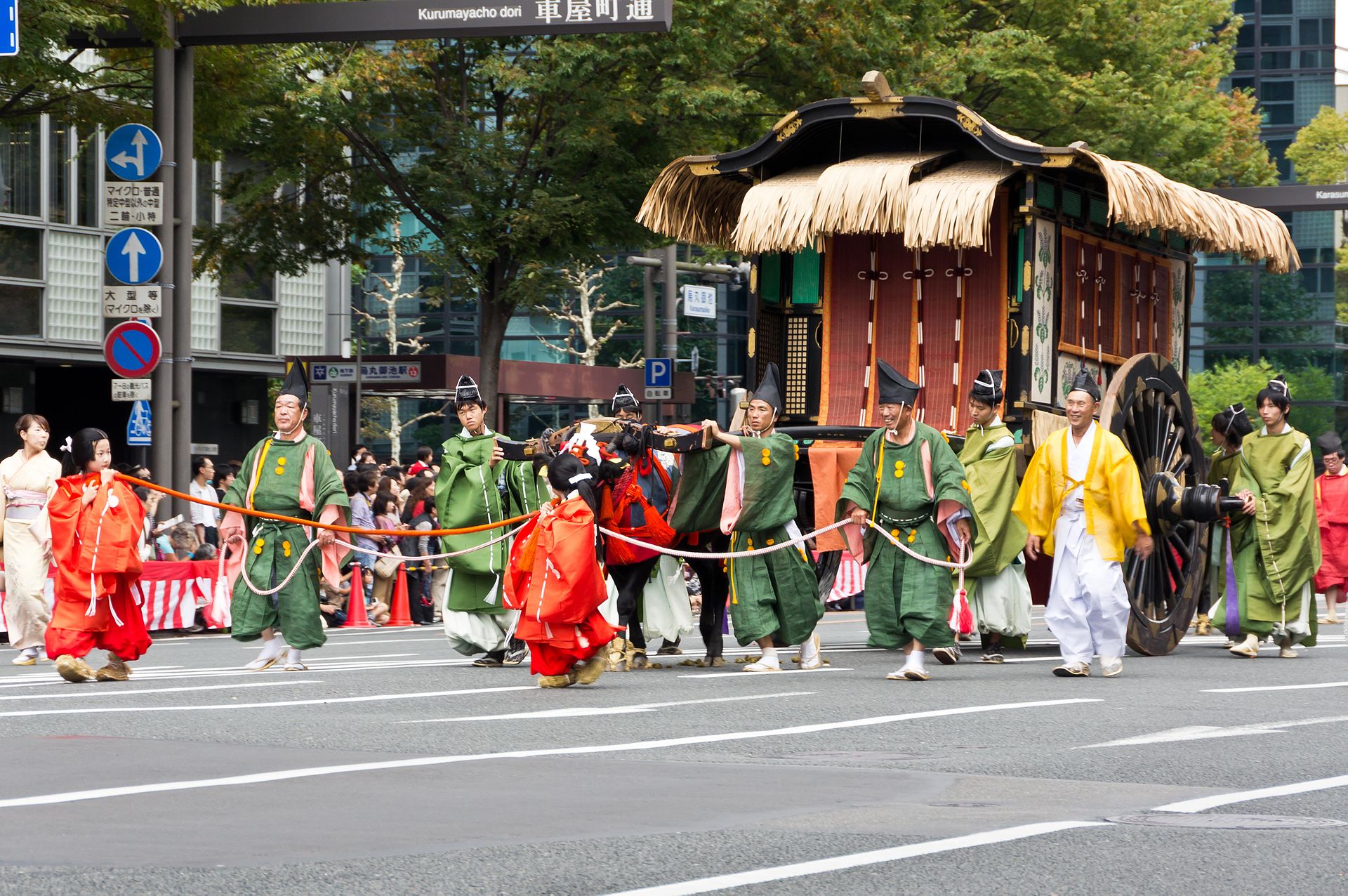
✴49→哲学の道 / The philosopher’s Walk
ーHow about a pleasant stroll between sights ?ー ー散歩の合間に散策を楽しみませんか?ー
●There you can enjoy the cherry blossms in spring and the autumn colors in fall.
●The philosopher’s Walk is two-kilometer walkway along a canal . it links two important sites : Ginkakuji and Nanzenji .
●The path is thought to be one of Japan’s best walkways. The water of the canal is drawn from Lake Biwa, which is the biggest lake in Japan . Along the path, There are about 450 cheery trees.
●The path is named after early 20th century philosopher Nishida Kitaro, who was a professor at nearby Kyoto University. He used to walk along this path almost every morning .
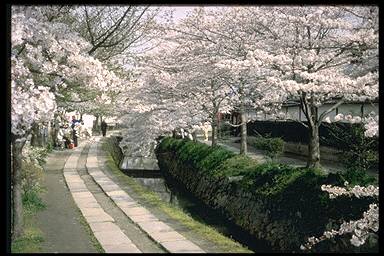
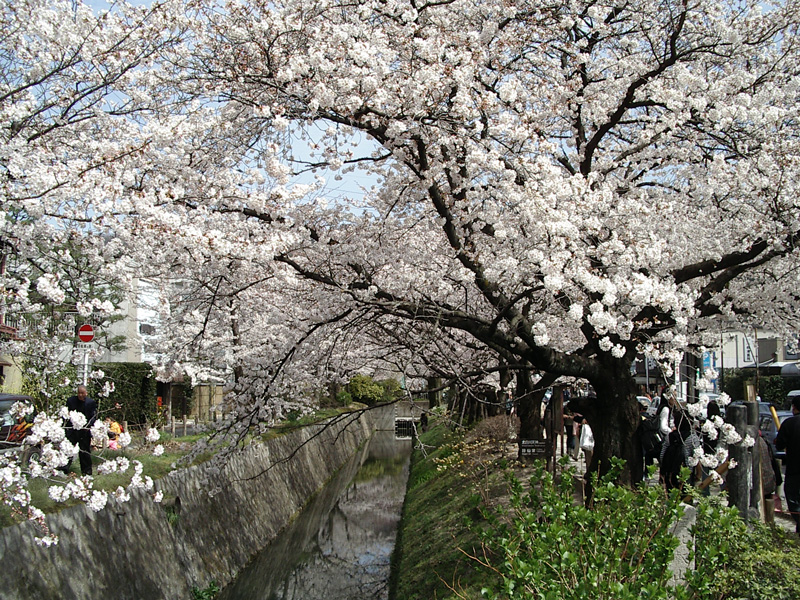
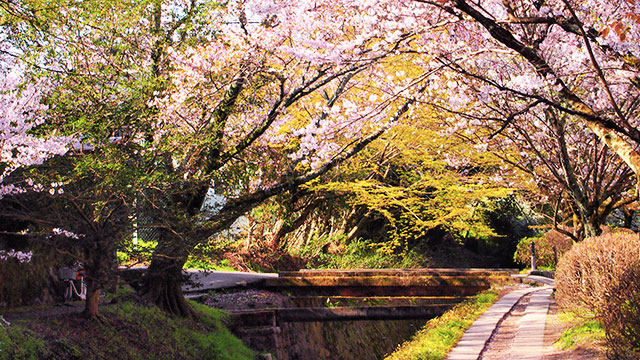
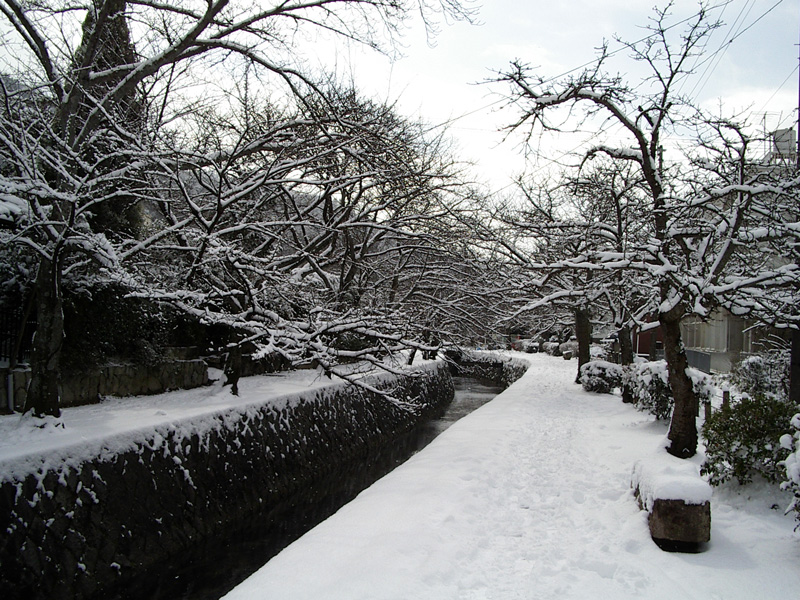
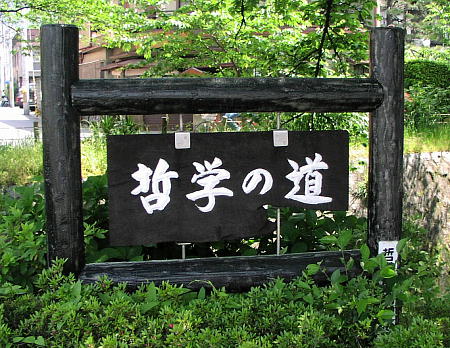
ー
ー
✴50→銀閣寺
✴51→龍安寺 / Ryoan-ji Temple
●
●
●
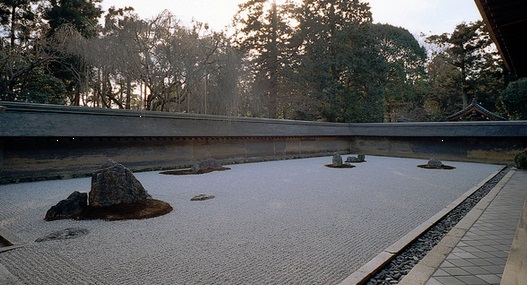
ー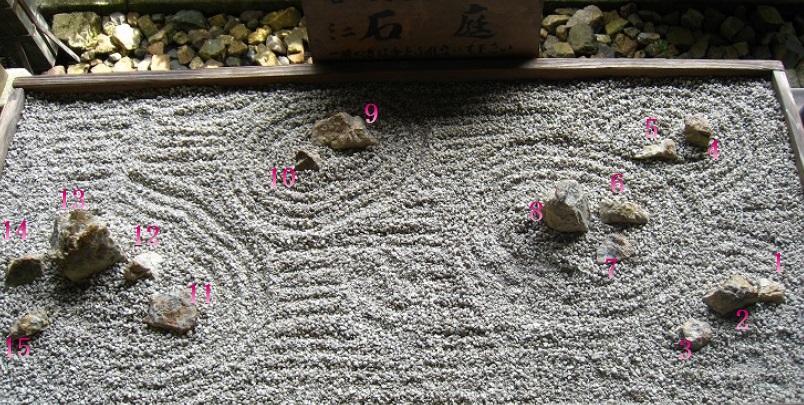
ー
✴52→◆和菓子 / Japanese Sweetsー
●Japanese sweets developed alongside the tea ceremony. A you can imagine, Japanese sweets have a refined appearance and taste .
●Common ingredients for Kyoto sweets are rice and other starches, namafu,red bean,roasted soybean powder,and green tea powder .
●Kyoto’s specialty sweets include yatsuhashi and warabimochi.
●Yatsuhashi is made from rice and sugar ,and is enjoyed fresh and baked. it has a distinctive cinnamon flavor .
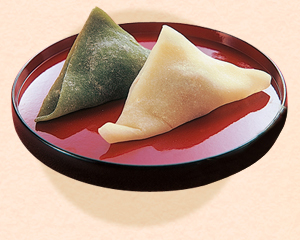
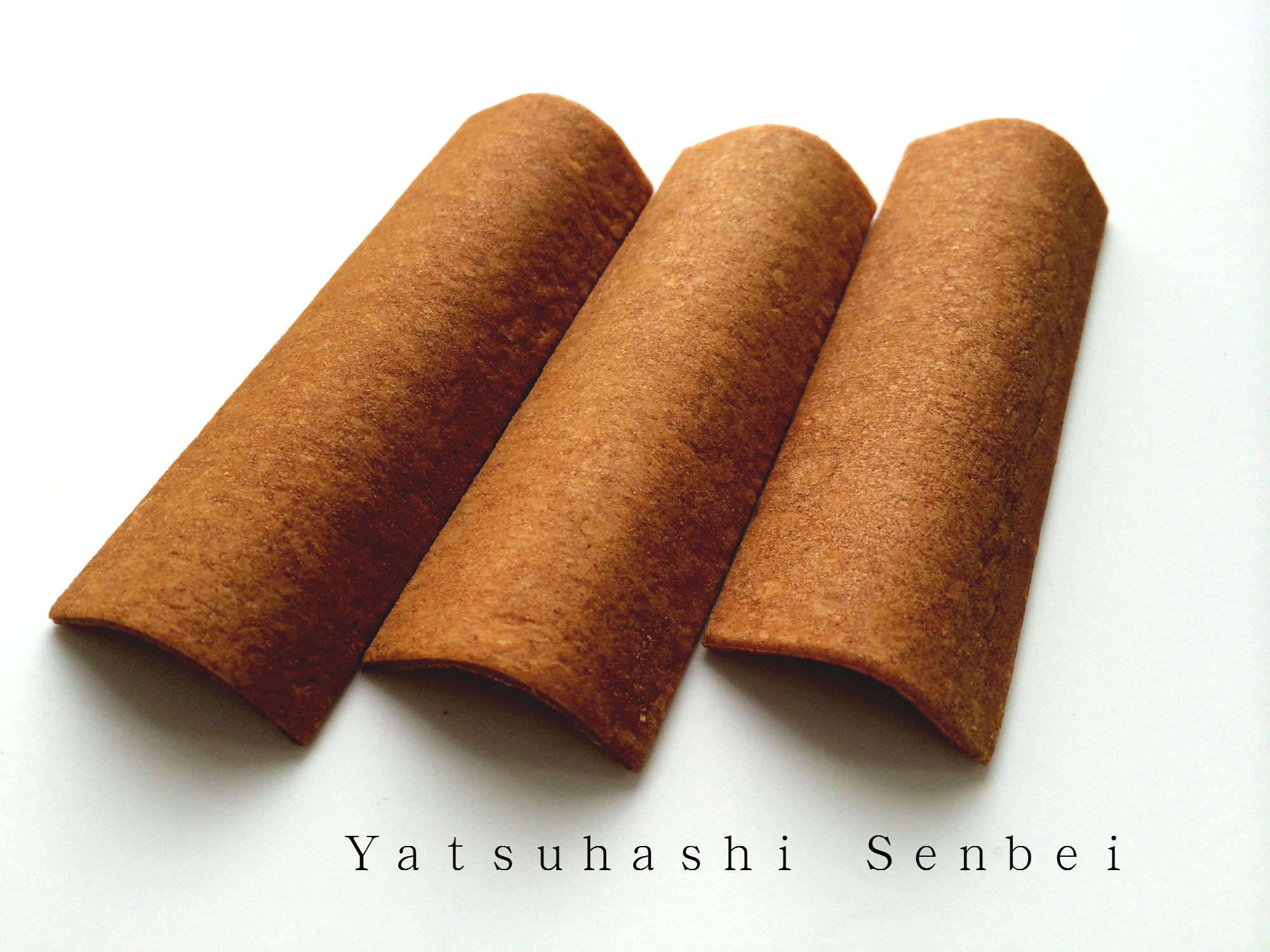
●Warabimochi is made from sugar and fiddlehead starch,and is served with a mix of suger and roasted soybean powder .
✴53→◆ 緑茶 / Green Teaー
ーThe highest quality Japanese teasー最高級の日本茶があります。ー
ー日本の緑茶には、おおまかに4つの種類があります。抹茶、玉露、煎茶、番茶です。ー
●There are roughly four different types of Japanese green tea : matcha,gyokuro,sencha and bancha .
●Matcha is the powdered green tea used in tea ceremonies .
●Gyokuro is made using the finest tea leaves and has a sweet fragrance .
●Sencha is less sweet and is used more widely .
●Bancha , the most popular tea , is even less sweet and has very little caffeine .
ー
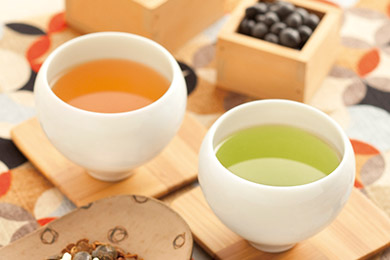
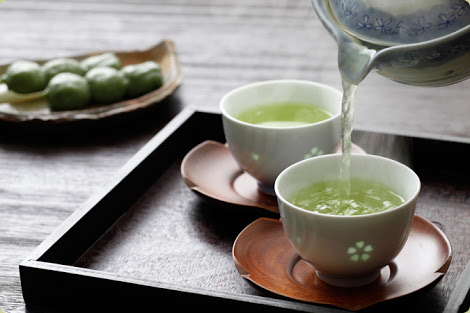
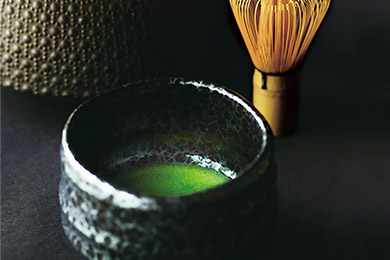
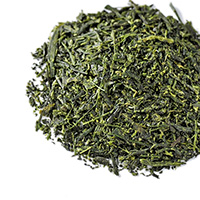
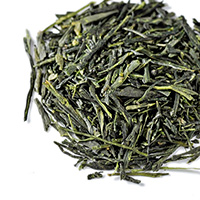
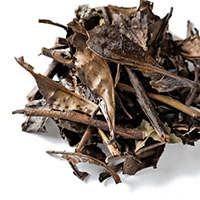
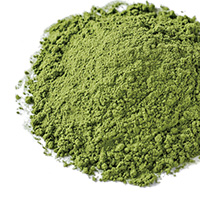
✴54→◆茶の湯 / Attending a Tea Ceremony / 特別な体験になるー
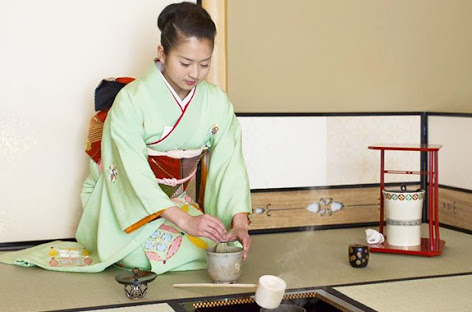
Let’s serve tea in a tea ceremony . Attending an authentic tea ceremony in Uozu and Kyoto city ,not to be missed .
The tea ceremony is much more than just drinking good green tea . Actually it’s a ritual where you can have a spritual and artistic experience .
There are many procedures to follow,leading to a harmonious relationship between the host and the guests .
When you attend a tea ceremony, you will be sitting in a tatami room. please be aware that the proper way to sit is to fold your legs under you. Good luck !!
「茶の湯とは、ただ湯をわかし茶を点てて、のむばかりなることと知るべし」と
千利休が言ったそうです。つまりこれが“茶の湯”の定義です。
お茶を振舞う亭主と、招かれた客とが心を通い合わせた状態の、一期一会をお茶
では大切にします。一期は一生、一会はただ一度の出会いです。 茶席で何度同じ
人々が会するとしても、今日の茶会はただ一度限りの茶会であるから、亭主も客も
ともに思いやりをもって取り組むべきというわけです。このような気持ちを持って
さえいればお茶を楽しめるというものです。
ということで、どなたでも、初めてのかたでも、体験でもwelcomeなのです。
一方、茶道はというと、単なる娯楽ではなく宗教の根本的な考え方に通じる、
人の心を養い、人間の価値を高めるための一つの教えとして学ぶものだそうです。
特に禅で教えられる精神を基にしていますが、禅の精神は、一点の非も見逃さぬ
ような鋭さをもちながら、悠々迷わず一直線を進み、その一歩の歩みの中に自己の
心の中を深く見つめ、磨いていく。というものと記載されているのを見ました。
というわけで、しっかり茶道を学ばれようと思われる方は、自己の修練の場として、
一つずつ作法を習得することを通じて、精神を鍛えてください。
お家元、千宗室は
『一碗のお茶をまず自分が楽しみ、そしてその一碗をお人と分かち合う一期一会
の機会をもつことが“茶の湯”。一方、茶の湯を楽しむ一人ひとりが立ち止まって
自分の歩んできた道を振り返った際に、その道が利休居士に続いているということ
を確認すること、それが“茶道”なのです。』と書かれています。
✴55→◆日本酒 / Sakeー
ーyou will find great sake brewersー ー良い名醸造所がありますー
● Kyoto produce some of the finest sake, or rice wine, because of its good underground water.
●There are roughly four types of sake .
●
●
●
●
●
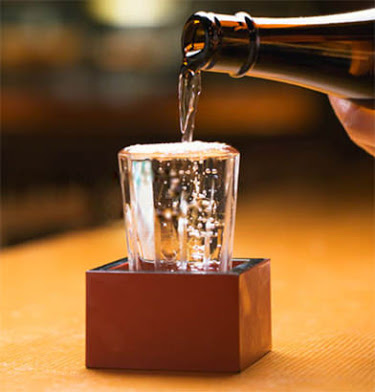
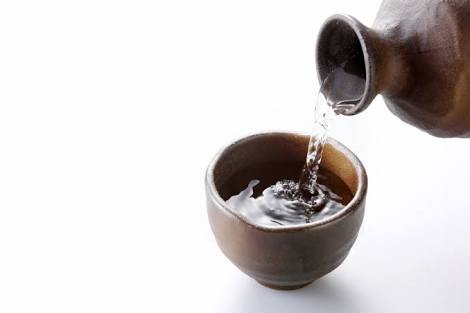
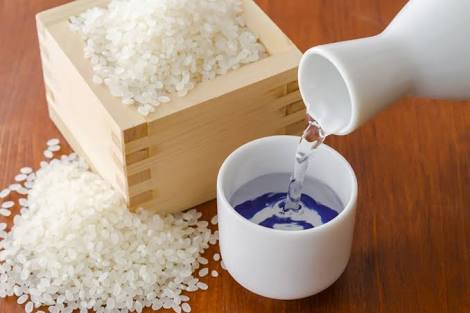
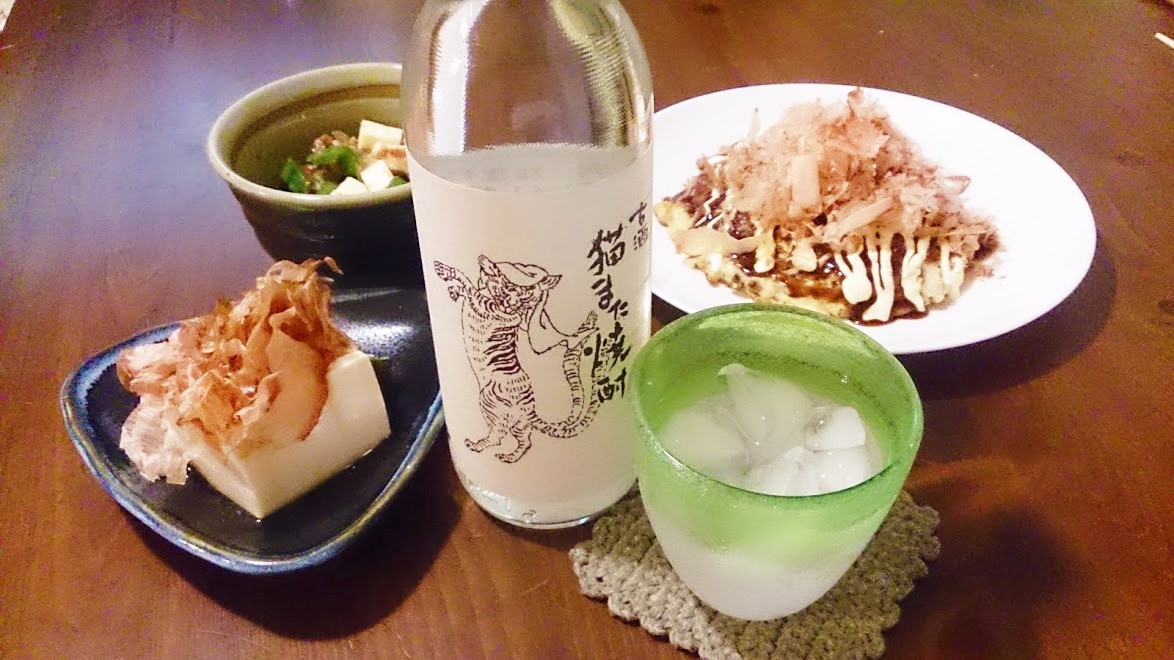
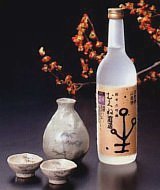
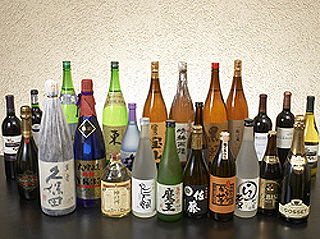
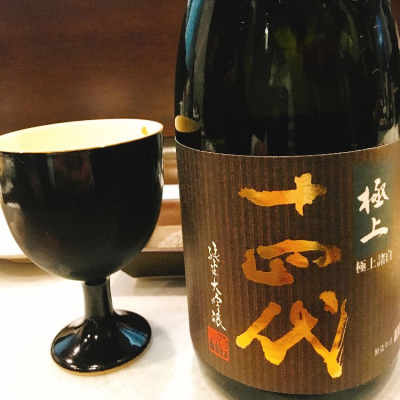
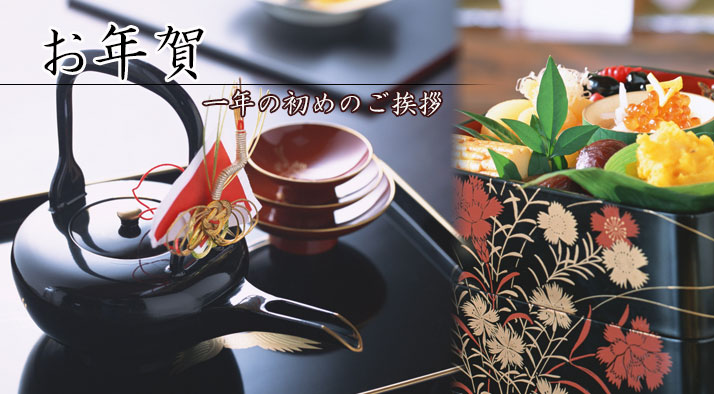
ー
✴56→◆白味噌 / White Miso
ーIt’s a sweeter and milder type of miso ー甘くてマイルドな種類のみそです。ー
●Miso is a soybean paste . Different areas in Japan have their own special miso . Kyoto’s special miso is shiromiso ,or white miso . This pale yellow miso is not aged as long as the darker types of miso .
●Shiromiso is sweeter and milder than other miso . It’s used for miso soup or as a seasoning for Kyoto cooking .
●Marinating fish for a few days in shiromiso is a very popular recipe called misozuke . Not only is the shiromiso great for preservation, but it enhances the flavor of the fish .
ー
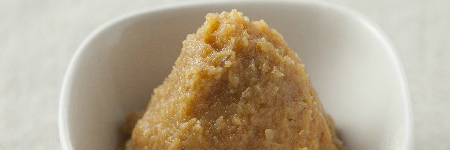
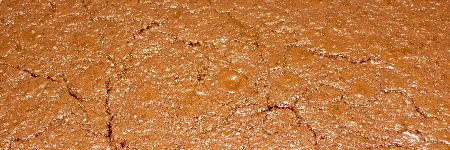

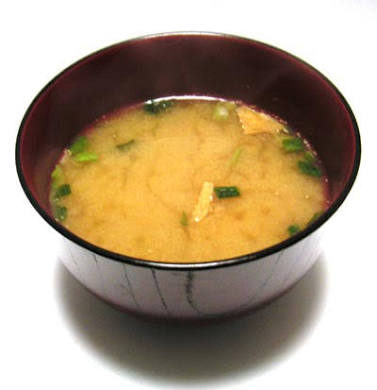
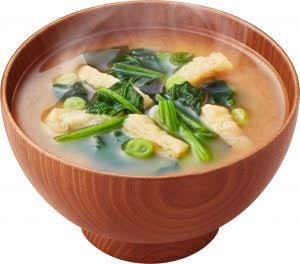
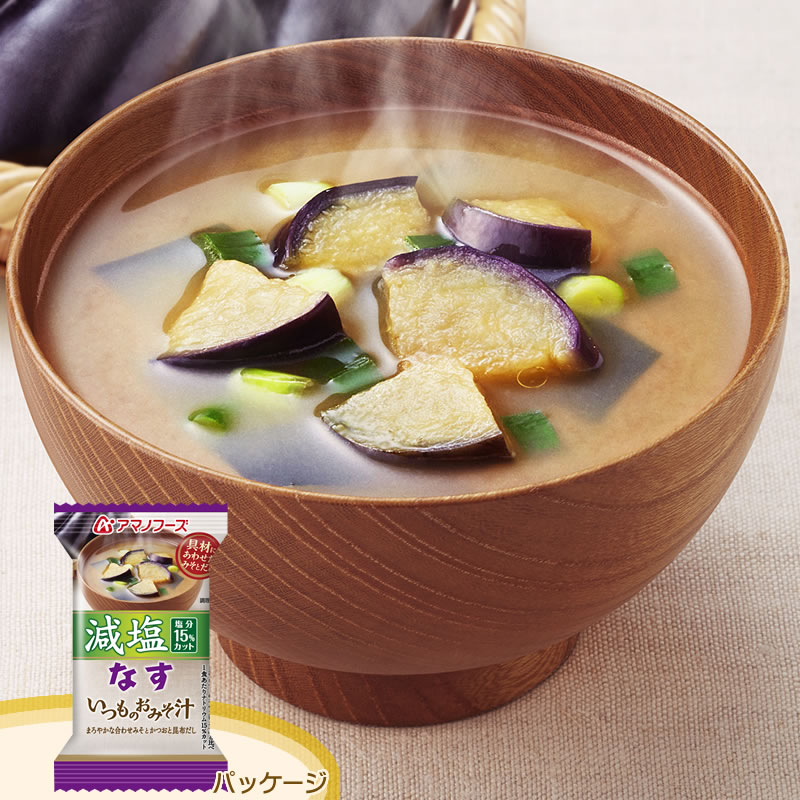
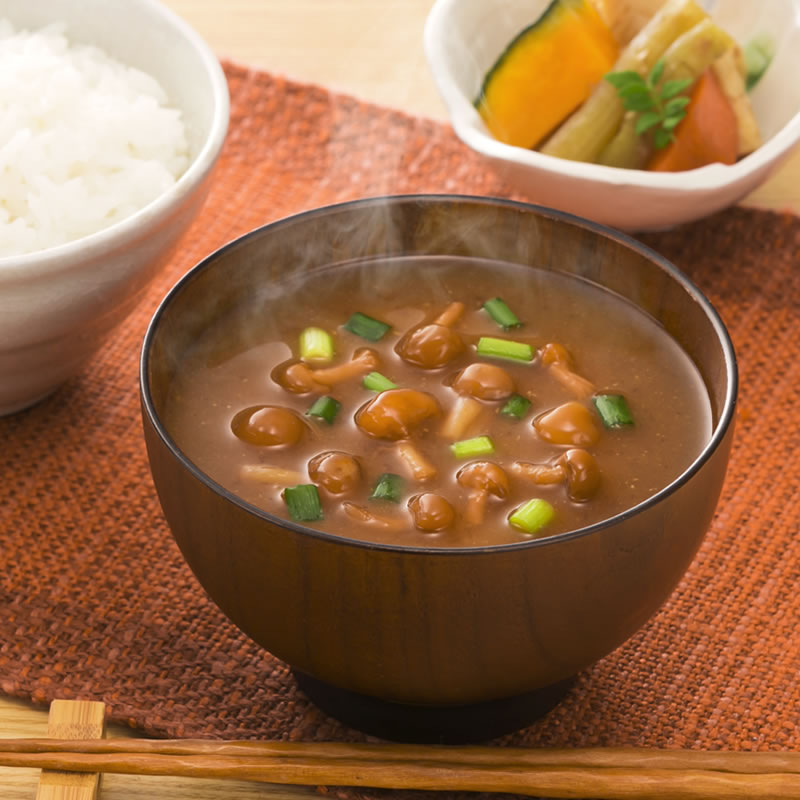
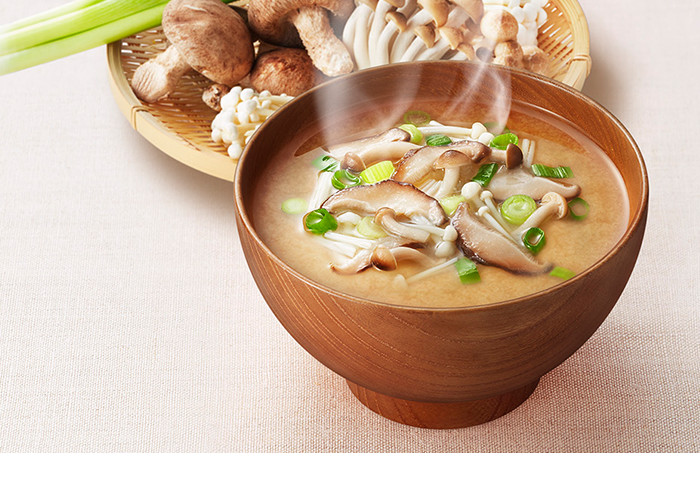
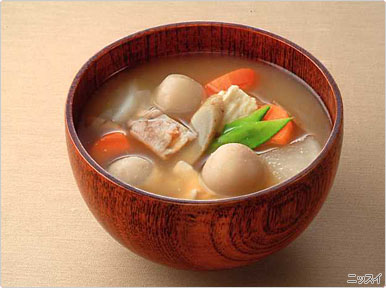
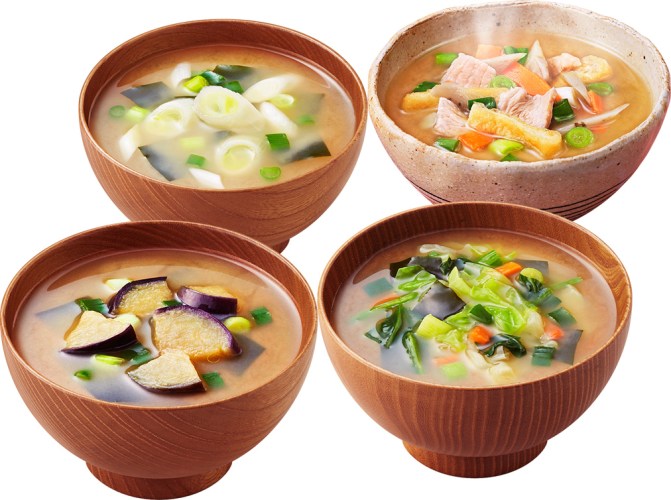
ー
✴57→◆京漬物 / Kyoto’s Pickles
ーIt’s very popular throughout Japan .ー日本全国でとても人気があります。ー
●Pickles are a part of the basic Japanese diet . The main difference between the Japanese and western pickles is that the Japanese pickles often use rice bran and keep the original flavor of the vegetables .
●Made using fresh , local vegetables, Kyoto-style pickles are very popular throughout Japan . They are often flavored with spices,herbs , and stock from fish and kelp.
●The Ohara area is famous for shibazuke, which are shiso-flavored pickles of cucumber and eggplant .
●Shibazuke was originally developed for an empress who had retired in Ohara back in the 12th century .
ー
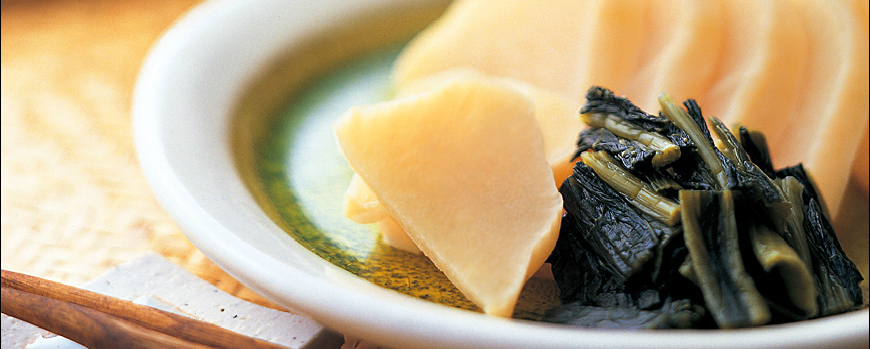
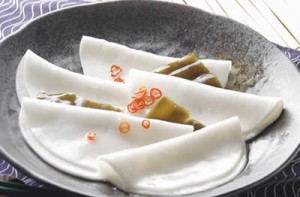
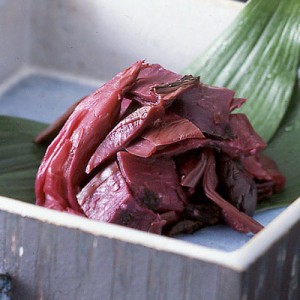
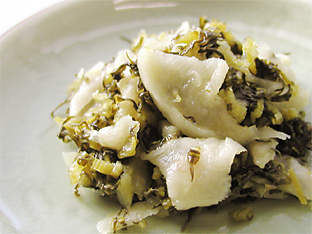
✴58→◆七味と山椒 / Shichimi and Sansho Spices
ーIt’s the spices for Kyoto cuisine .ー 京料理のスパイスです。ー
●Spices such as shichimi and sansho have been an important part of the Kyoto diet . Many kinds of Kyoto food have subtle flavors , so spices become all the more important .
●Shichimi is a mix of several spices such as red chili peper ,sesame, and tangerine peel . Sansho powder is taken from Szechuan pepper . You will also often see leaves of sansho used in Kyoto cuisine .
●Shichimi is often used for soba and udon noodles . Sansho is commonly used on grilled eels .
ー
✴59→◆生麩 / Wet Wheat Gluten
ーIt’s simple , but healthy and delicious .ーシンプルですが、ヘルシーで美味しいです。ー
●The taste is very simple by itself so it is often served with a miso sauce . Namafu ,or wet wheat gluten , has a soft , chewy texture . it is served freah, baked , or fried . The taste is very simple by itsclf , so it is often served with also miso sauce .
●Another popular way of serving namafu is as a dessert .
●It’s often mixed with rice past, sweetened with red bean paste, and made into the shapes of seasonal flowers .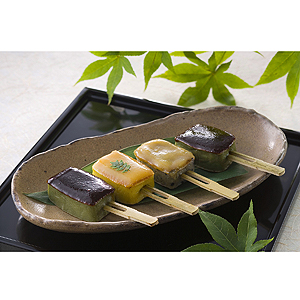
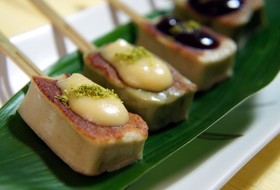
ー
✴60→◆ゆば / Yuba
ー
●
●
✴61→◆豆腐作り / Making Tofu
ーLet’s make our own Kyoto-style tofu ー 私たちの京豆腐を作りましょうー
Kyoto’s is famons for high-quality tofu . Tofu in kyoto has been enjoyed as part of the Buddhist vegetarian cuisine and kaiseki course meals .
The excellent, soft well water in Kyoto is said to contribute to its quality .
✴62→◆京懐石 / Kyoto Kaiseki Course
ーSeasonal ingredients are featured.ー ー旬の素材が目玉です。ー
●Kyoto Kaiseki started as a light meal served before a tea ceremony . The food culture was polished while serving aristocratic families .
●Kaiseki is a Japaness multi-course meal . In particular, Kyoto Kaiseki features the specialties of Kyoto .
●Kaiseki has two origins : one is the formal style of food enjoyed by samurai and aristocrats , and the other is a light meal served before a tea ceremony .
●
●
●
ー
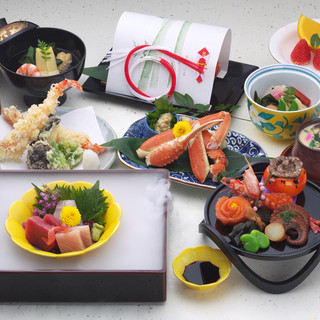
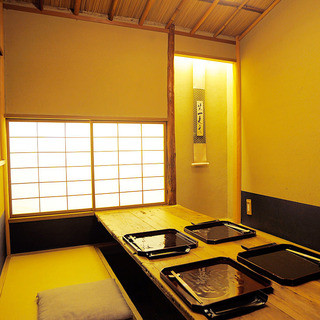 ー
ー
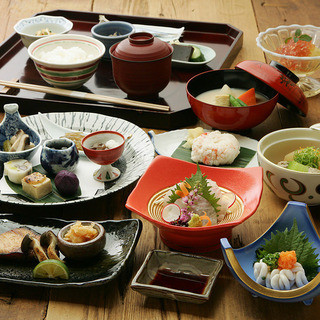
ー
✴63→◆精進料理 / Buddhist Vegetarian Cuisine
ーyou don’t have to be a vegetarian to enjoy it . ーベジタリアンでなくても楽しめますー
●Shojin cuisine is a special kind of vegetarian food for Buddhist priests and nuns.
●
●
ー
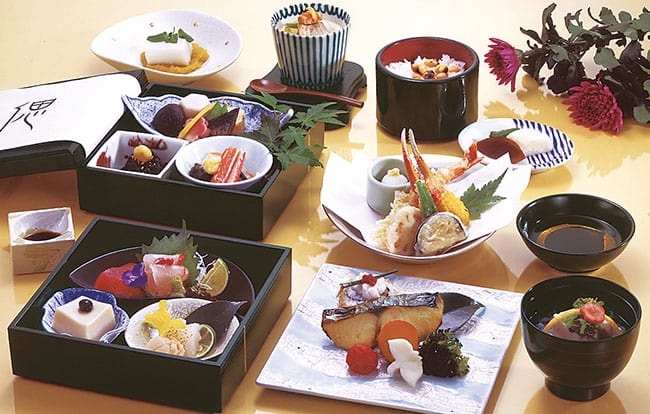
ー
✴64→◆おばんざい / Kyoto’s home Cooking
ーEnjoy the local home cookingー ー京都の家庭の味をお楽しみ下さいー
●
●
●
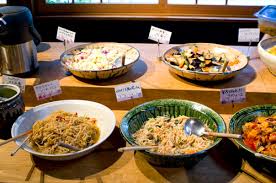
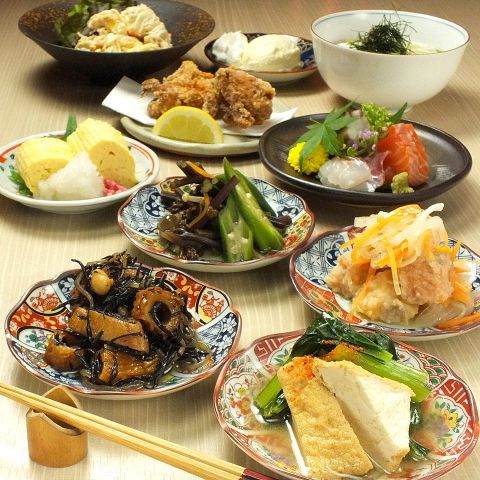
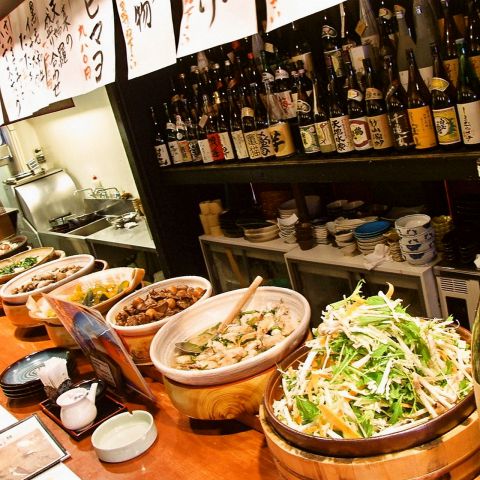
✴65→◆京都と西洋料理 フュージョン / Fusion of Kyoto and West
ーHow about Italian in a machiya ?ー ー町家でイタリアン料理はいかが?ー
●
●
●
●
✴66→◆箱寿司 /Hako Sushi
ーKansai’s specialty sushiー ー関西名物の寿司ですー
●The word sushi in Japan means a food made of seasoned rice with a topping. The type of sushi you know is probably the Tokyo style, which is a ball of seasoned rice topped with a slice of fish .
●Another style of sushi called hako sushi is popular in the Kansai region. In the style , the seasonal rice and toppings are tightly pressed in abox . this way, the flavors of the toppings are transferred to the rice,adding a special testiness .
●Popular hakp sushi toppings are mackerel , shrimp , or eel . The ingredients of hako sushi are cooked or cured .
●ー大阪府、伝統的郷土料理
箱細工職人と寿司職人が織り成す、もてなし料理
箱寿司(大阪寿司)
●ー木製の型にエビや魚の切り身と酢飯を重ねて詰め、押して四角い形に整える寿司。”押し寿司”、”大阪寿司”とも呼ばれる。大阪府では明治時代にサバやアジなどを材料とした押し寿司が普及し、その派生料理として日常のもてなしを目的にタイやエビ、アナゴの高級食材を用いた”箱寿司”が考案された。押し型を作る職人と寿司職人の技が織り成す箱寿司は大変人気を呼び、もてなし料理の定番ともなった。仕込みにかかる手間から提供店は減りつつあるが、今もなお伝統技術と味は引き継がれている。
ー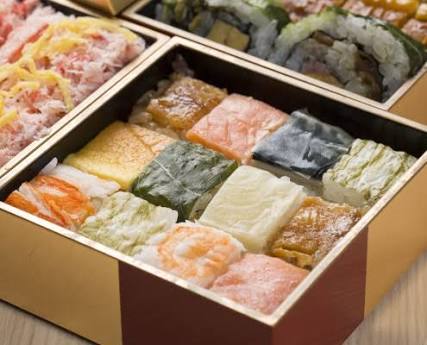
ー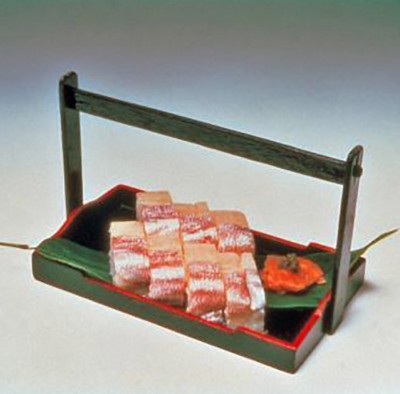
ー
✴67→はも鱧料理 / Hamo Cuisine
●
●
●
✴68→西陣織や友禅染の洋服 / How about mixing Western and Japanese style ?ー
●
●
●
●
✴70→貴船神社の水占みくじ / Water Fortune Telling at Kibune-jinja Shrine
●
●
●
✴71→嵐山もみじ祭 / The Arashiyama Maple Festival
ーYou can enjoy traditional performances and beautiful red maples .ー伝統芸能と紅葉が楽しめますー
●Momiji Matsuri , Maple Festival is held every year in November in the area of Arashiyama . At thi[ elegant festival , you will see boats on the Oi river around the Togestu Bridge . On each boat , performers presemt traditional performing arts such as noh and kyogen .
●Recreational boat rides in Arashiyama dates back about 1,000 years. Back then aristocrats enjoyed making poems while taking leisurely rides on their boats .
●The festival is held in appreciation of Arashiyama Zao-Gongen, the guardian of the area . Gongen is Japan’s unique Buddhist deity .
●11月第2日曜、嵐山渡月橋上流付近。嵐山小倉山のもみじの美しさを讃え、もみじに感謝するとともに、一帯の豊かな史跡や文化を色とりどりの船上で盛り上げ、紹介する目的で、嵯峨、嵐山の社寺の支援を受け、1947年(昭和22)に始められた。天龍寺船、野ノ宮船など社寺の船のほか、能楽、舞楽、嵯峨大念仏狂言、今様歌舞、長唄等々芸能船が川を上り下りして技を競う。
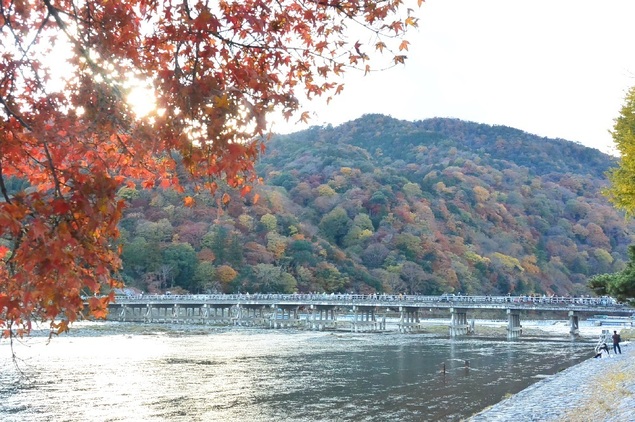 ー
ー
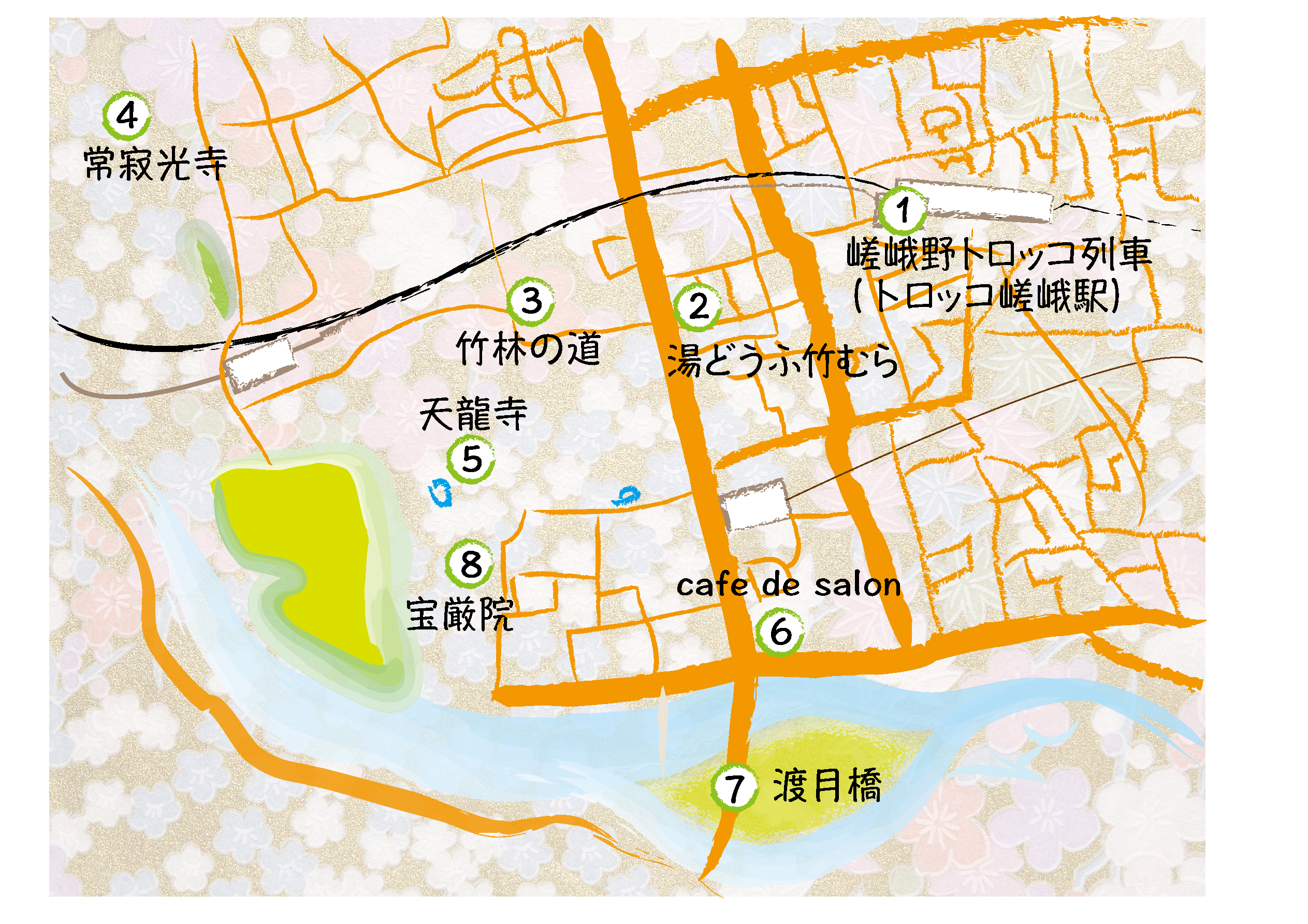
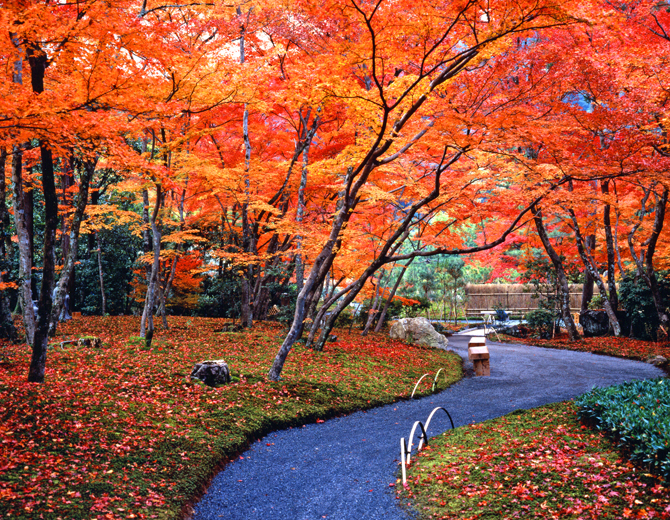
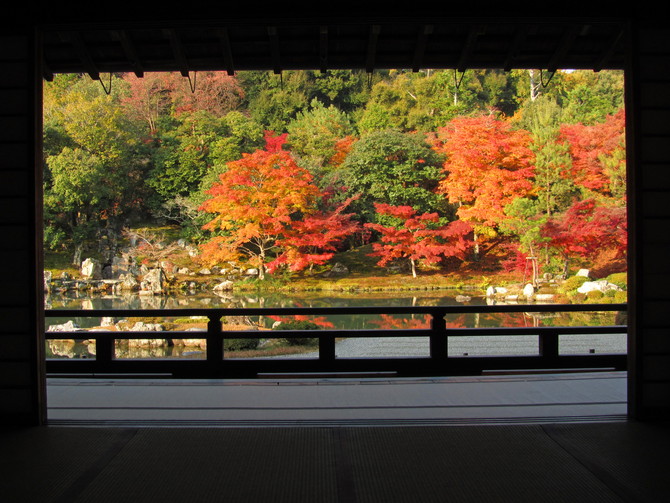
ー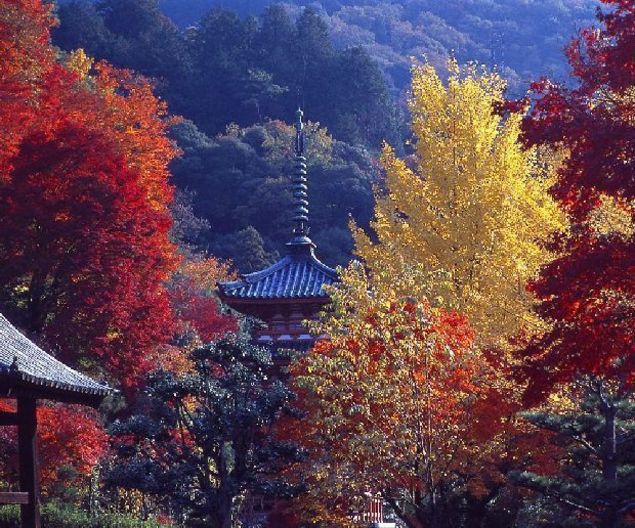
ー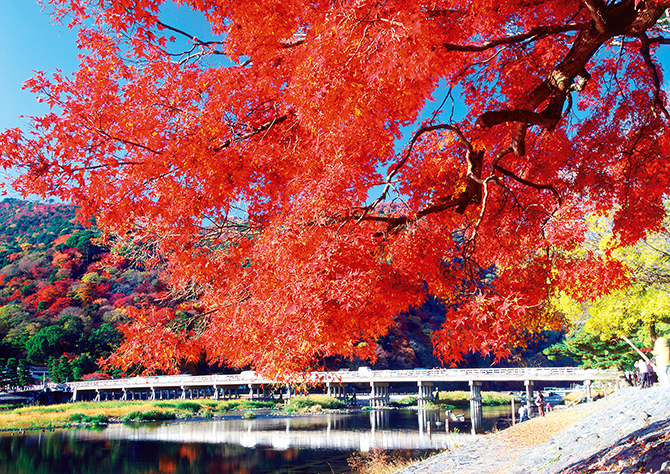
✴72→鞍馬の火祭り /
●
●
●
✴73→伏見稲荷大社 /
●
●
●
●
✴74→常寂光寺と落柿舎 /
●
●
●
ー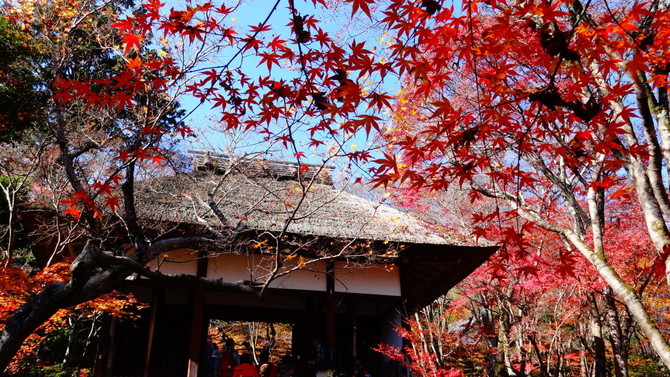
ー
✴75→京都御苑
ーIt was the home of Japanese emperors ー天皇陛下のお住まいでした。ー
●The emperors of Japan and many aristocratic families lived in the Kyoto Im perial Palace area until the 19th century . Today, the grounds are used as a large public park, and some parts of the old Palace buildings are open to the pubic .
●For example, you can visit the two main imperial palace complexes: Kyoto Gosho and Sento Gosho . The emperors and high-ranking aristocracts live in these palace and performed their official duties .
●There is also the Kyoto State Guest House where the goverment hosts important events or receives VIPs from around the world . 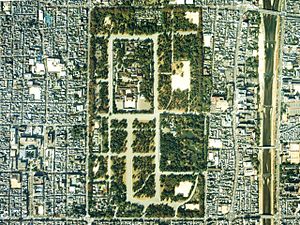
ー
ー
✴76→先斗町、鴨川岸 /
●
●
●
✴77→金閣寺 /
●
●
●
✴78→地主神社 /
●
●
●
✴79→平等院 /
●
●
●
●
ー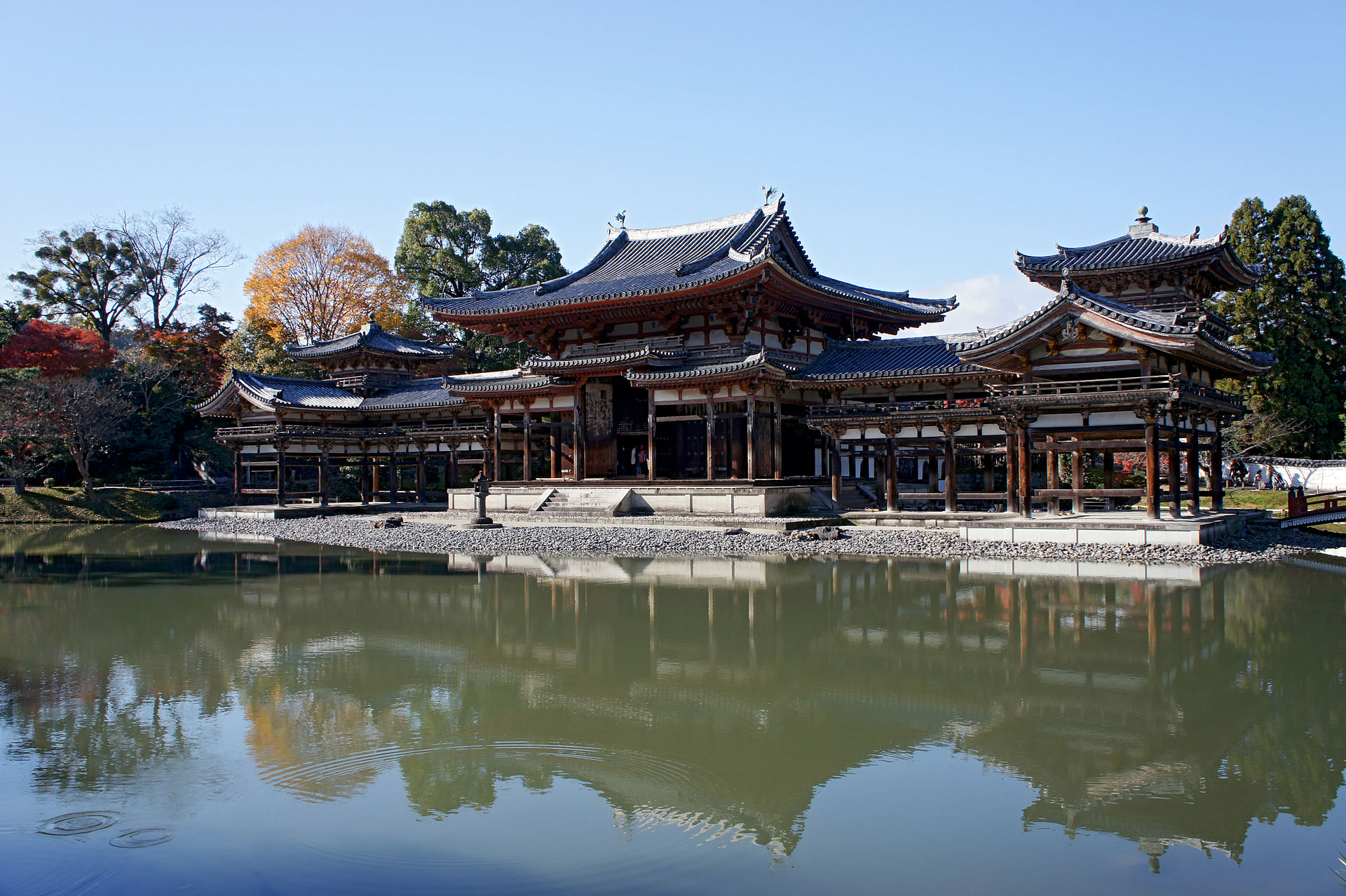
ー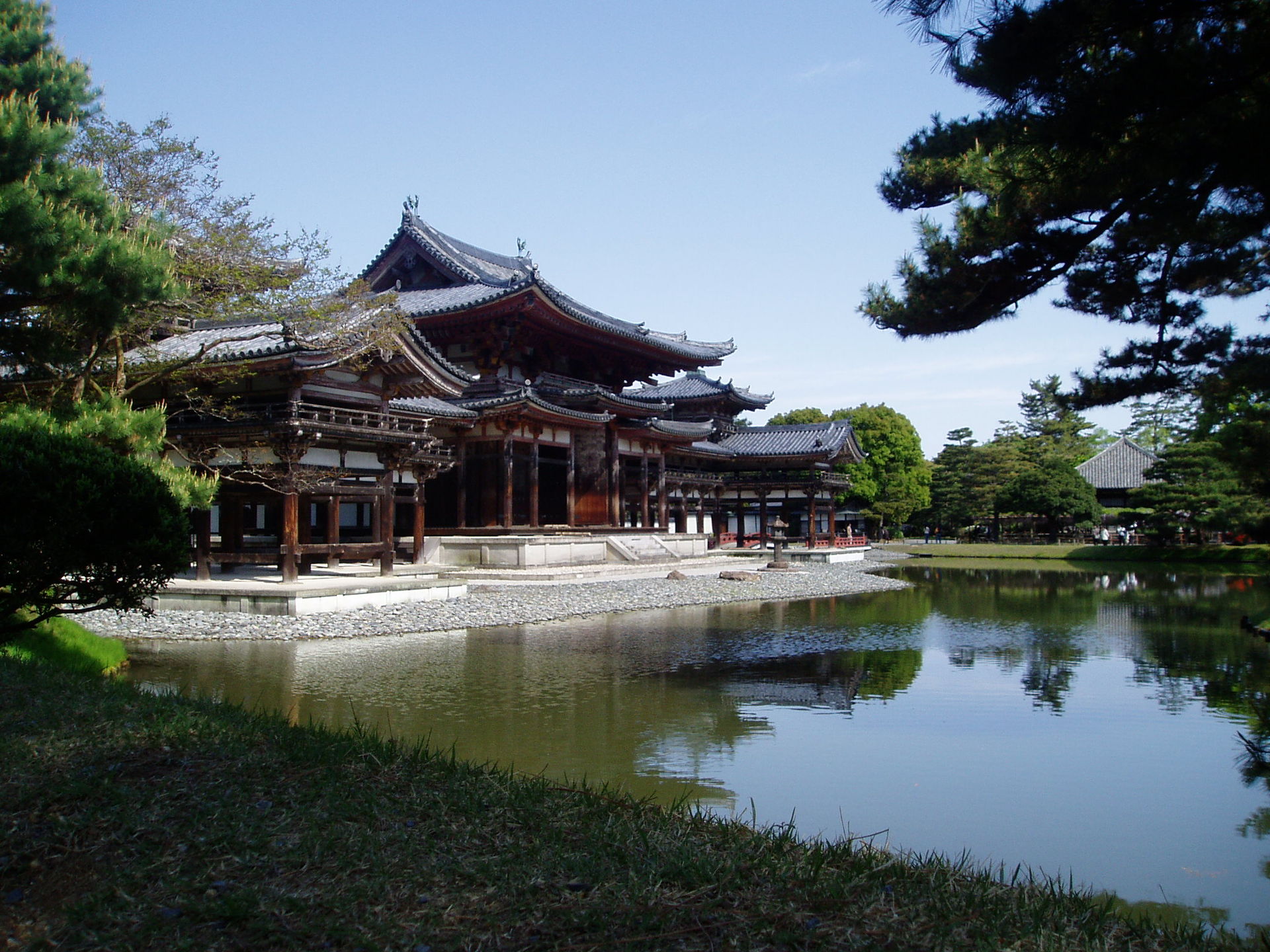
ー
ー
✴80→
●
●
●
●
ーーーーーーーーーーーーーーーーーーーーーーーーーーー
ー◆ーJapaness foodー◆ ー日常の日本料理ー114例を紹介する。
Aー✴ ー ◆Prefaceー ーはじめにー
●Japannese cuisine is attractive because of the
Bー✴ー花鳥風月の日本の味ー
Cー✴ ー春、Spring Seasonー
Dー✴ー夏、Summer Seasonー
Eー✴ー秋、Autumn Seasonー
Fー✴ー冬、Winter Seasonー
ーーーーーーーーーーーーーーーーーーーーーーーーーーーー
ー◆ー Japanese Local home Cookingu and Basic Japannes Dishes ◆ ー114例を紹介する。!!
また、以下、魚津市で食べられメニューから!!
Aー◆ー魚津市のお店で、食べられる日本料理、日常の料理とお店紹介
メニューから
1→焼き鳥
2→うどん、そば
3→焼そば
4→お好み焼き
5→にぎり寿し
6→ちらし寿司
7→鉄板焼き
8→親子丼、天丼、牛丼
Bー◆ー魚津市のお店で、食べられる洋食料理とお店紹介
1→イタリアン料理、おすすめのー2店
2→スペイン料理、バル、ワインー1店
Cー◆ー魚津市の和食のおすすめ店からー
1→ミラージュホテル、2階和食店、
2→お寿司、
3→
4→
5→
ーーーーーーーーーーーーーーーーーーーーーー
✴1→◆あじの塩焼きーSalt-Grilled Horse Mackerel .
Very popular grilled fish dish to enjoy the flavor of oily horse mackerel .
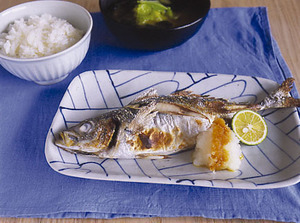
✴2→◆だし巻き卵 / Rolled Omeletー
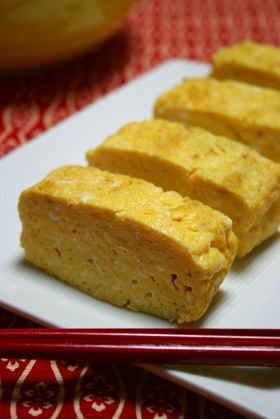
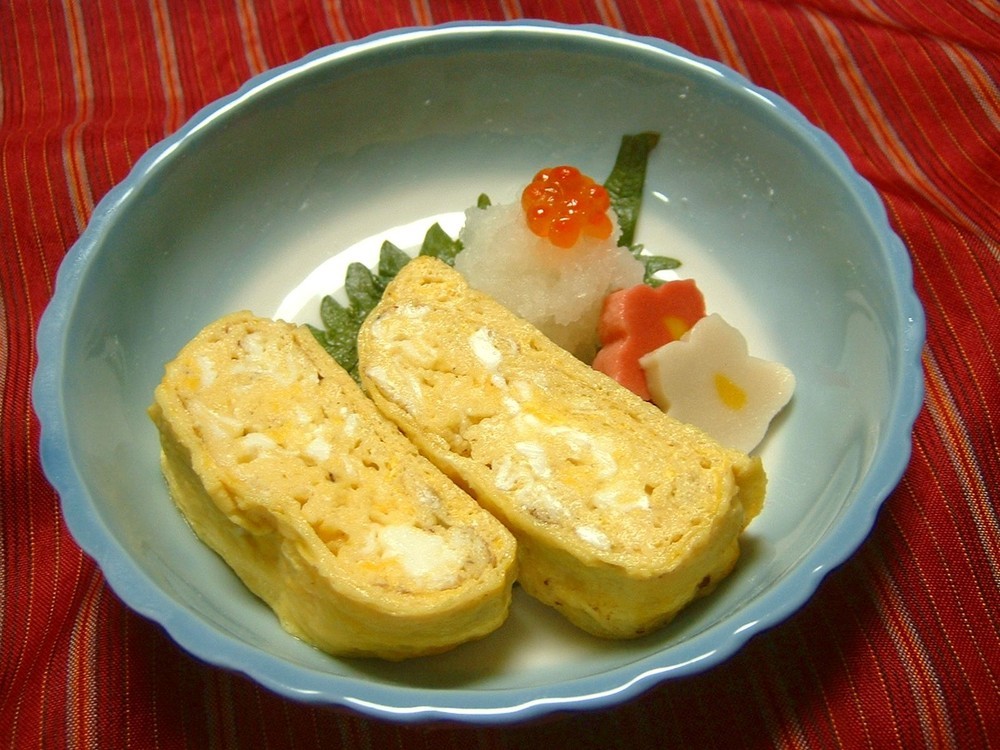
✴3→◆鶏肉のつけ焼き / Chicken Saute
✴4→◆焼きなす / Grilled Eggplant
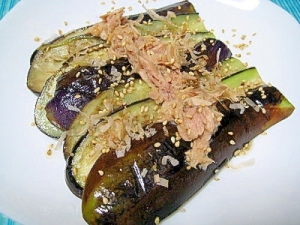
✴5→◆なすみそ田楽ー
✴6→◆さわらの西京焼きーGrilled Spanish Mackerel, Saikyo-style.
✴7→◆ぶりの照り焼きーJapanese Amberjack Teriyaki .
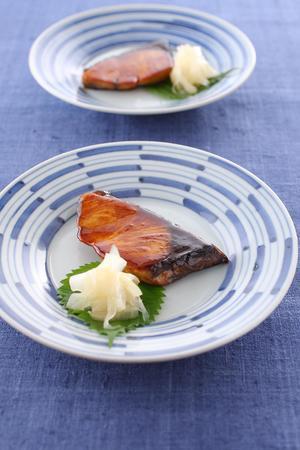
✴8→◆豚肉のしょうが焼きーGinger Pork Saute.
✴9→◆牛肉のたたきーQuick-seared Beef .
✴10→◆お好み焼きーAs-you-like-it. Pancake .
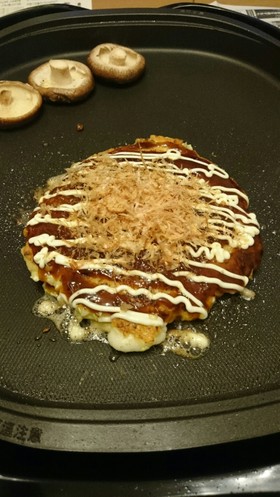
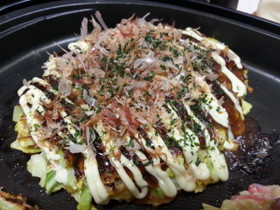
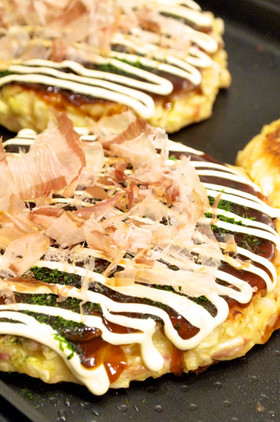
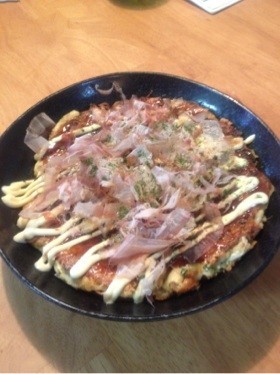
✴11→天ぷらの盛り合わせーAssorted Tempura .
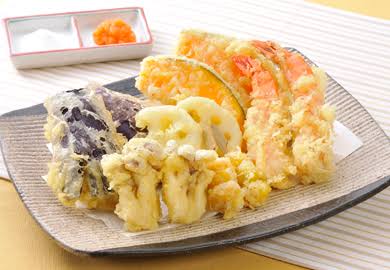
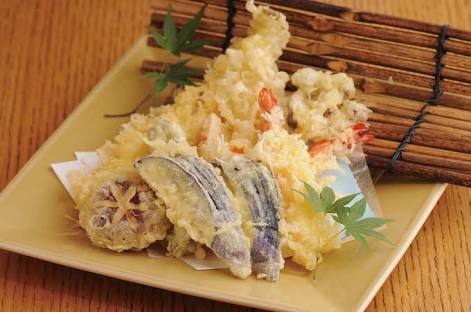
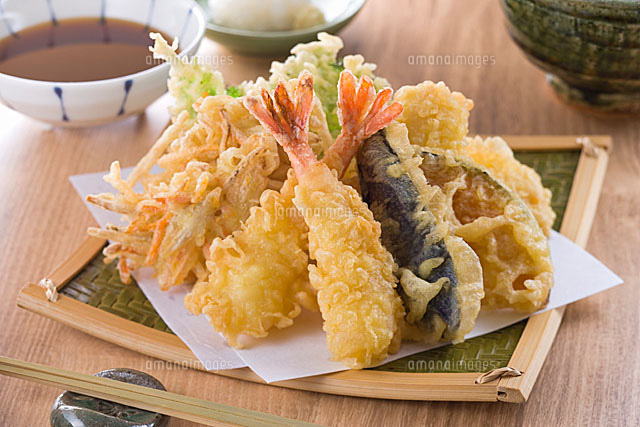
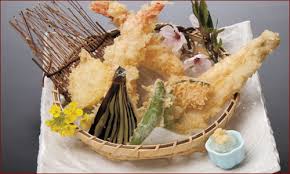
✴12→れんこんのエビはさみ揚げー
✴13→中華風の衣揚げー
✴14→鶏肉の竜田揚げー
✴15→◆とんかつ / Pork Cutlet
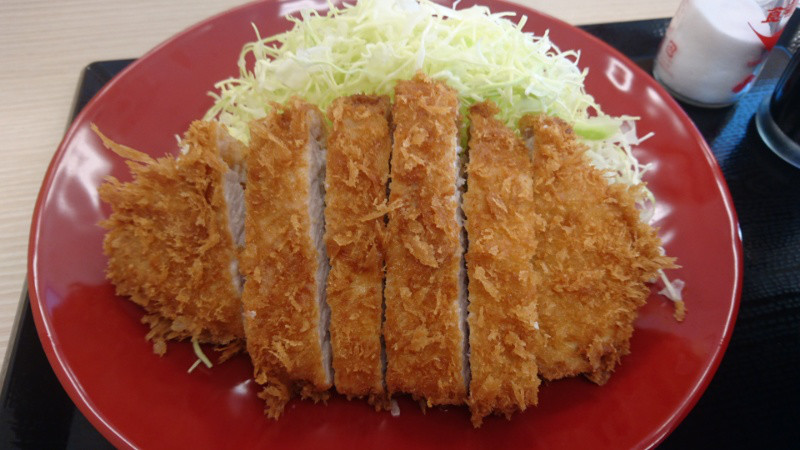
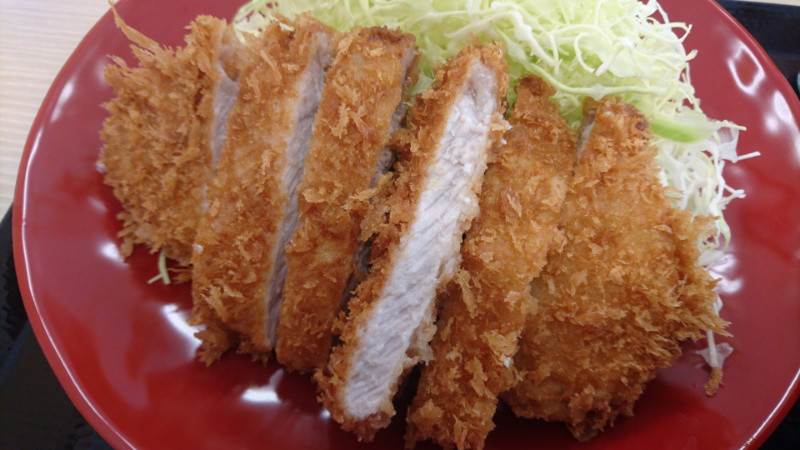
✴16→◆かきフライ / Deep-Fried Oyster
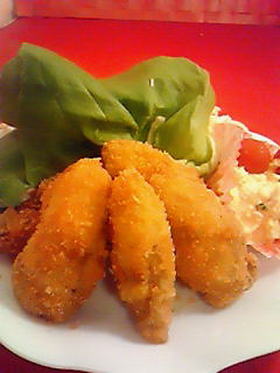
✴17→かれいの唐揚げ / Deep-Fried Sole
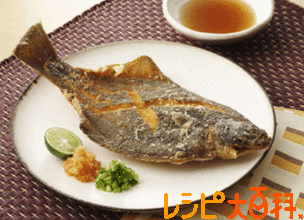
✴18→◆小アジの南蛮漬けー
✴19→◆ポテトコロッケー
✴20→◆里いもの煮っころがしーTaro-Tumbles .
✴21→◆肉じゃがーBraised Meat and vegetables.
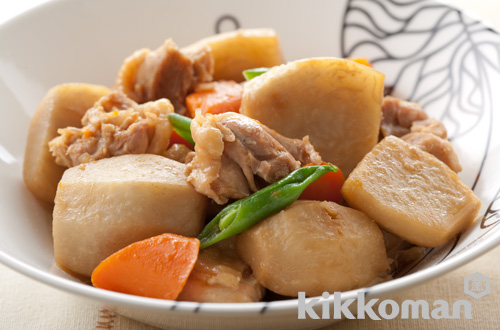
✴22→◆手羽先と里いもの煮物ー
✴23→◆筑前煮ーChiken and vegetables. Chicken-style.
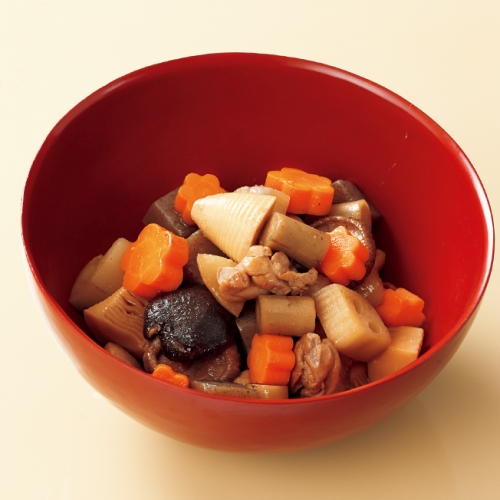
✴24→◆きんぴらごぼうーBurdock Kinpira .
✴25→◆れんこんのきんぴらーLotus Kinpira .
✴26→◆かぼちゃの煮物ーSimmered pumpkin .
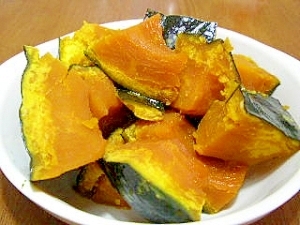
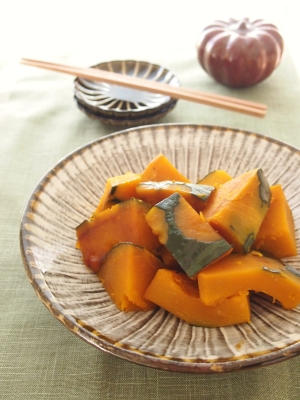
✴27→◆ふろふき大根ー
✴28→◆ぶり大根ー
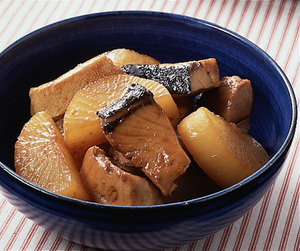
✴29→◆いかと大根の煮物ー
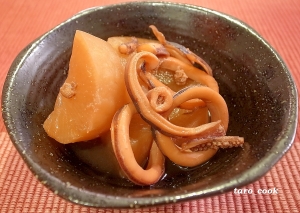
✴30→◆若竹の煮物ー
✴31→高野豆腐とふきの炊き合わせー
✴32→ひじきの煮物ー
✴33→◆切り干し大根煮ー
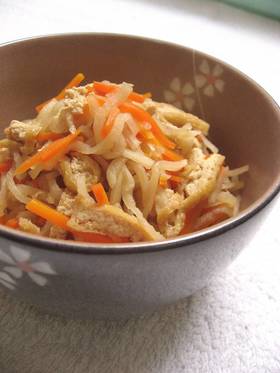
✴34→◆さばの味噌煮ー
✴35→めばるの煮つけーSimmered Rockfish.
✴36→◆豚の角煮ー
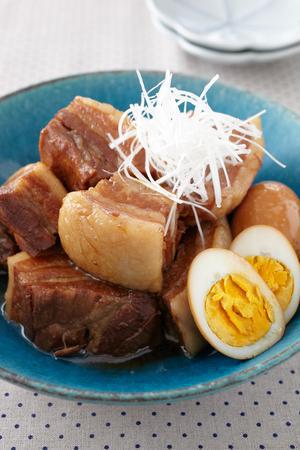
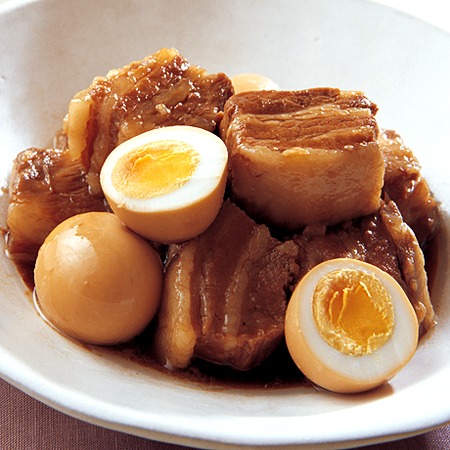
✴37→◆五目炊き込みご飯ーMixed Rice
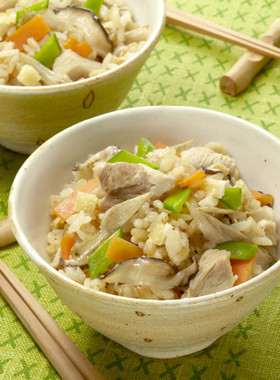
Healthy and tasty rice dish with many ingredients everyone will love it.
✴38→◆赤飯ーRed Rice .
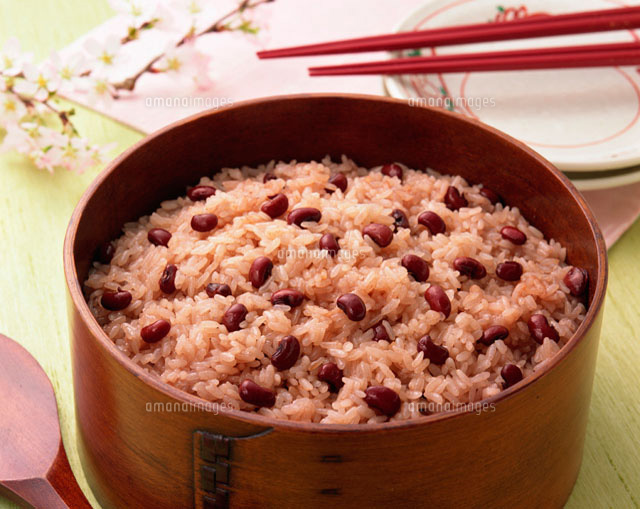
A Japanese traditional rice dish indispensable for celebrations
✴39→◆親子丼ーChicken-‘n’-on Rice
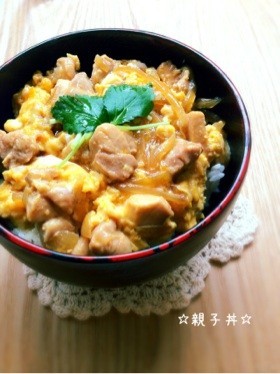
✴40→◆天丼 / tempura bowlーTemqura on Rice.
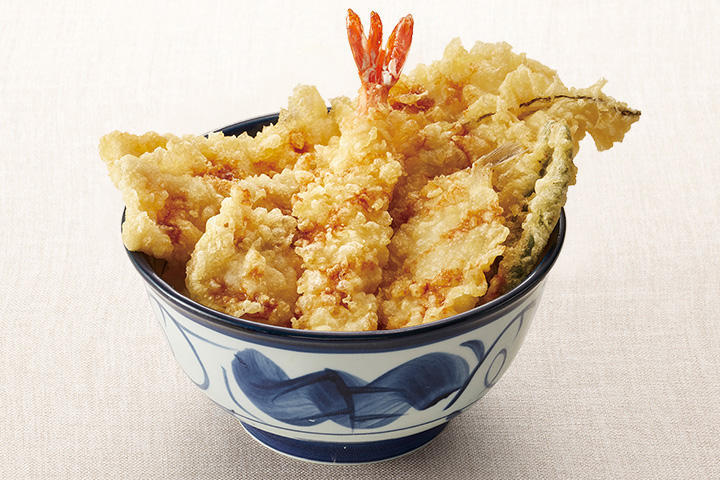
✴41→◆カツ丼ーPork Cutlet on Rice .
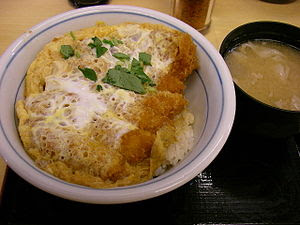
✴42→◆牛丼ーBeef Bowl.
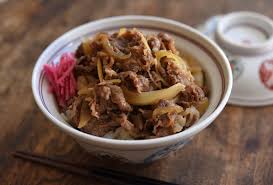
✴43→◆まぐろの漬け丼ー
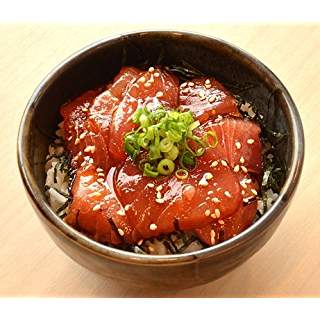
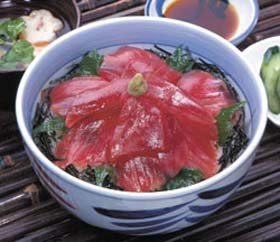
✴44→◆高菜チャーハンー
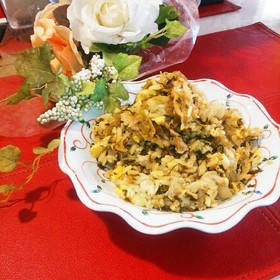
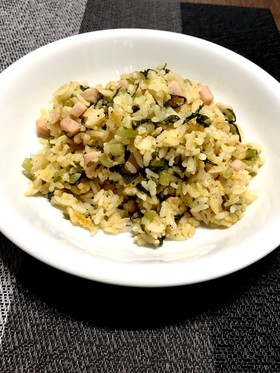
✴45→◆オムライスーOmelet Rice.
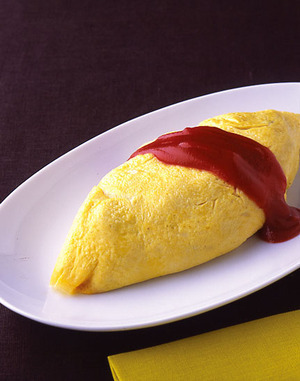
✴46→◆おにぎりーRice Ball.
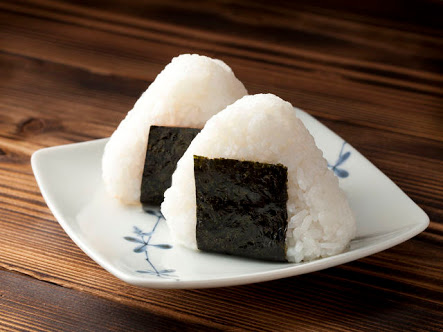
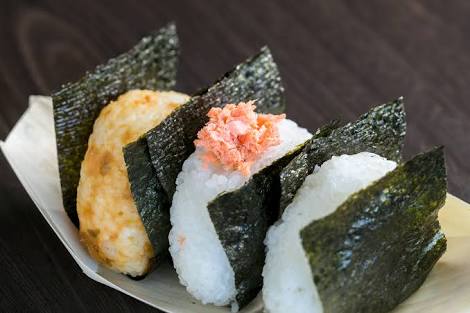
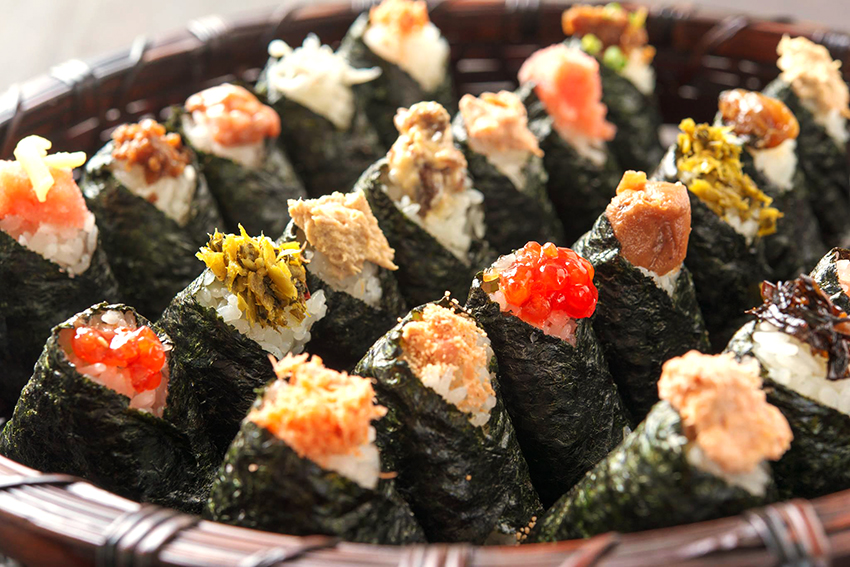
✴47→◆白がゆー
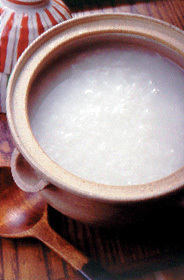
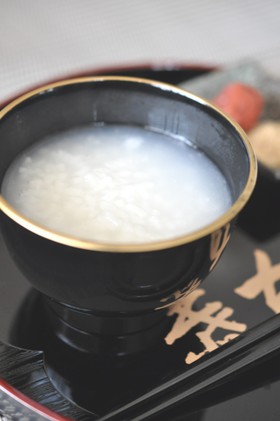
✴48→◆お茶漬けー
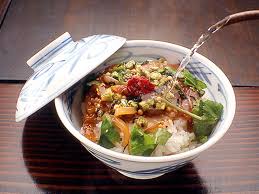
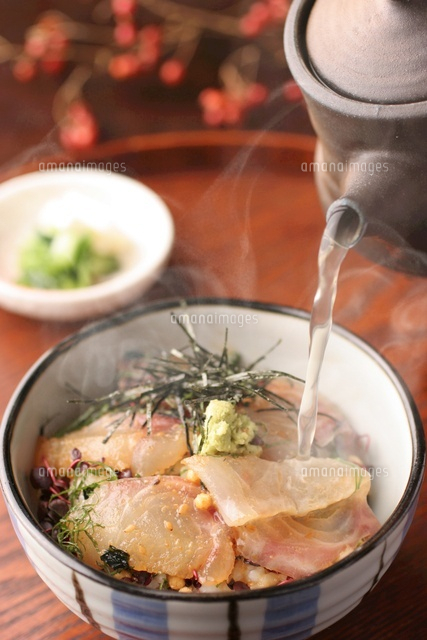
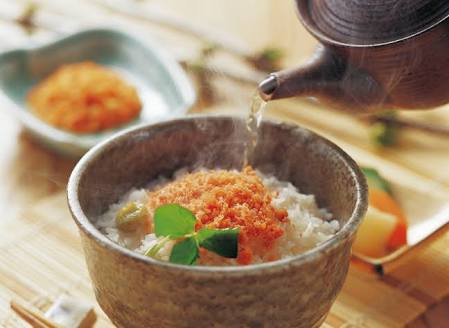
✴49→◆ちらし寿しー
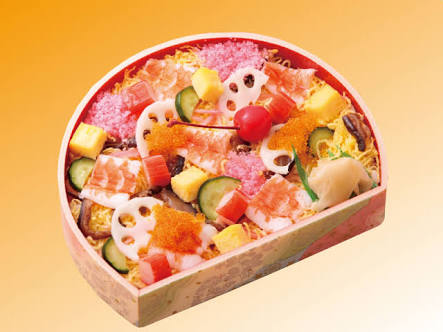
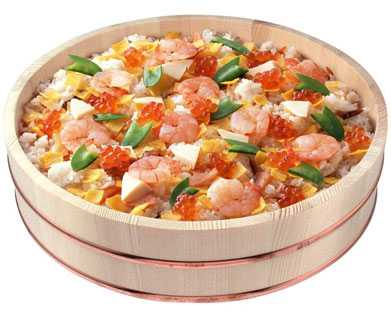
ー
✴50→◆にぎり寿し
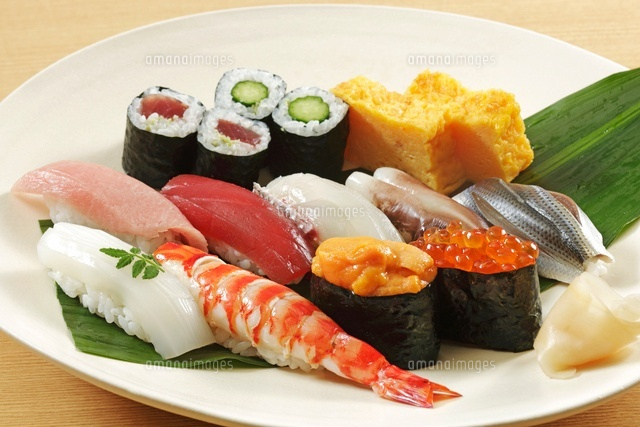
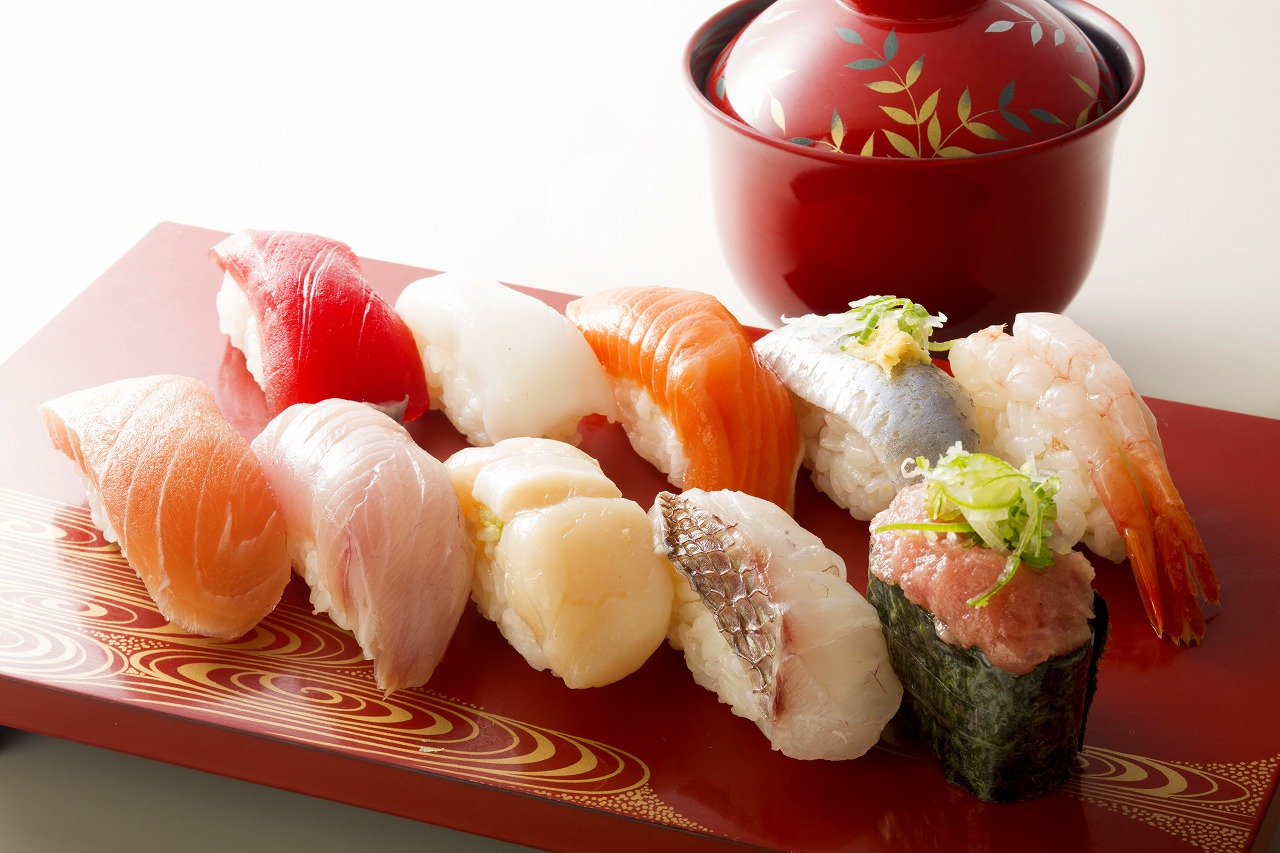
ー
✴51→◆巻き寿し
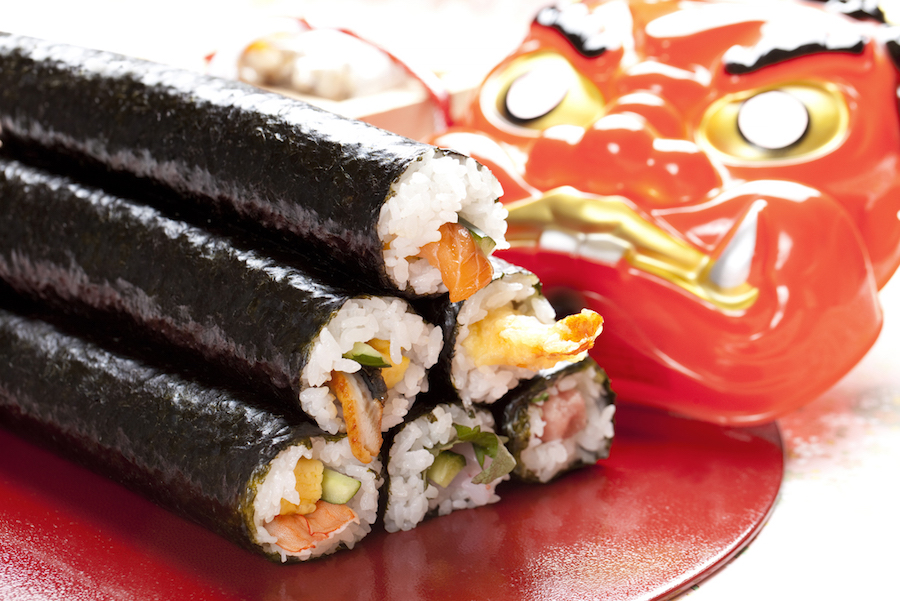
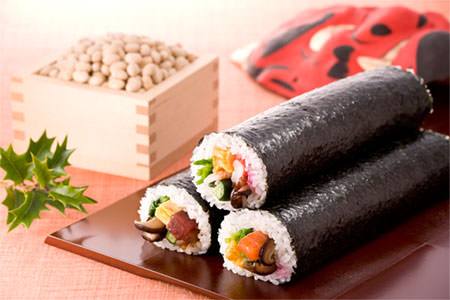
ー
✴52→◆いなり寿し
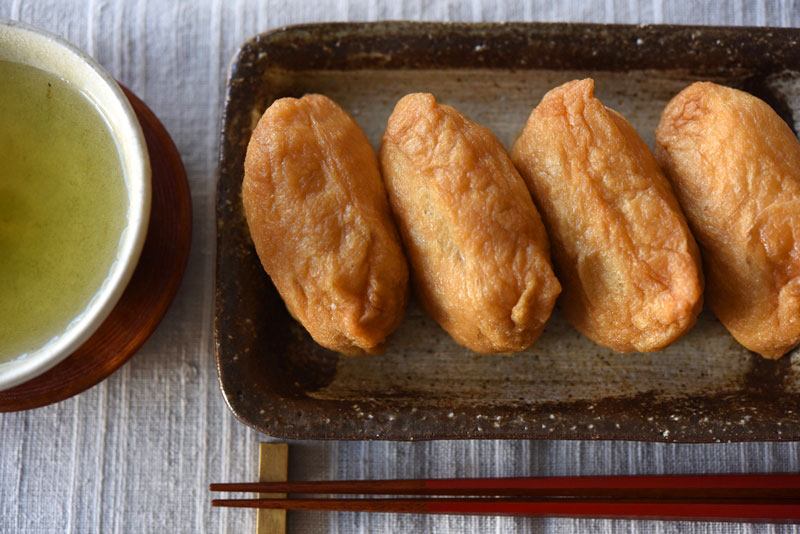
ー
✴53→◆手巻き寿し
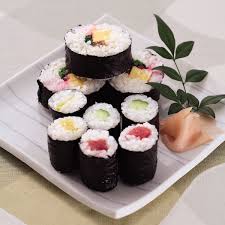
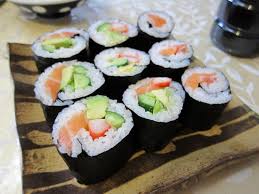
ー
✴54→豆腐とわかめ味噌汁
✴55→◆あさりと長ねぎー
✴56→◆豚汁ーMiso Soup with Pork and Vegetables.
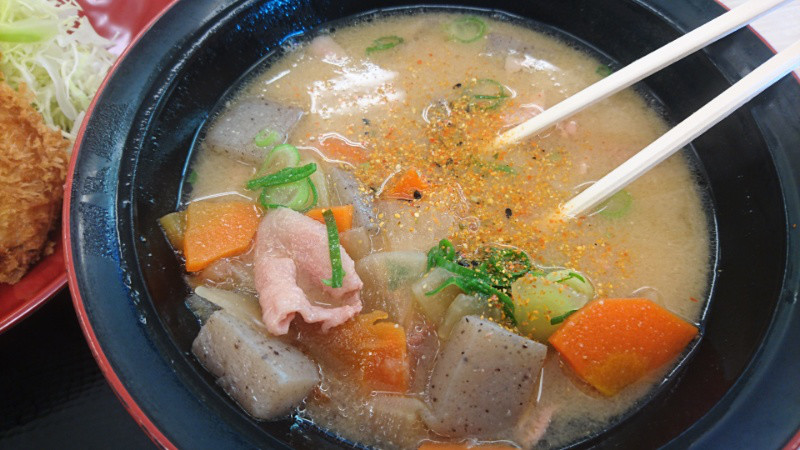
Good aroma of miso,and plenty of vegetables!!
✴57→◆けんちん汁
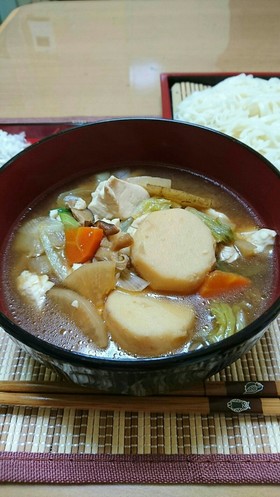
✴58→◆はまぐりのお吸い物
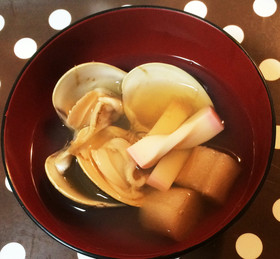
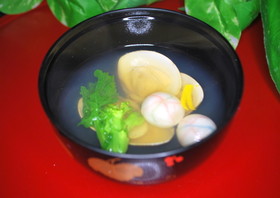
✴59→◆関東風ぞう煮ー
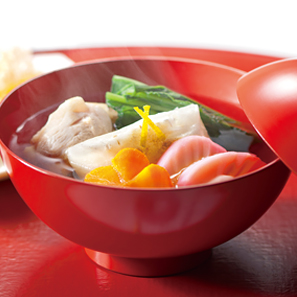
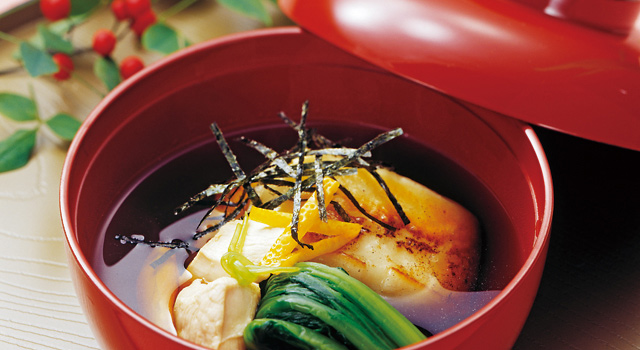
✴60→◆冷ややっこー
✴61→◆湯豆腐ー
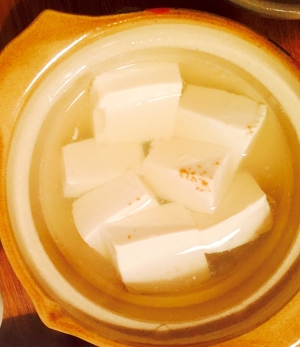
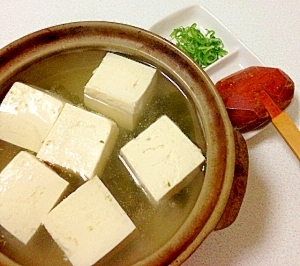
✴62→◆豆腐田楽ー
✴63→◆揚げ出し豆腐ー
✴64→◆肉豆腐ー
✴65→◆豆腐ステーキとトマトソースー
✴66→◆茶碗蒸しーChawan-Mushi, Savory cup Custard.
A dish that gives
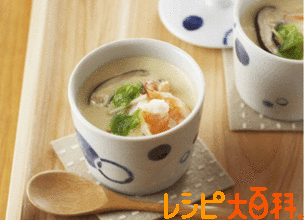
✴67→◆あさりの酒蒸しー
✴68→◆あまだいのかぶら蒸し
✴69→◆鮭のオイル蒸しー
✴70→◆かきのホイル蒸しー
✴71→◆金目鯛の姿蒸しー
✴72→◆鶏ささみのごま酢かけー
✴73→◆きゅうり、わかめ、しらすの甘酢あえ
✴74→◆小柱とわけぎのぬた
✴75→◆いんげんのごまあえーKidney Beans with Sesame Dressing
✴76→◆マカロニサラダーMacaroni Salad
✴77→◆ポテトサラダーPotato Salad
✴78→◆きつねうどんーUdon Noodles with deep-fried Tofu.
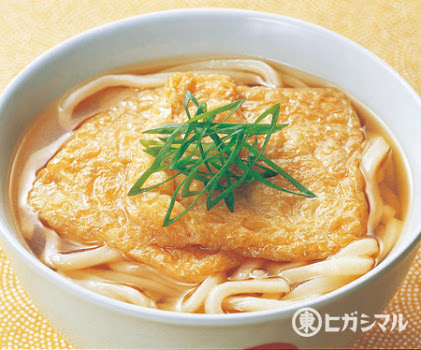
✴79→◆天ぷらそば
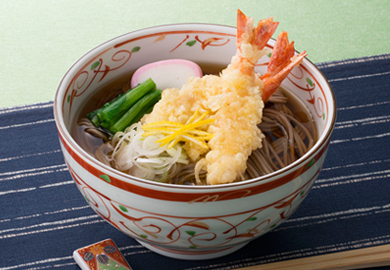
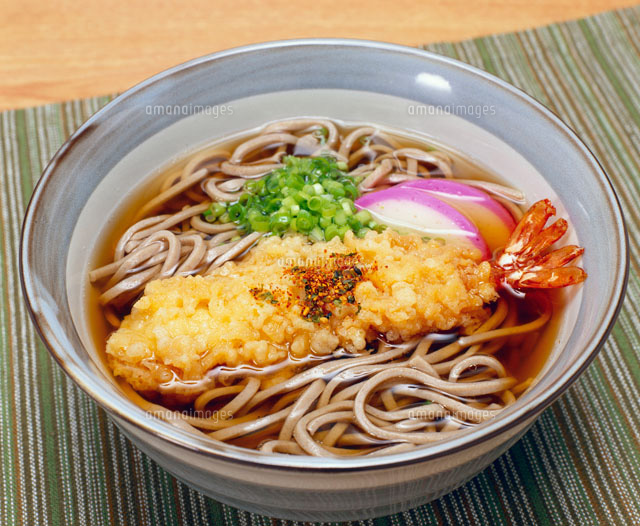
✴80→◆ざるそば
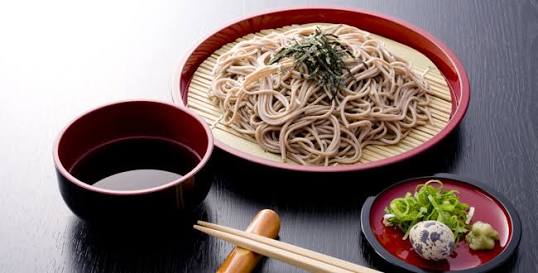
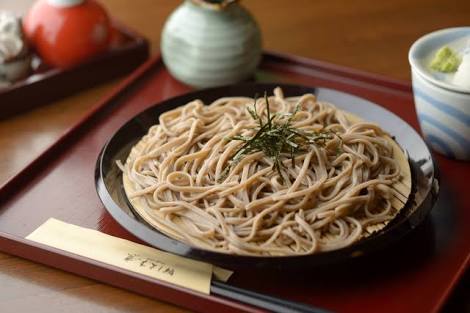
✴81→◆焼きうどん
✴82→◆焼きそば
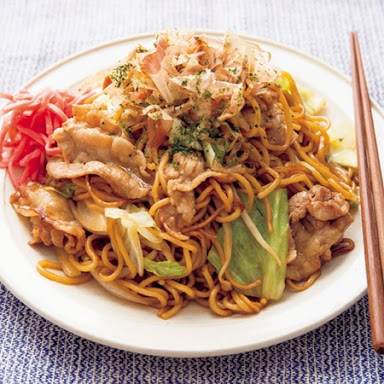
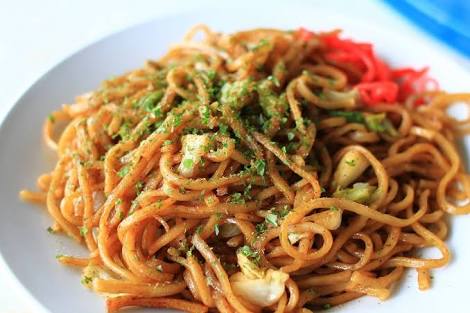
✴83→◆冷やしそうめんーChilled Fine Noodle
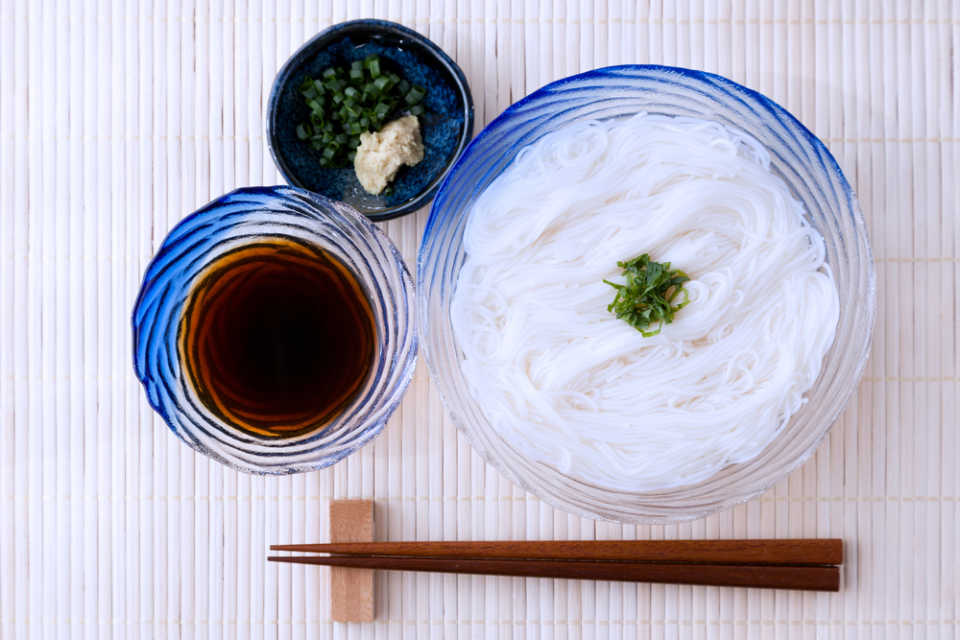
✴84→◆鍋焼きうどんーUdon Noodle in the Pot.
✴85→◆すき焼き(関東風)ーSukiyaki,Kanto-style
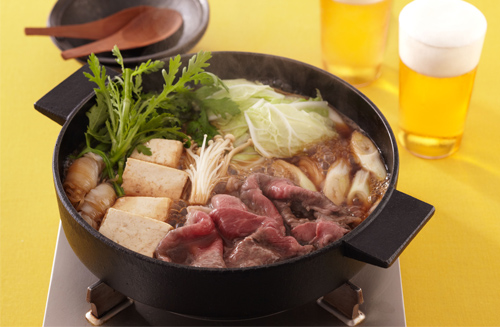
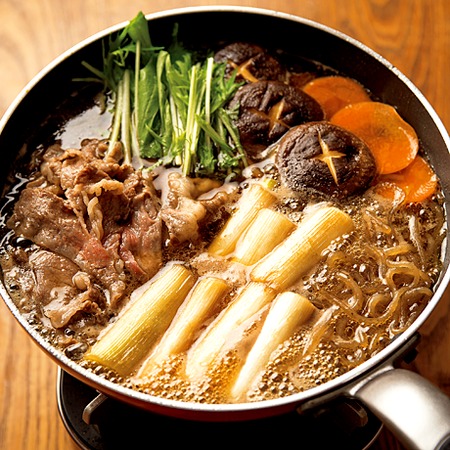
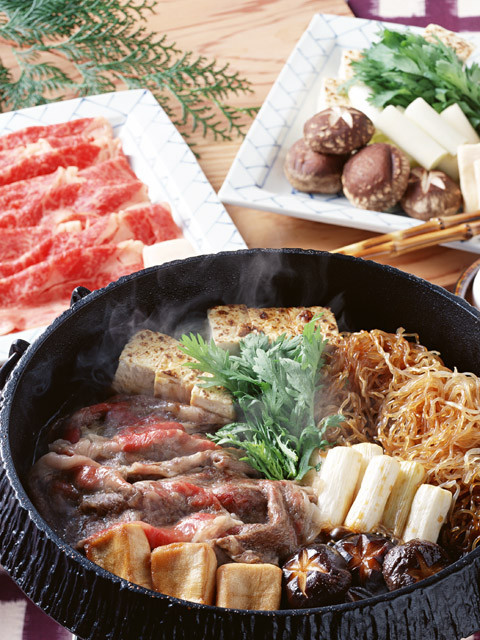
✴86→◆しゃぶしゃぶー
●肉は主として牛肉であるが、その他にも豚肉や鶏肉、またフグ、タコやブリ、タイ、ズワイガニなどの魚介類も用いられる。牛肉を用いたものを「牛しゃぶ」、豚肉を用いたものを「豚しゃぶ」ともいう。生肉として食せる鮮度の肉を使用する。
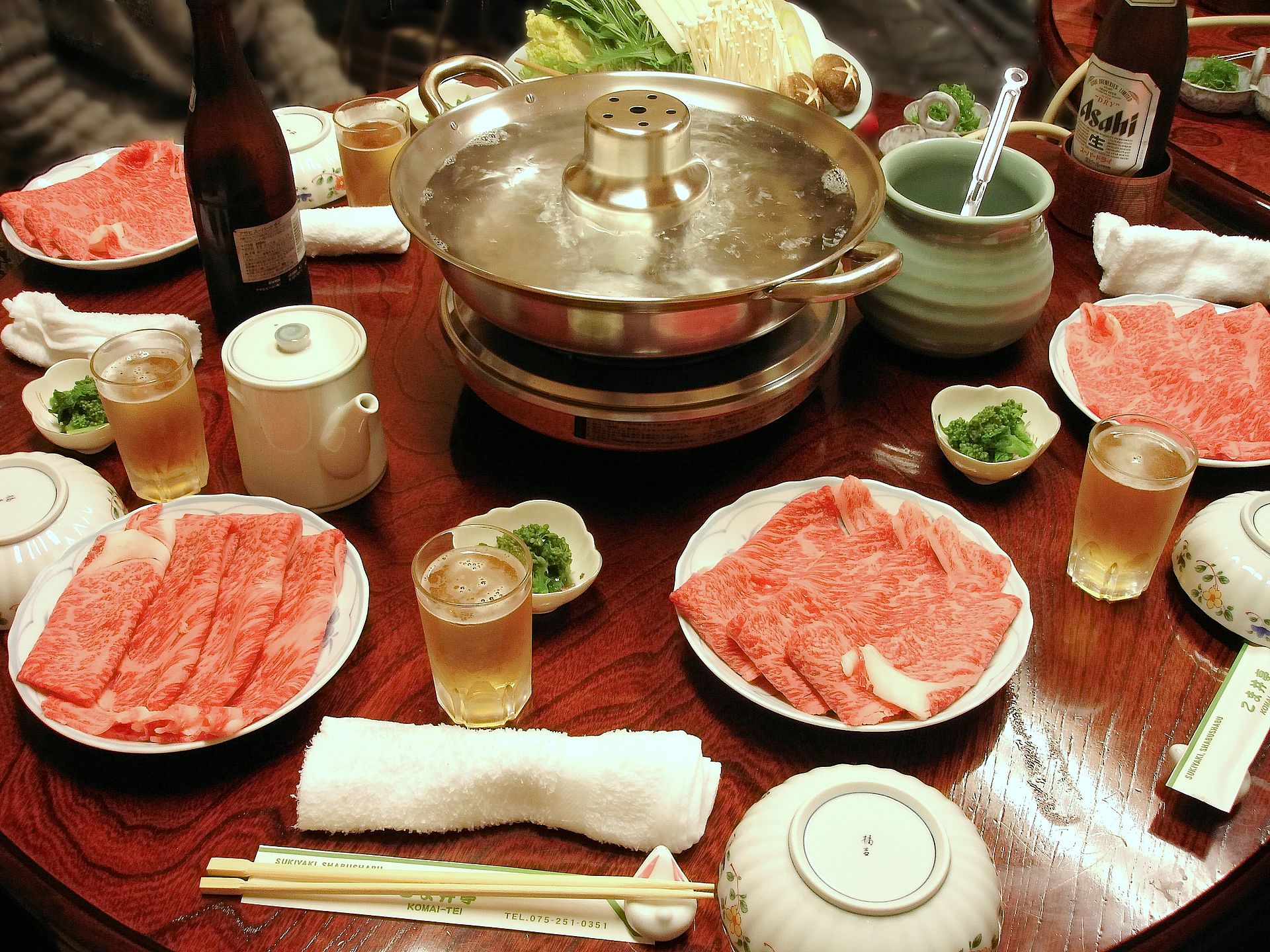

✴87→◆寄せ鍋
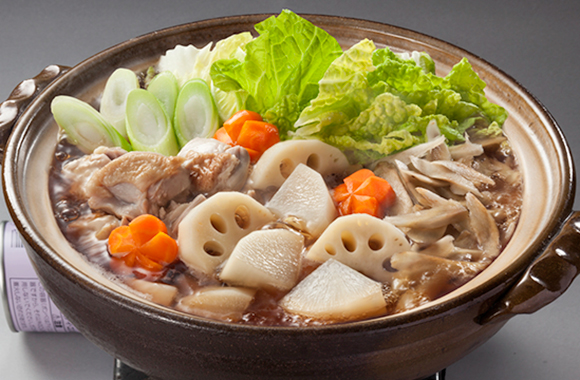
✴88→◆鶏の水炊き
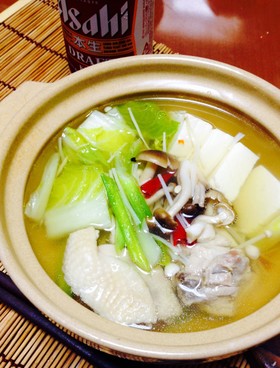
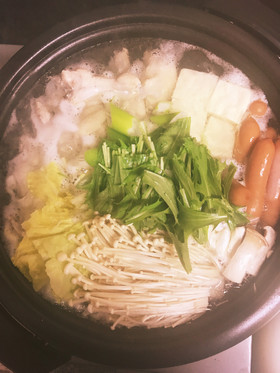
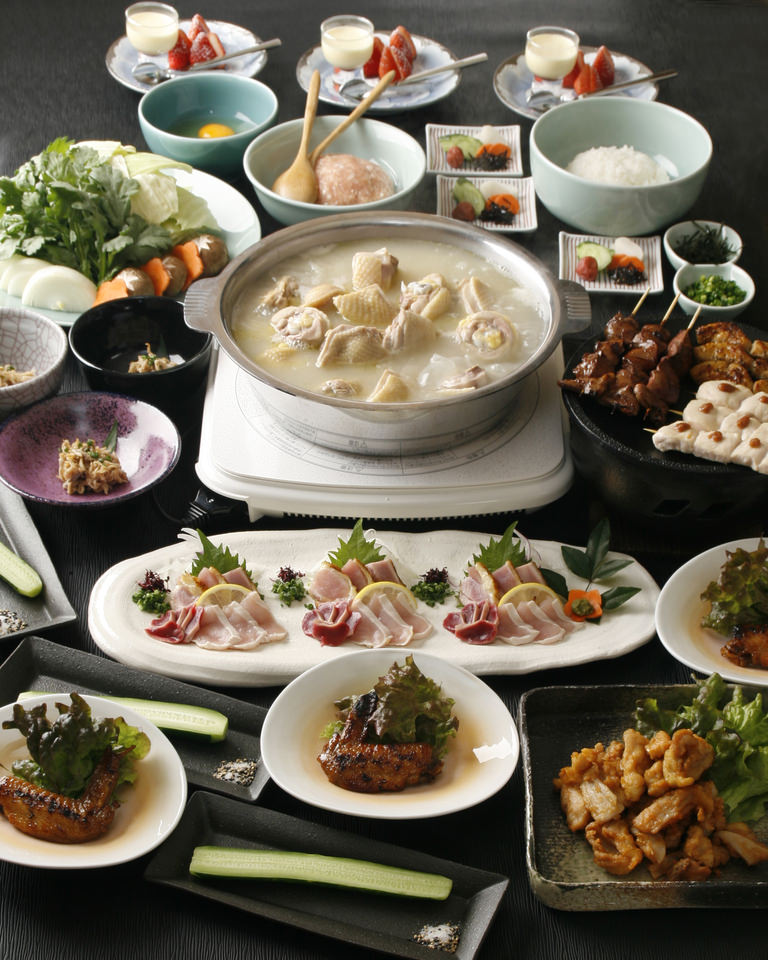
ー
✴89→◆おでん
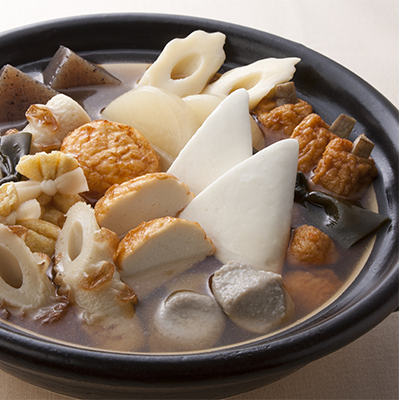
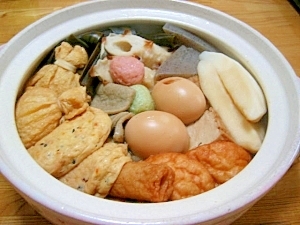
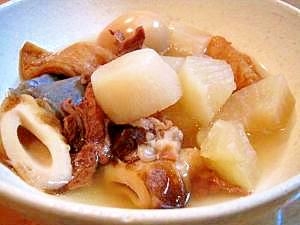
✴90→◆紅白なます
✴91→◆栗きんとん
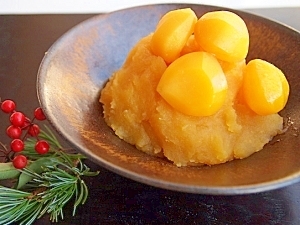
✴92→◆黒豆煮
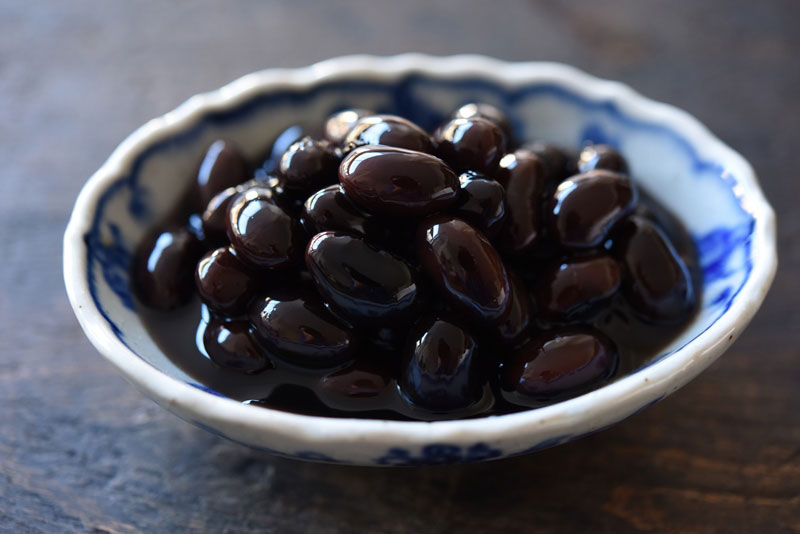
✴93→◆数の子
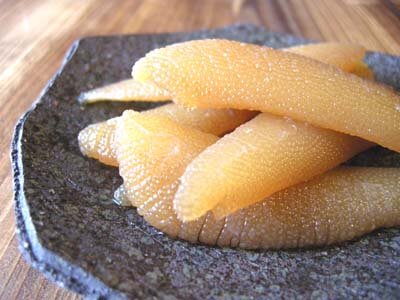
✴94→◆ぜんざい
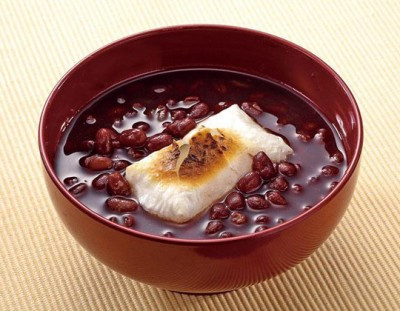
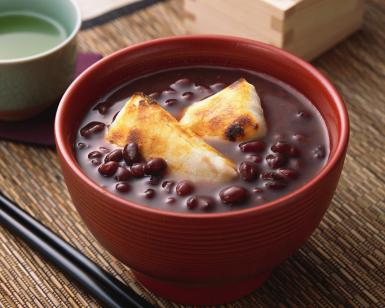
✴95→◆豆腐だんご
✴96→◆草もち
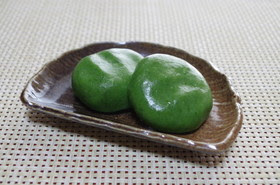
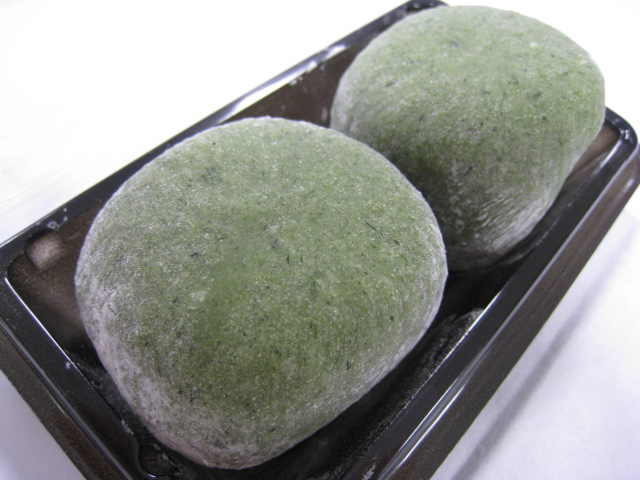
✴97→◆大学いも
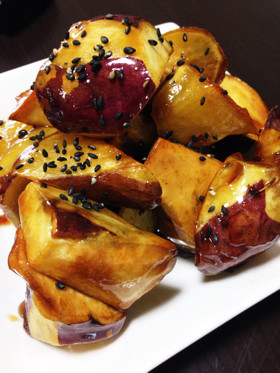
✴98→◆アスパラのごまあえ
✴99→◆和風カレーライスー
✴100→◆刺し身ー
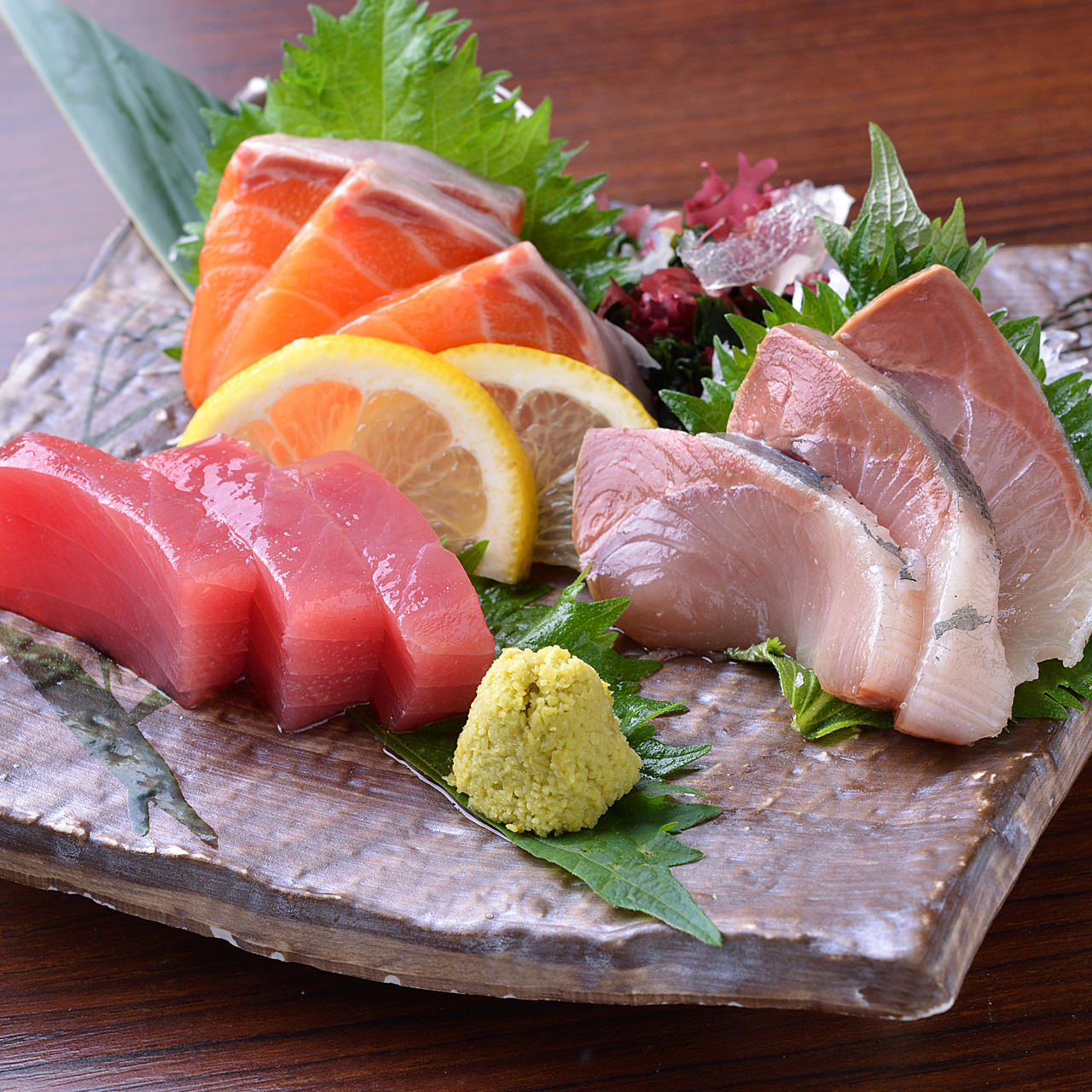
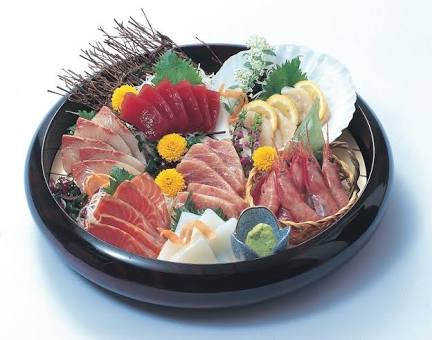
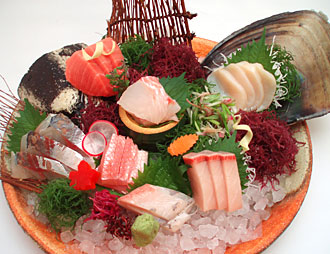
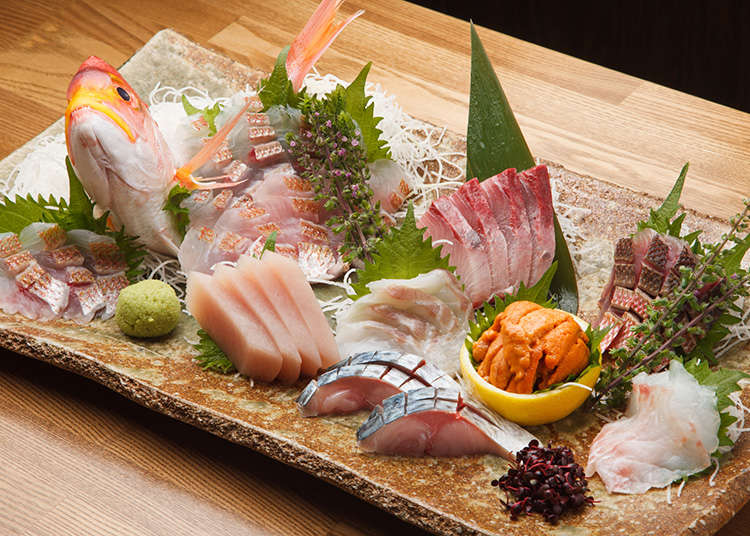
✴ー101→◆おろし冷やしそば
✴102→◆ぼたもち(おはぎ)
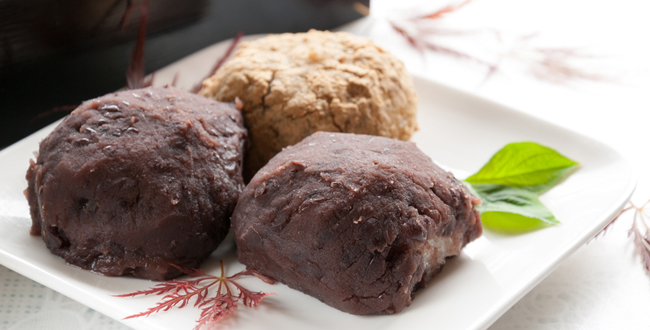
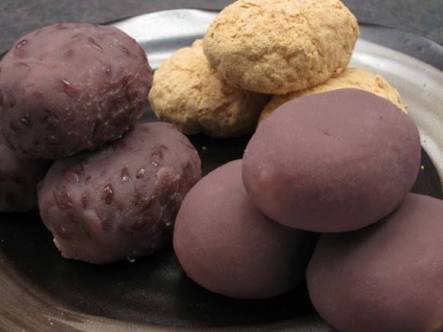
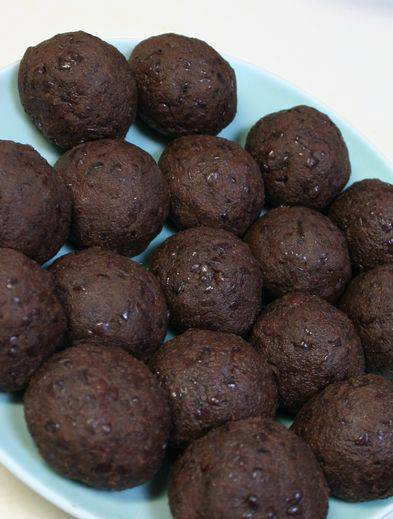
✴103→◆月見だんごー
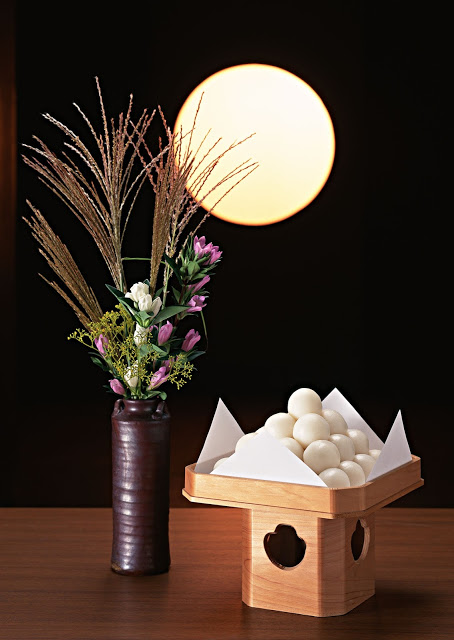
✴104→◆年越しそば
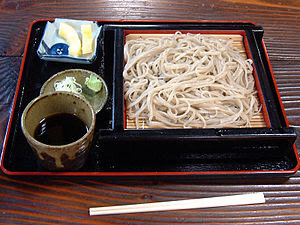
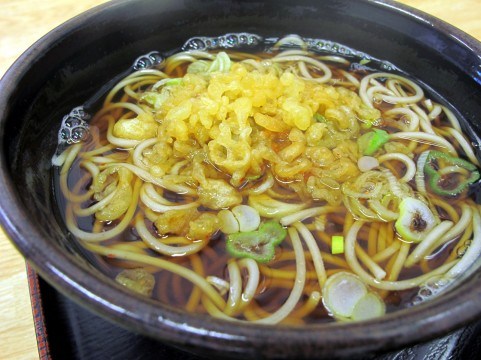
✴105→◆和風ハンバーグ
✴106→◆きのこの炊き込みご飯
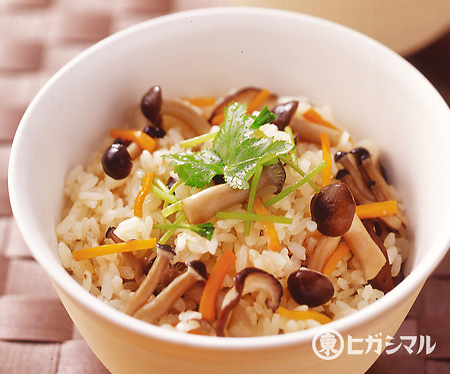
✴107→◆鶏肉の炊き込みご飯

✴108→◆関西風うどん
✴109→◆ほうれん草のおひたし
✴110→◆餃子
✴111→◆和風スパゲッティ
✴112→◆ハヤシライス
✴113→◆焼き鳥
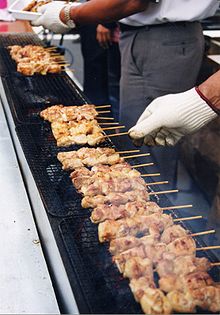
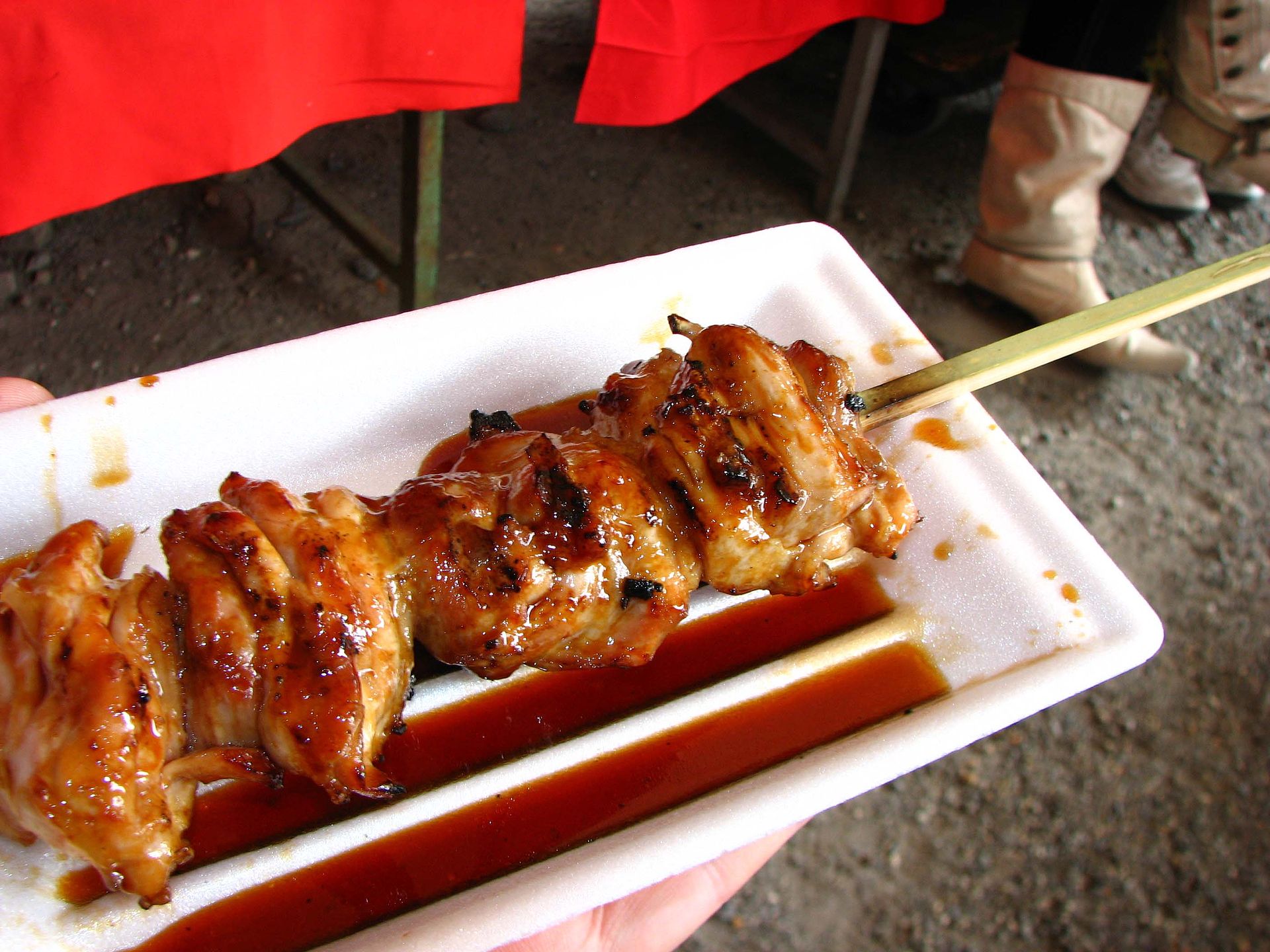
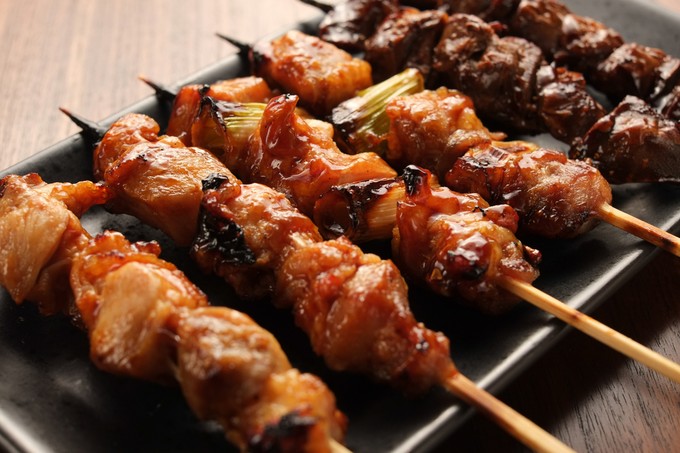
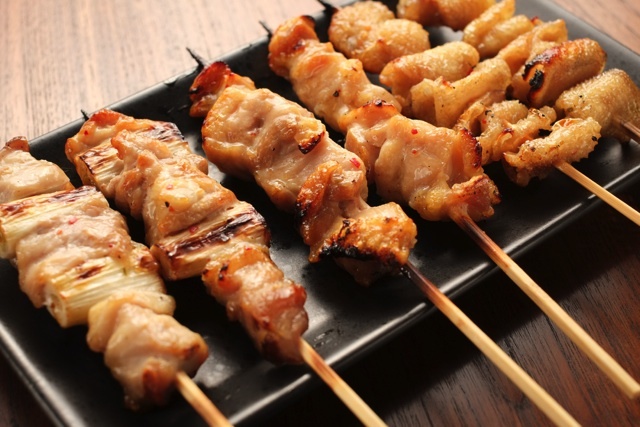
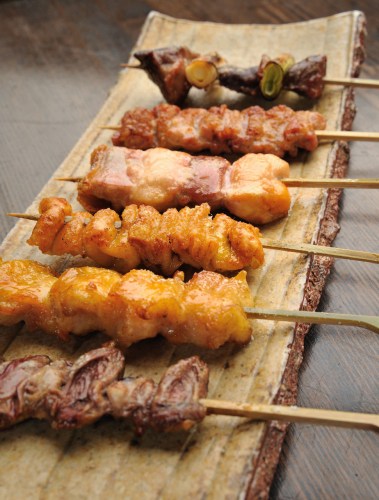
ー
✴114→◆鉄板焼肉
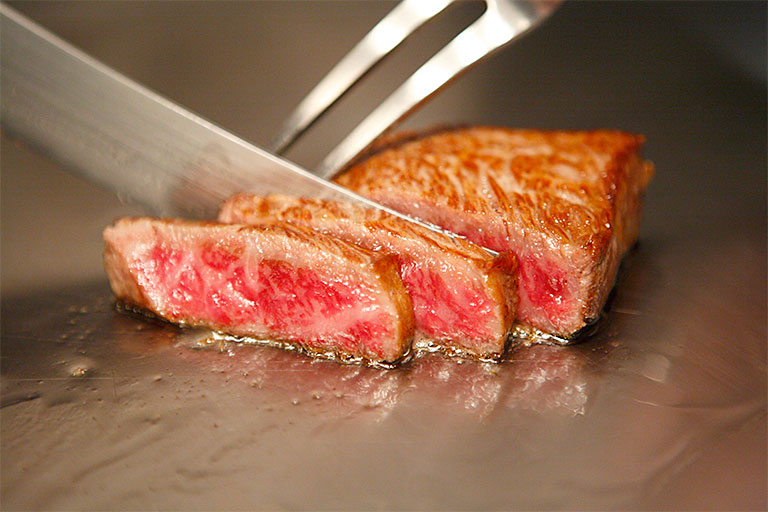
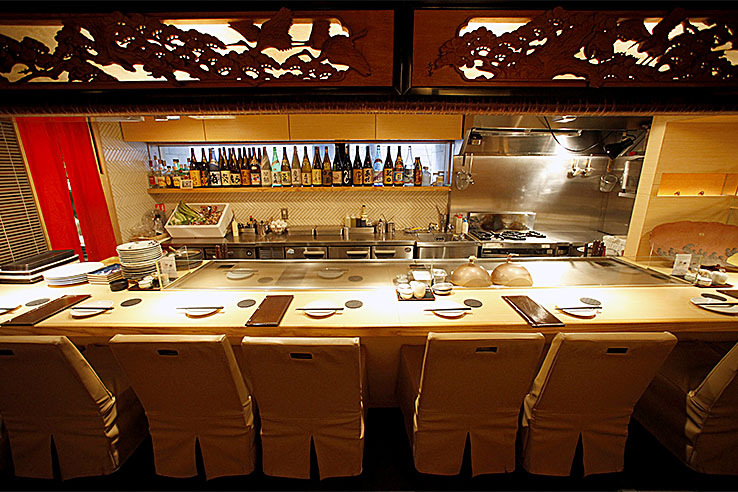

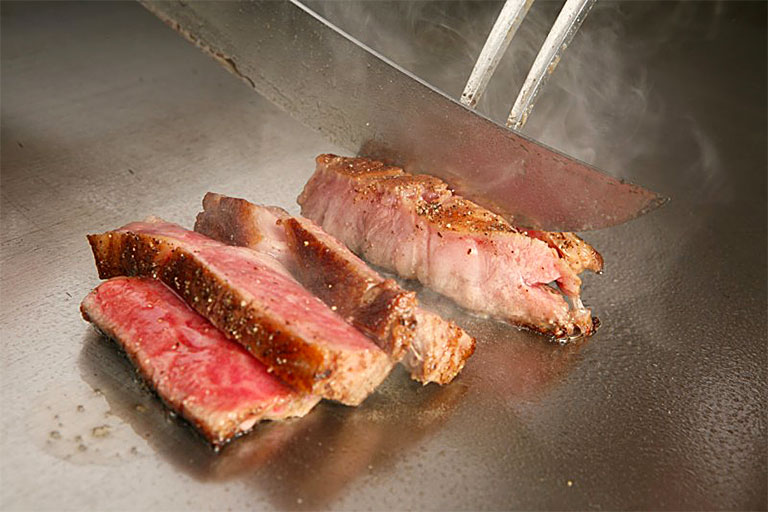
以上
◆ーWe hope this HP that for people who are intereted in Japanese cuisine.
◆ーOur hope is to increase awareness and accessibility of Japanese dishes while also promoting fun communication through cooking.
◆ーAs one of the contries with the longest life expectancy,
◆ーWe hope more people enjoy happy, healthy lives though dilicious Japanese dishes.
